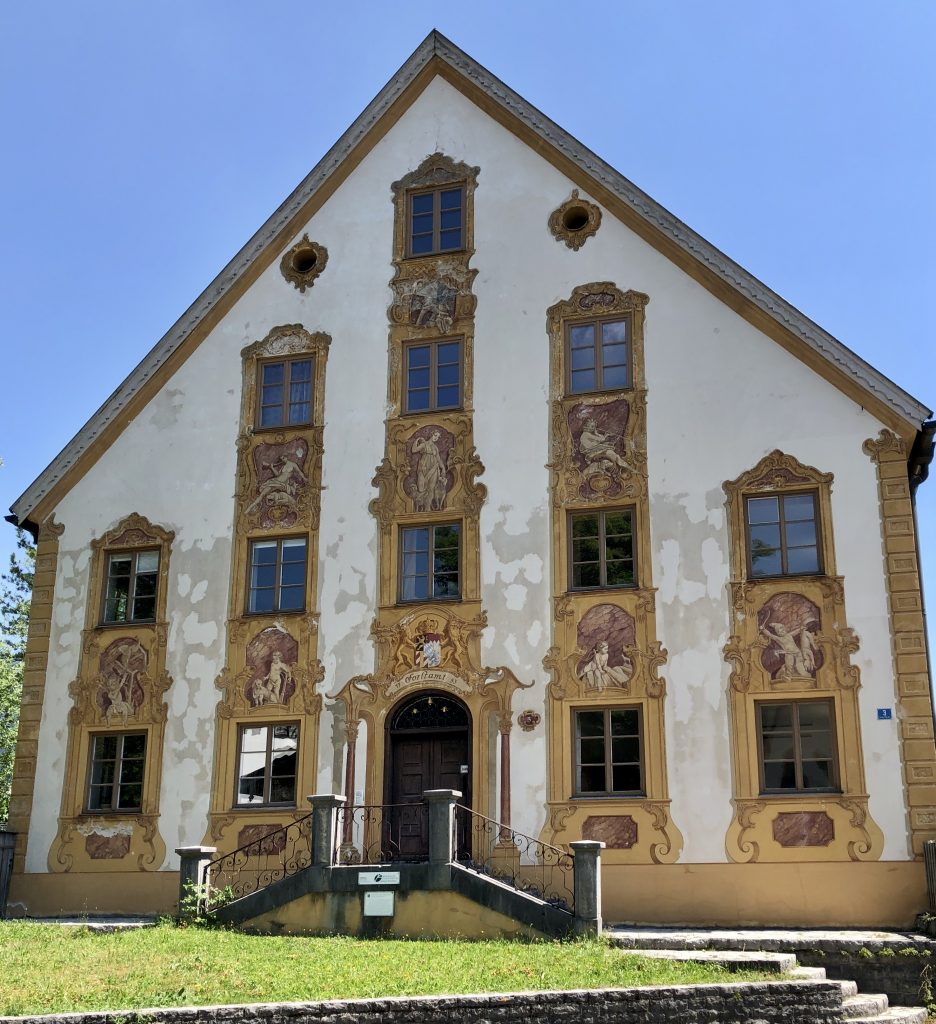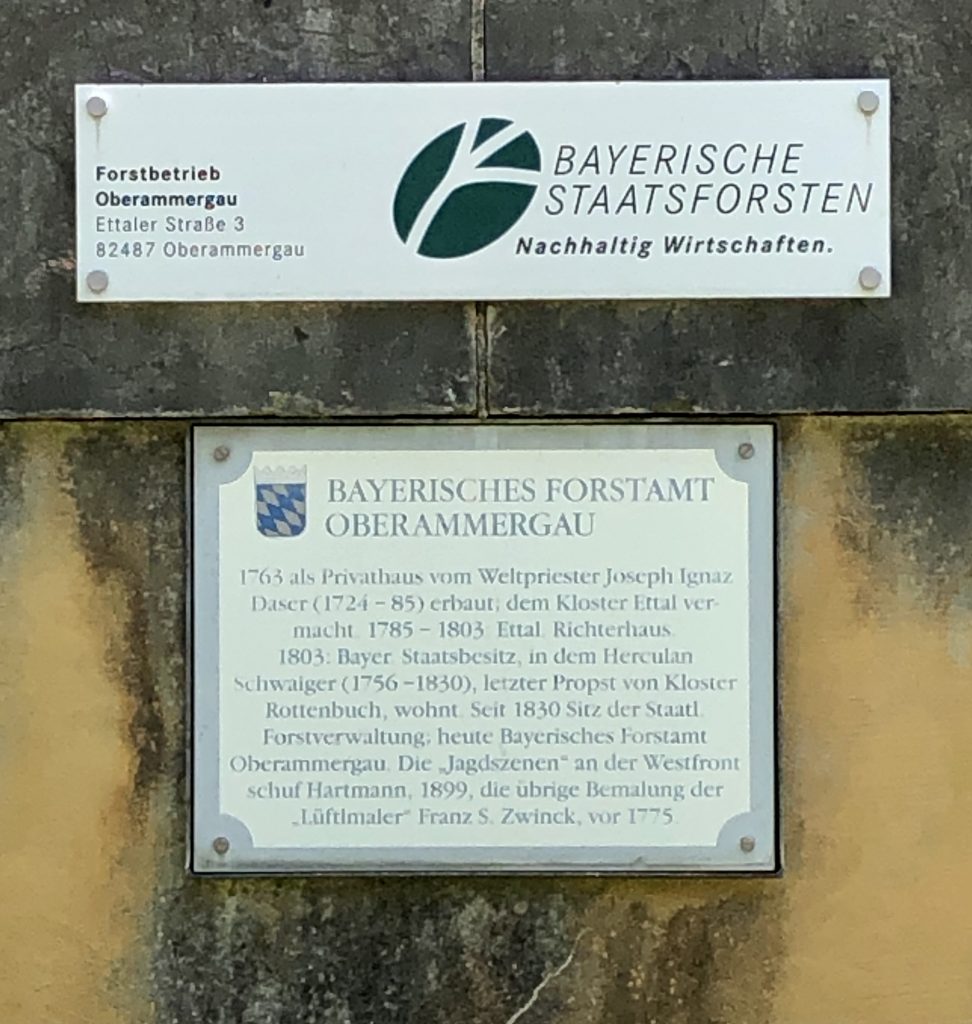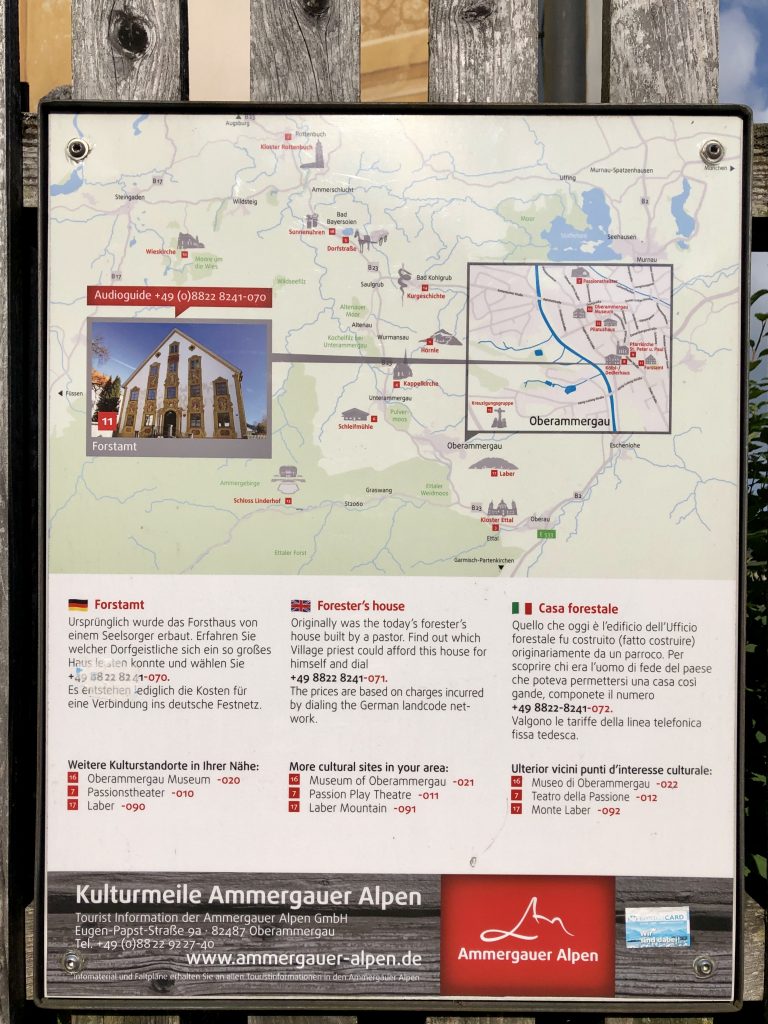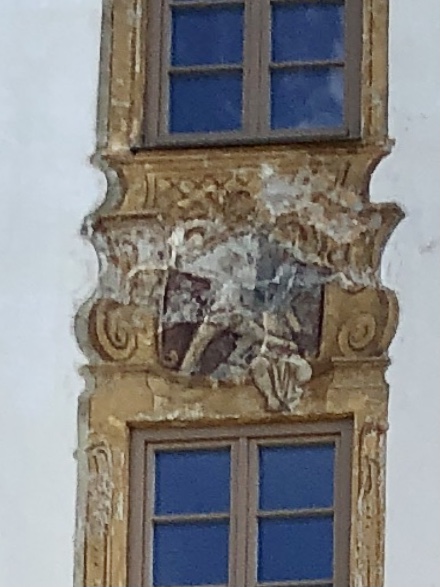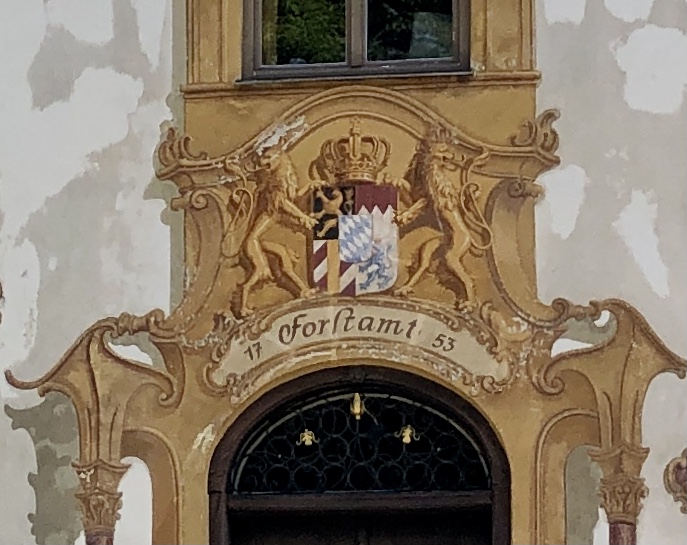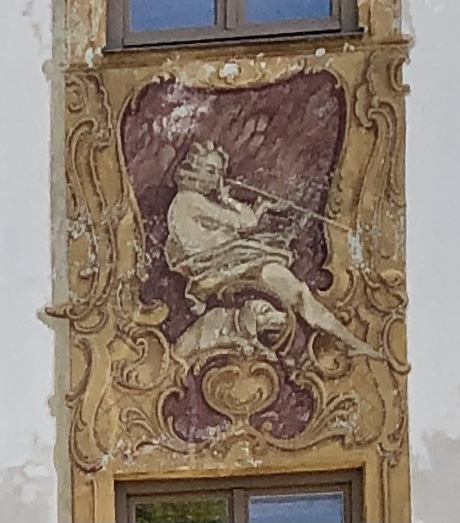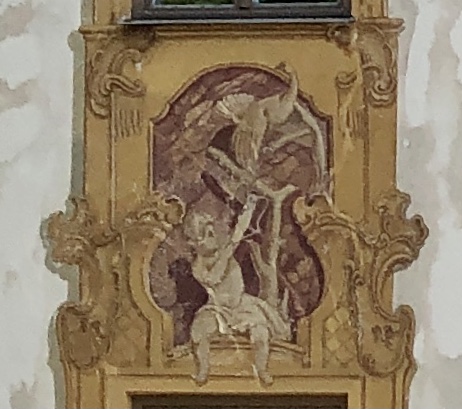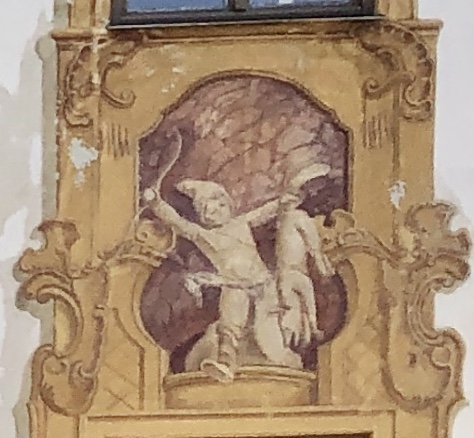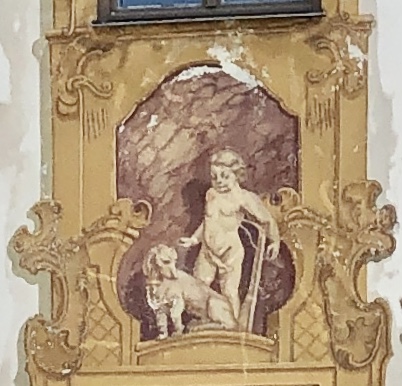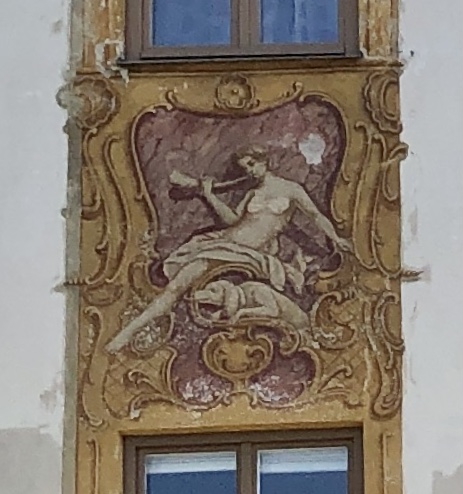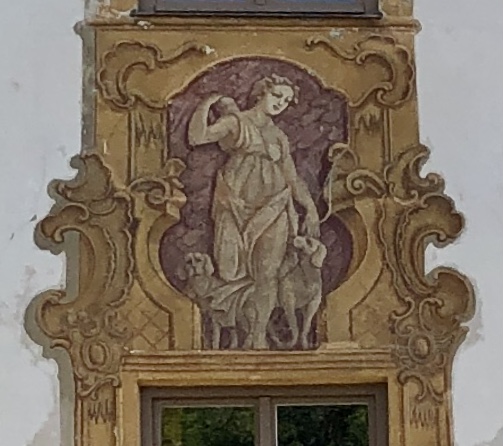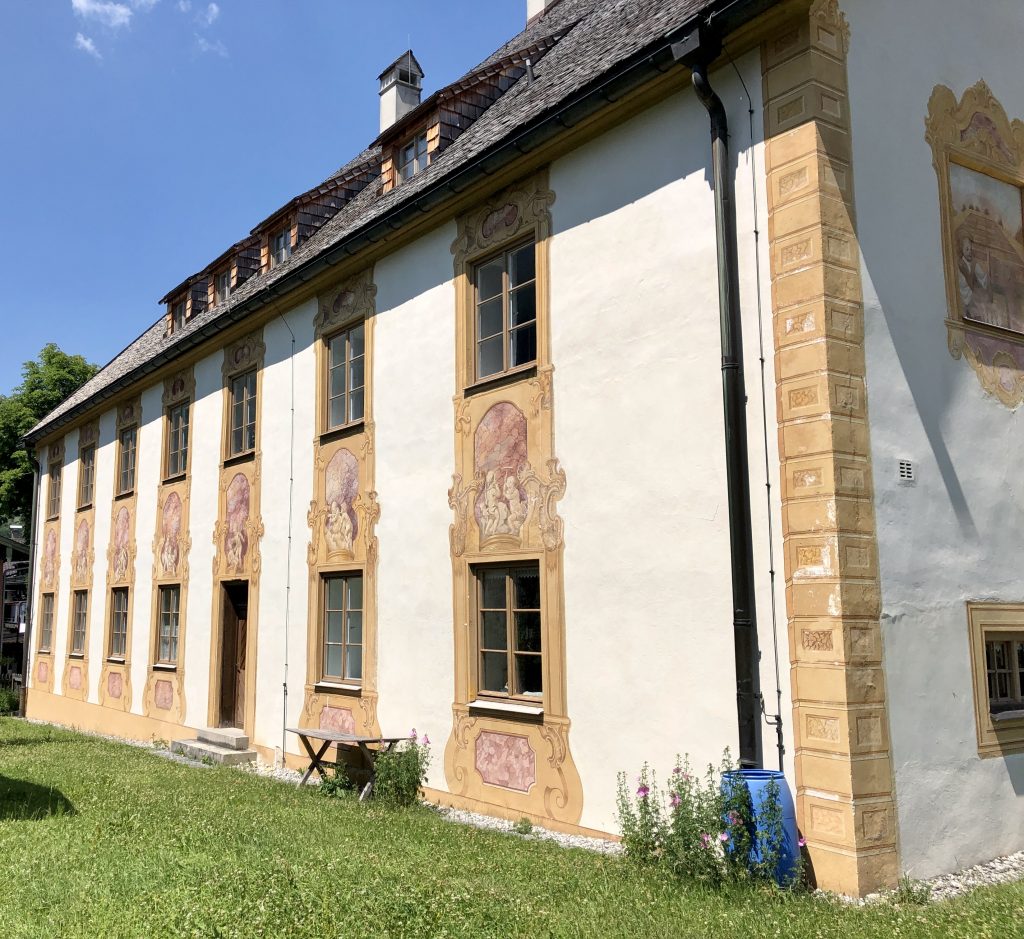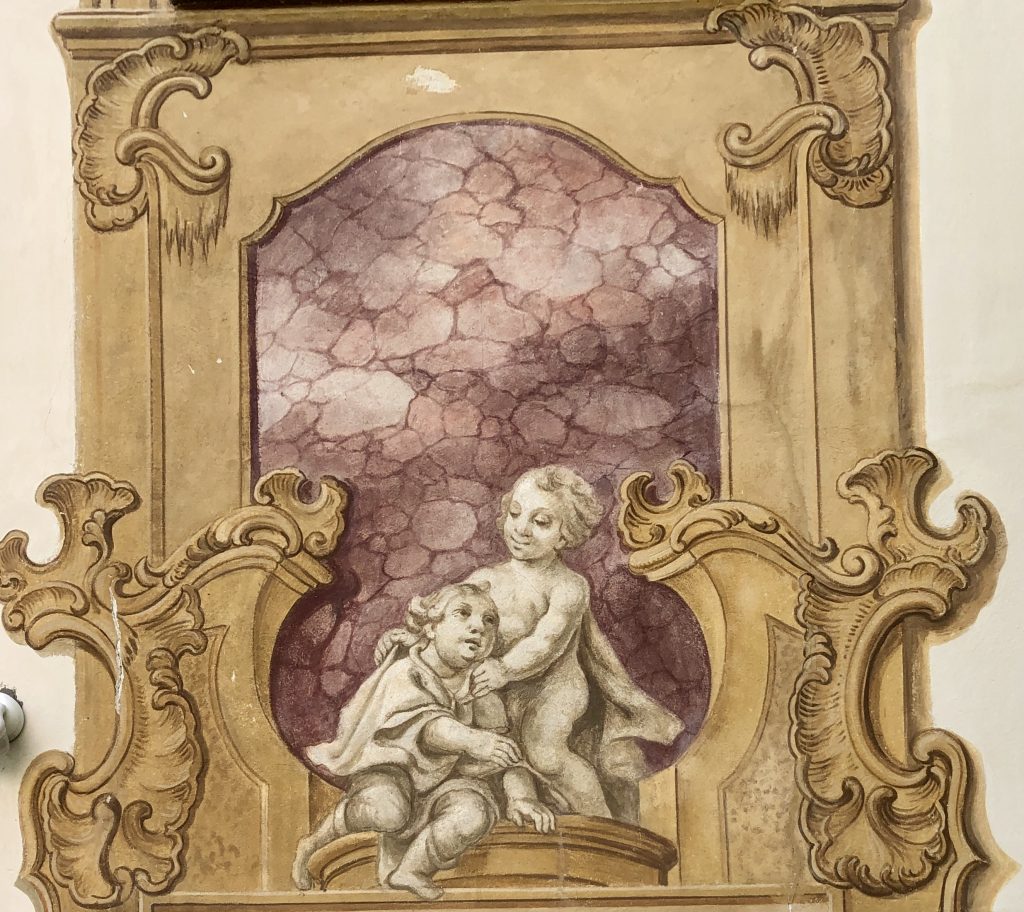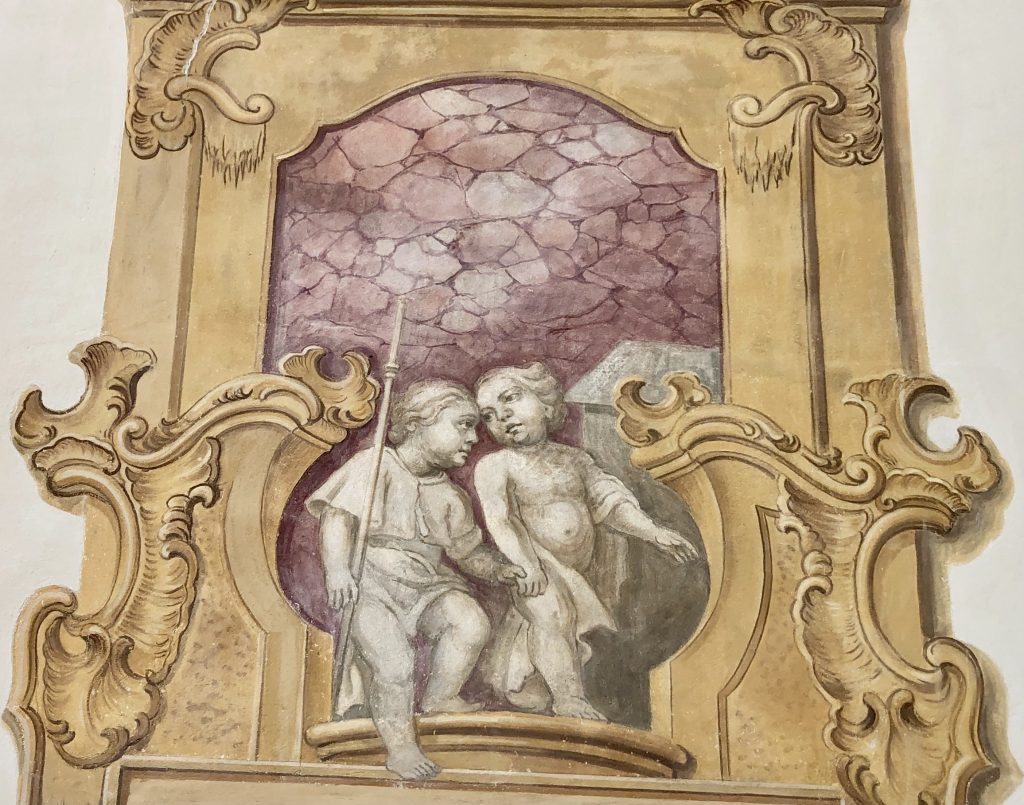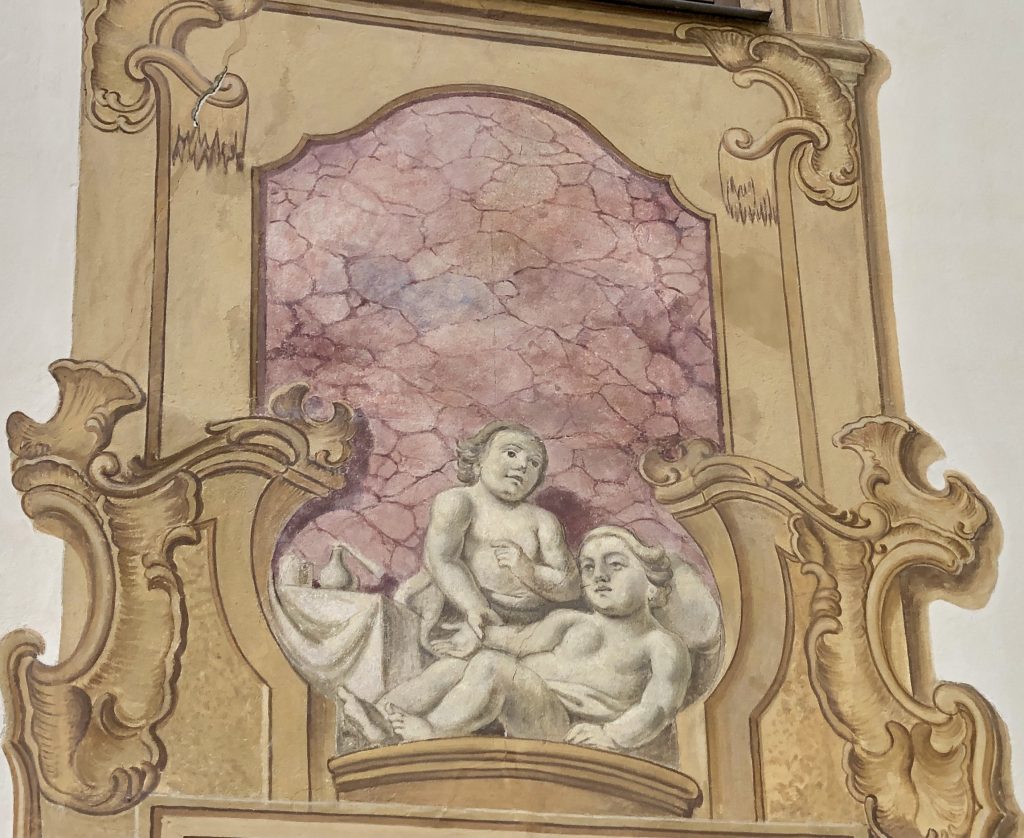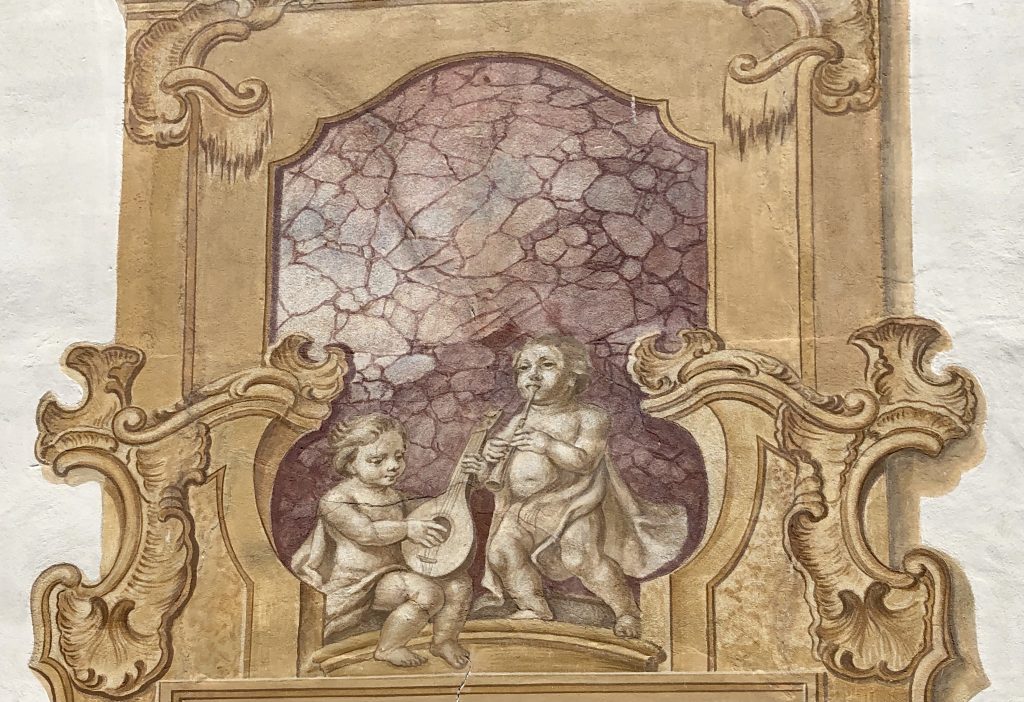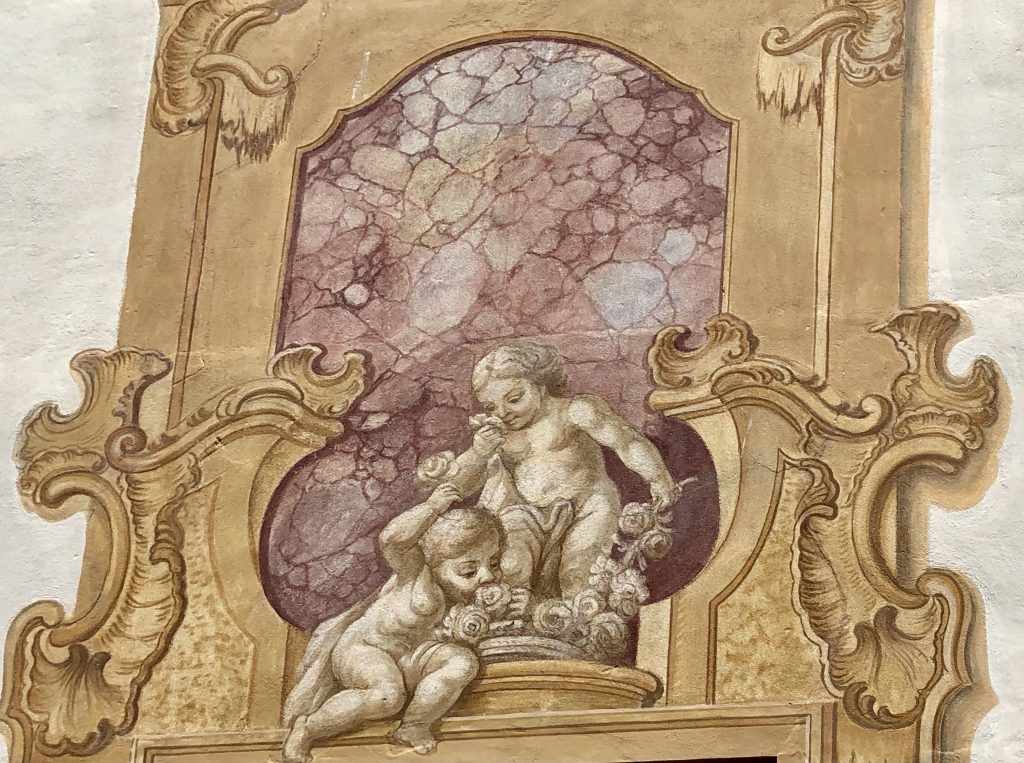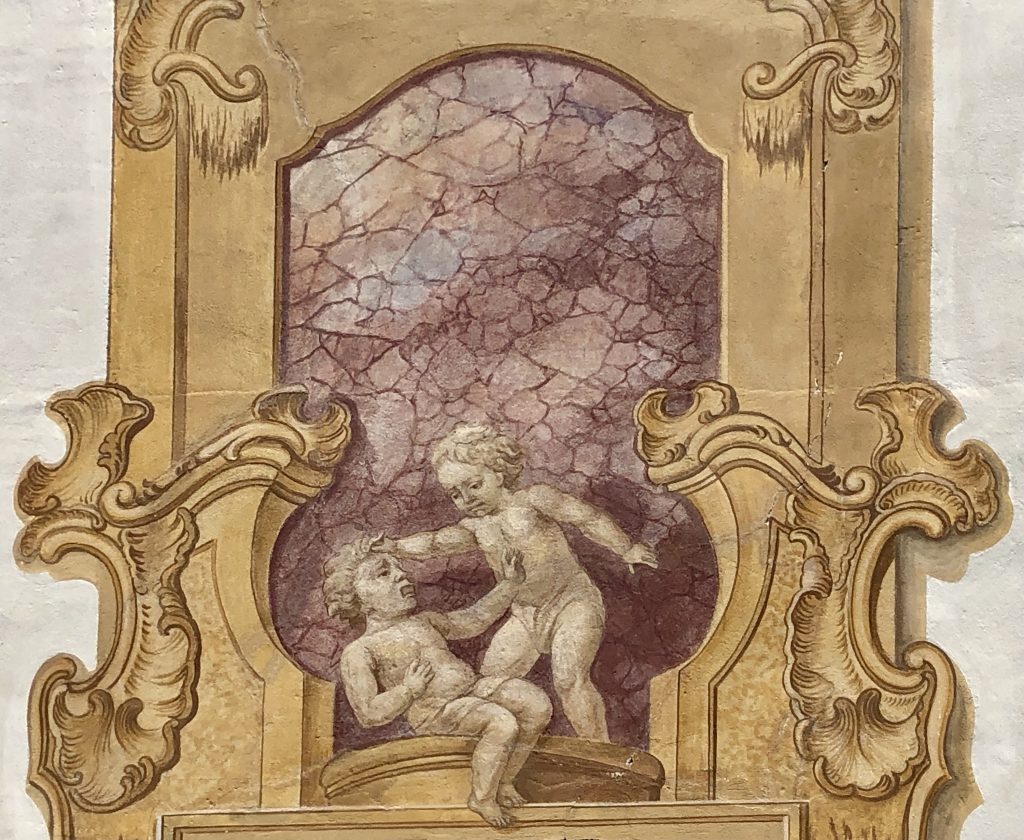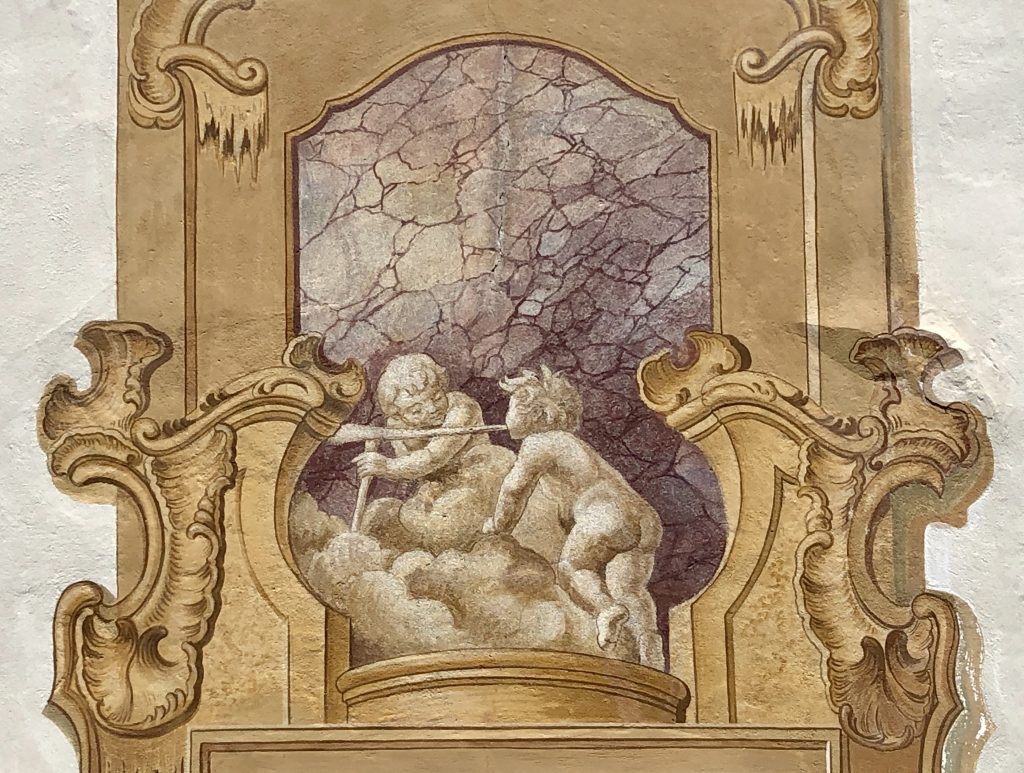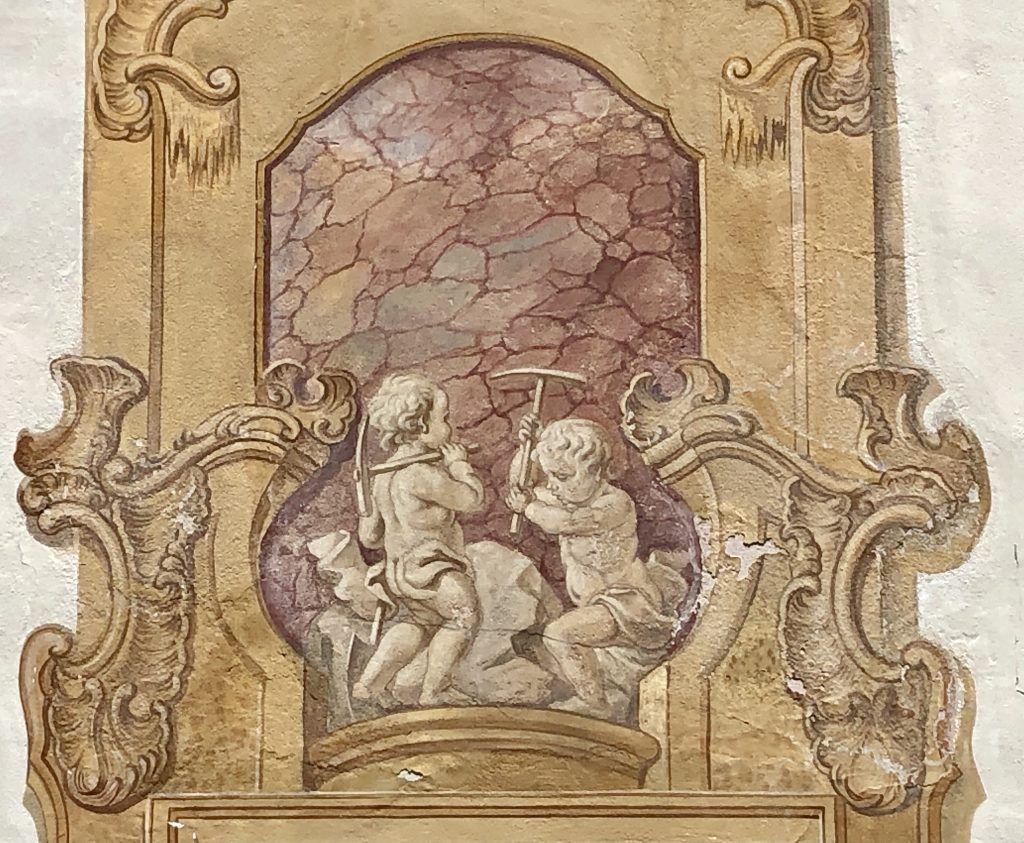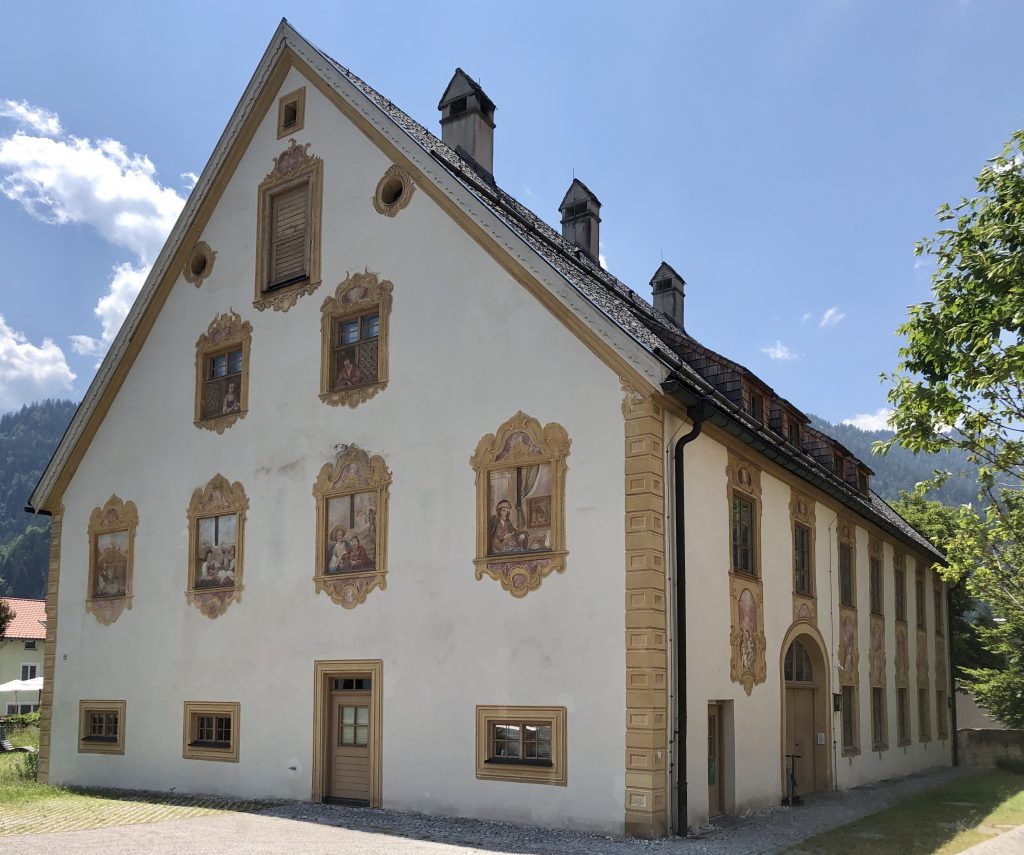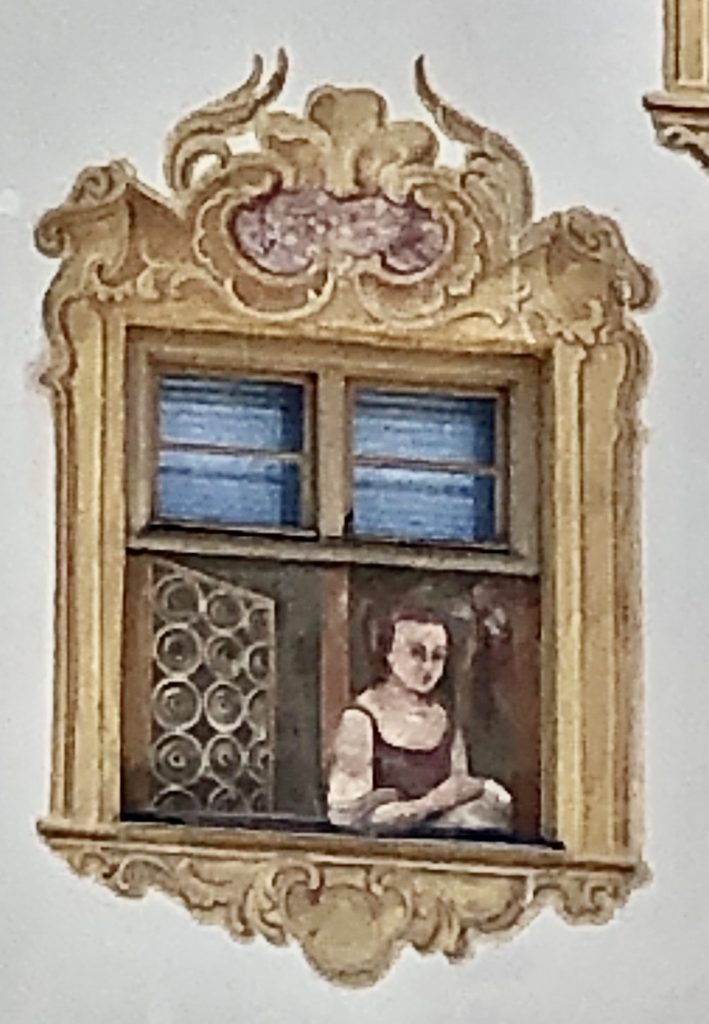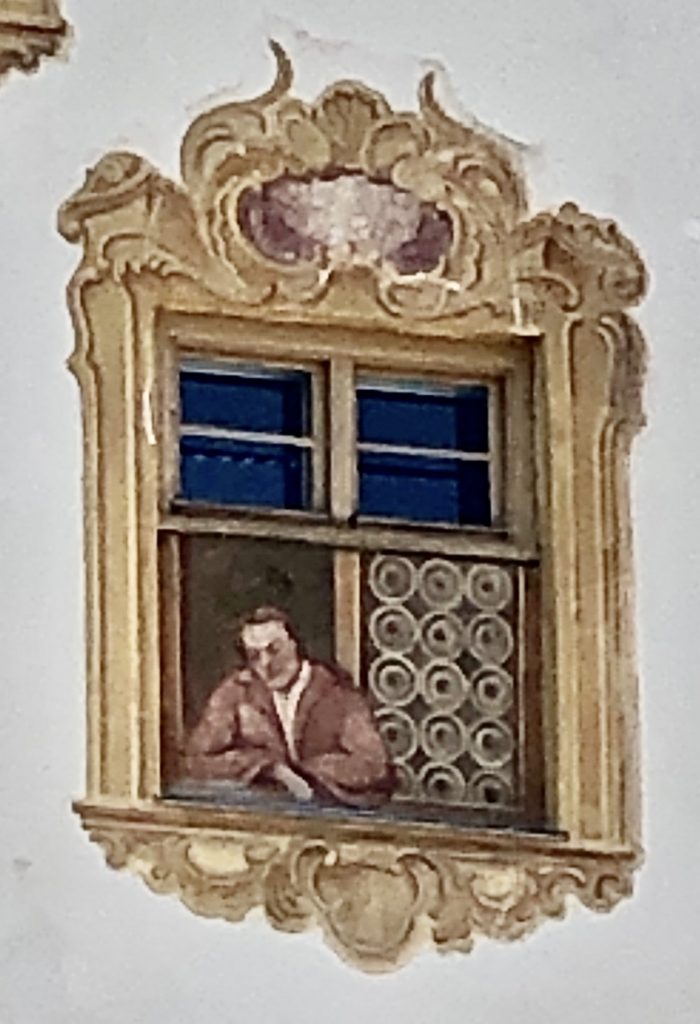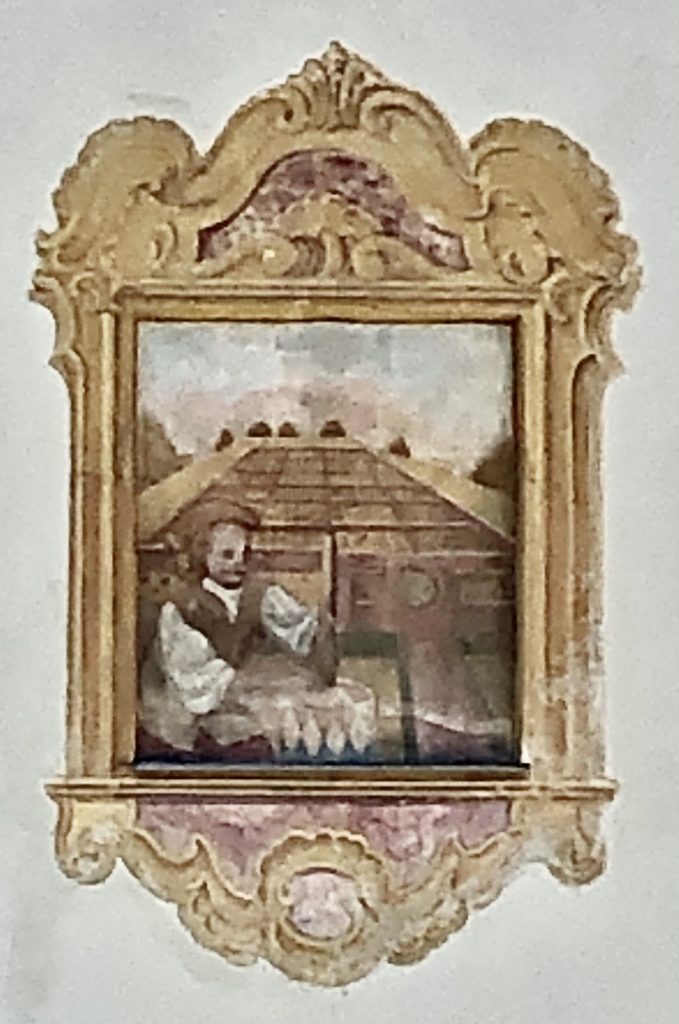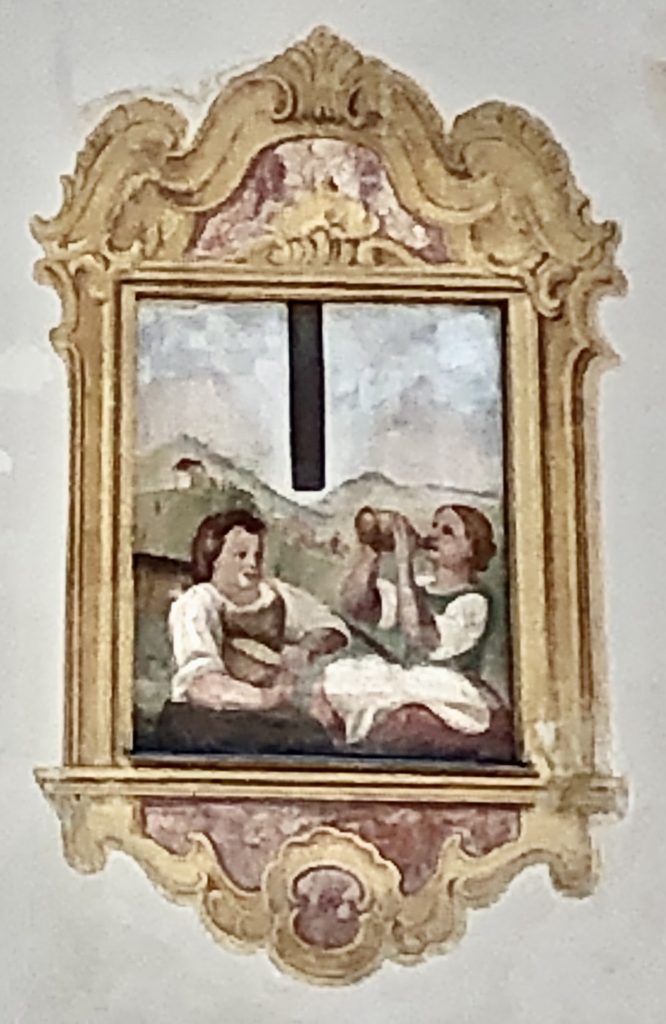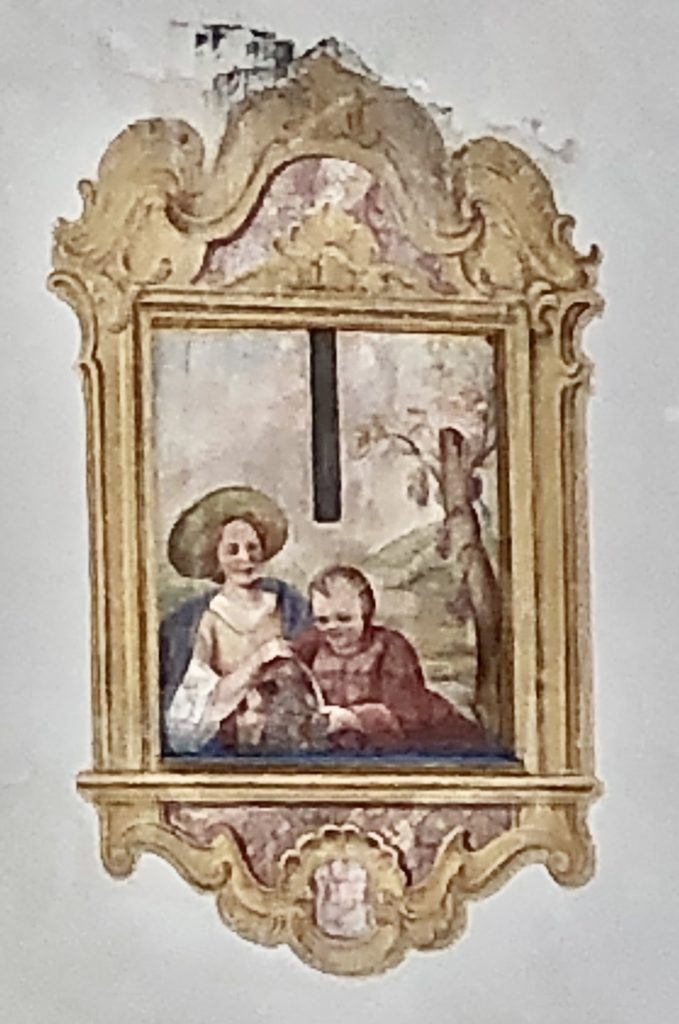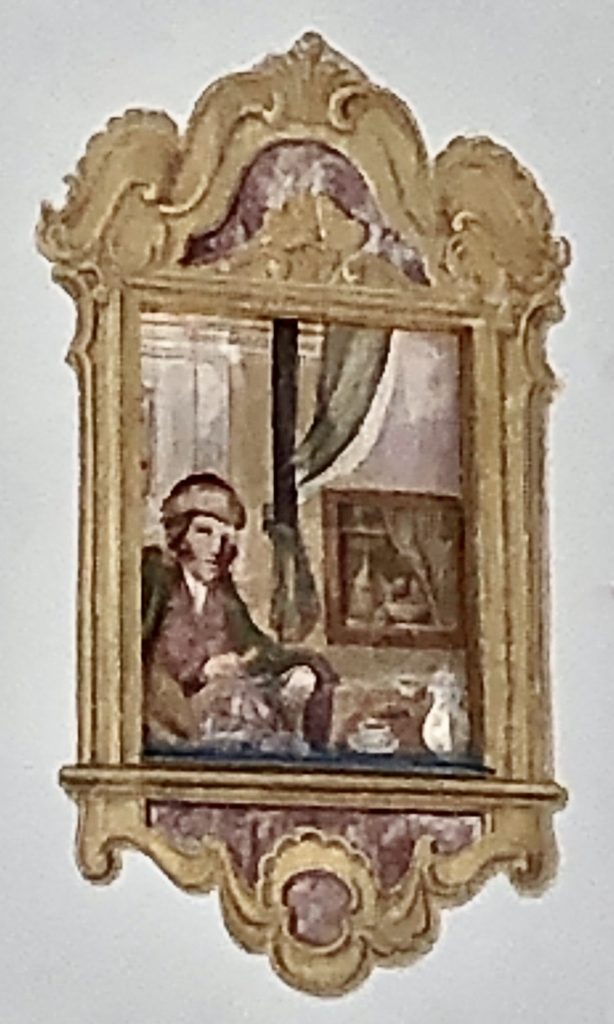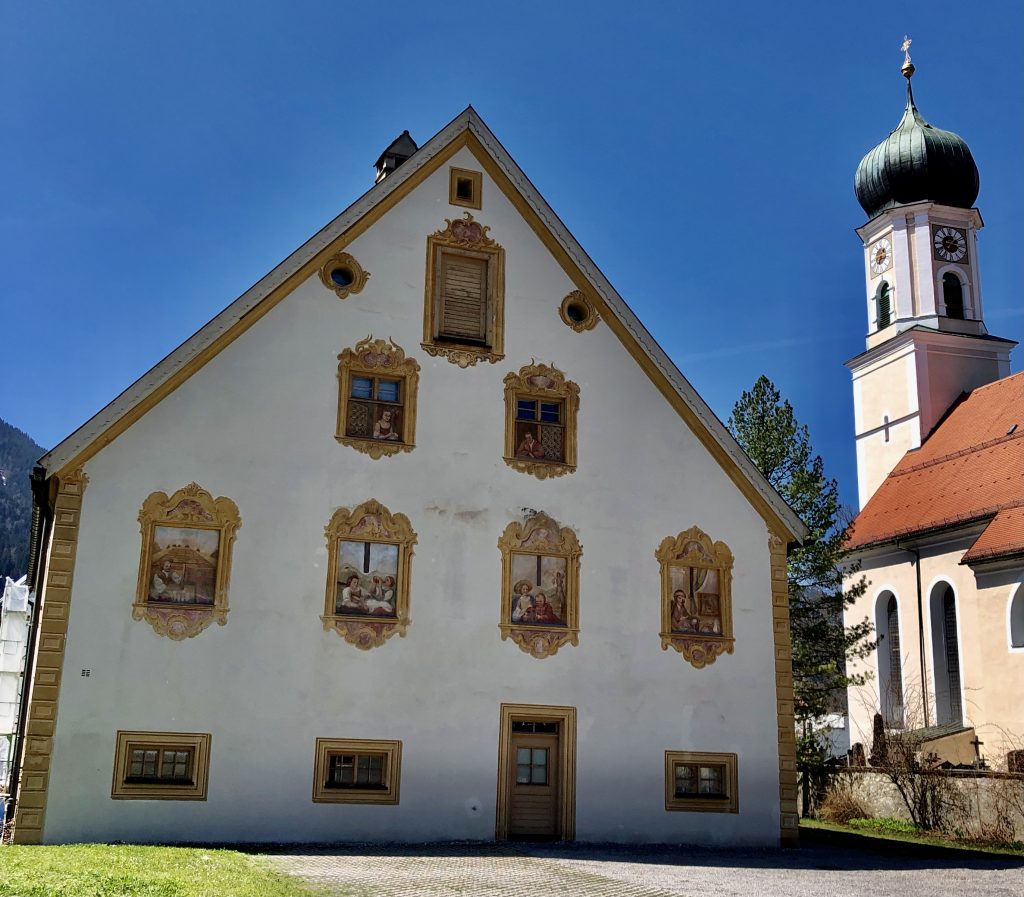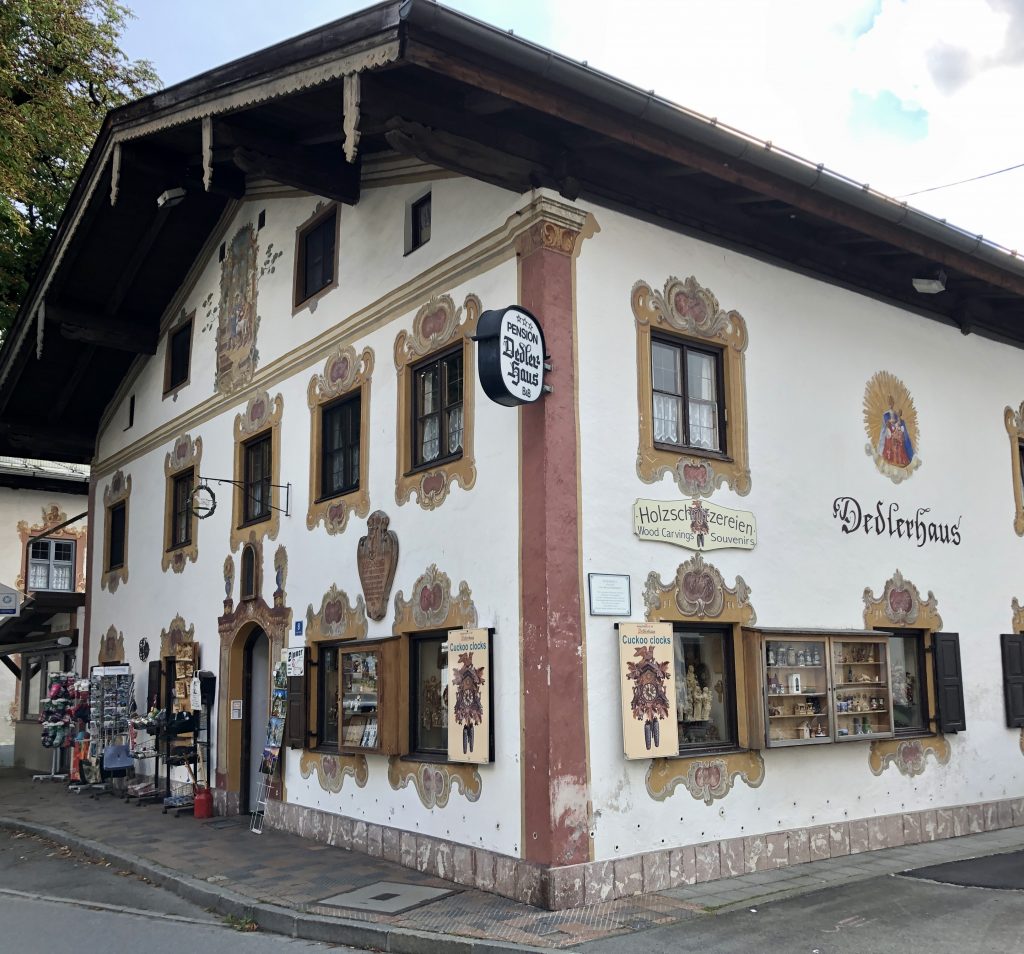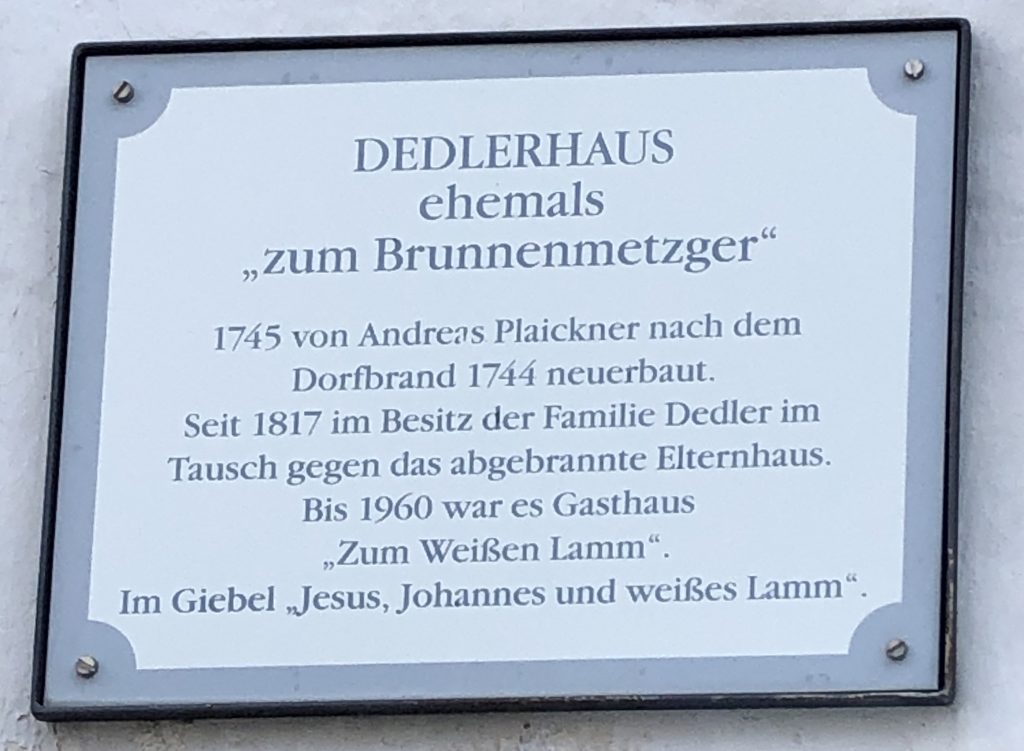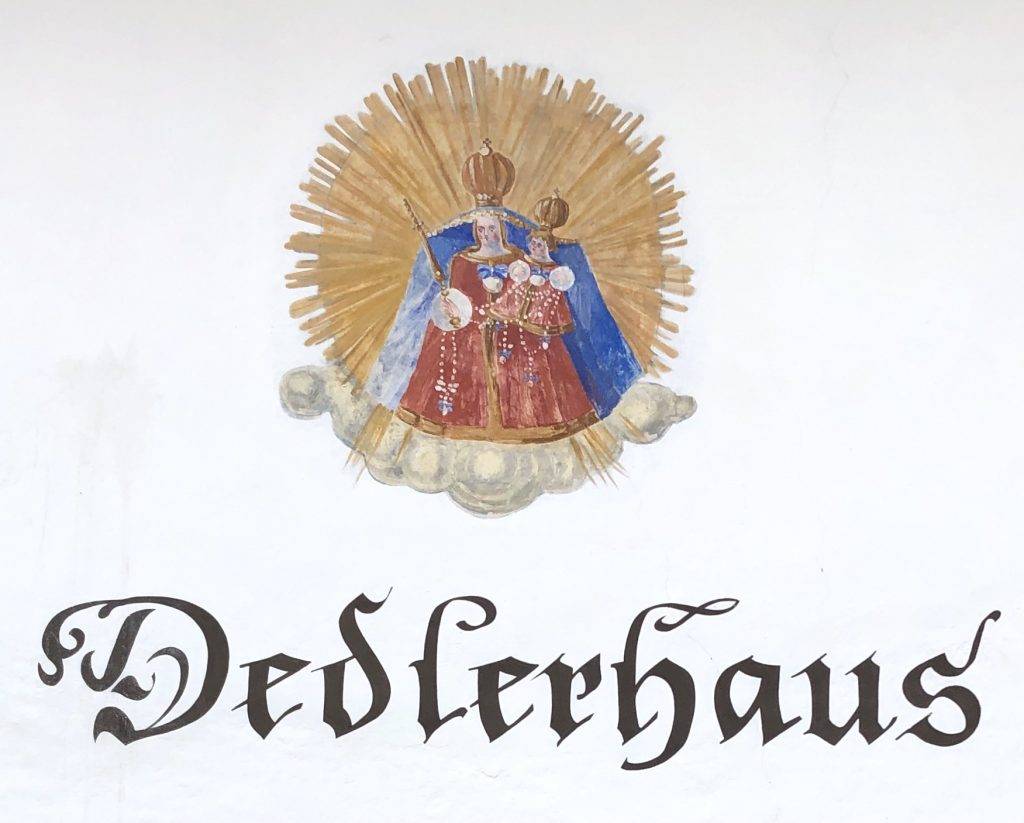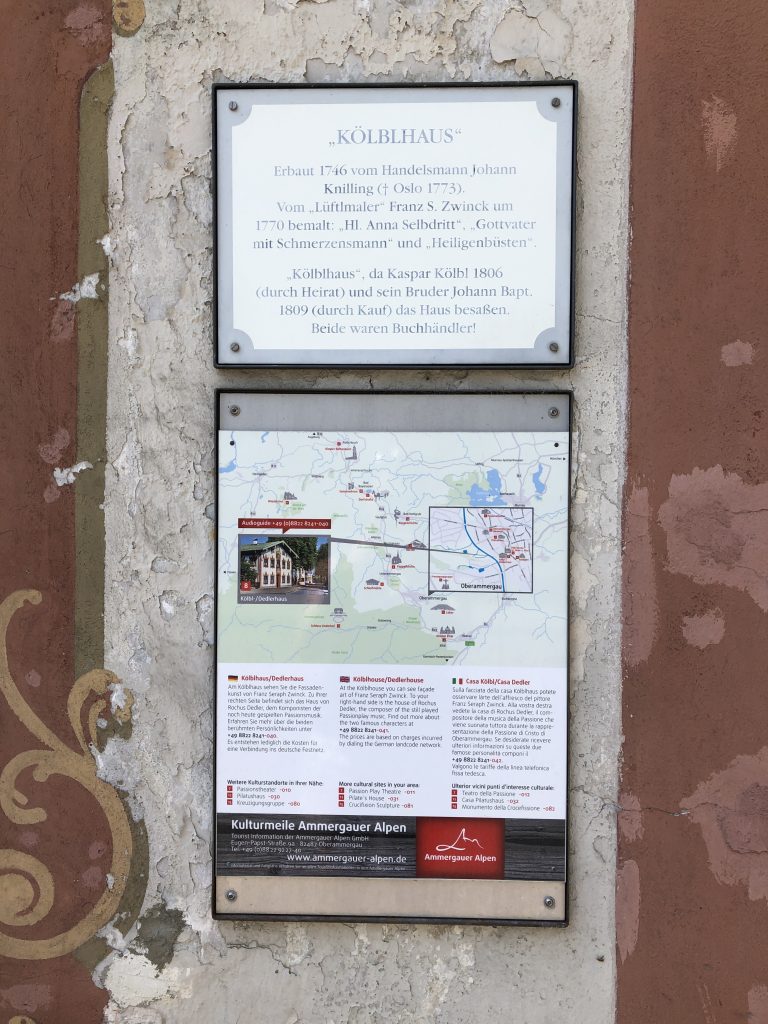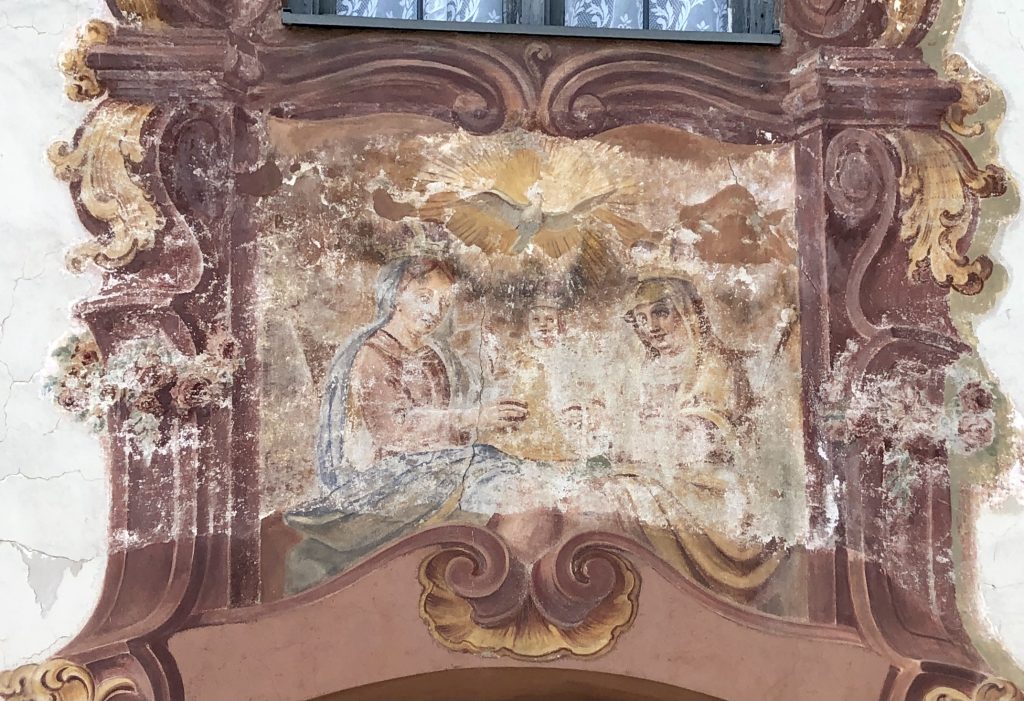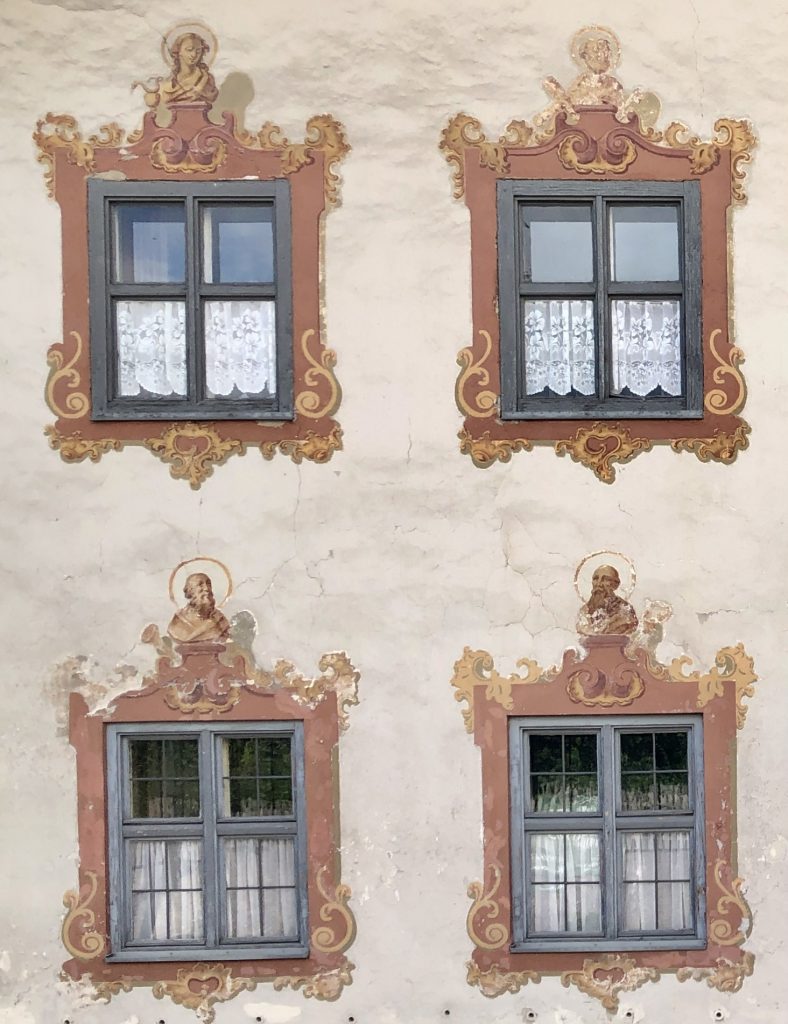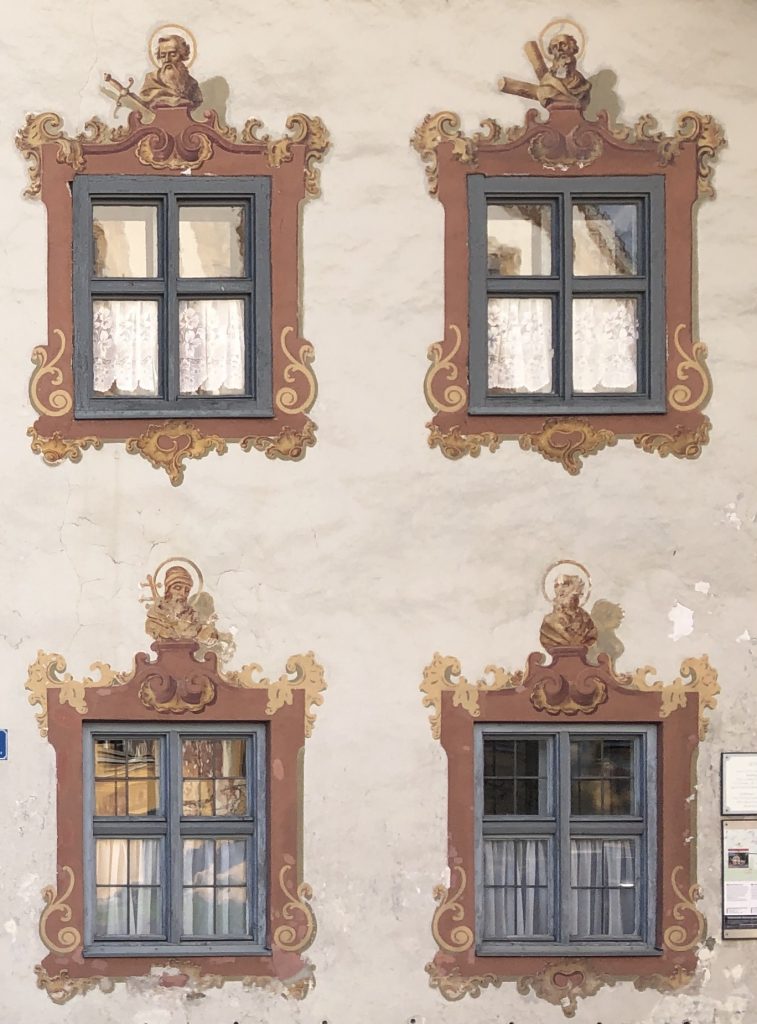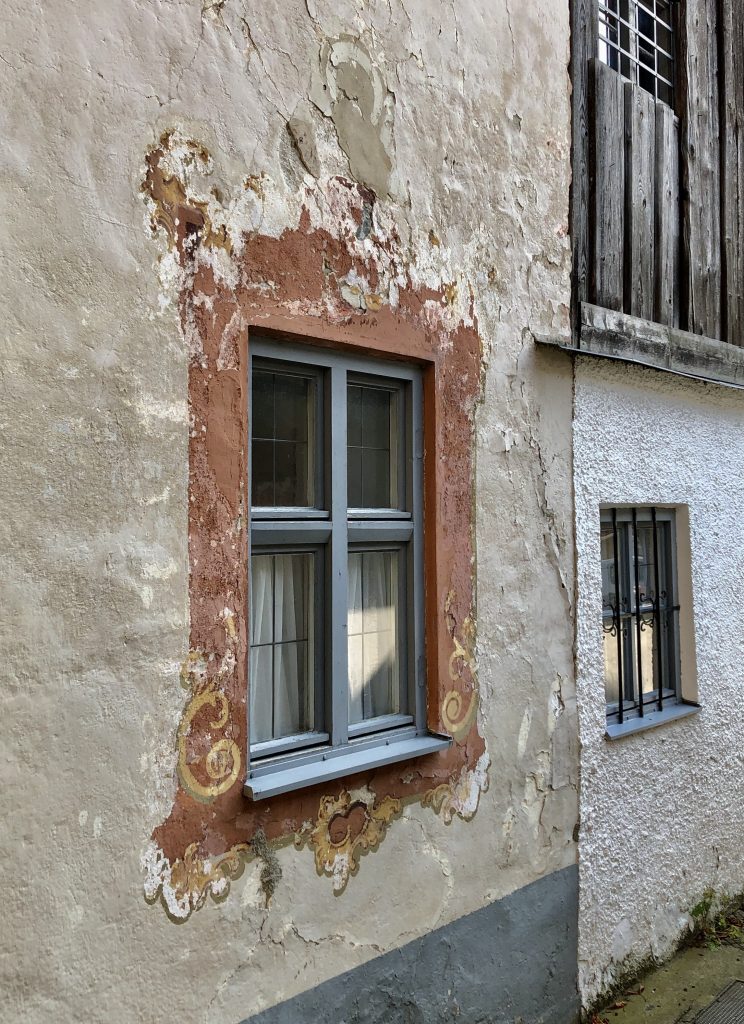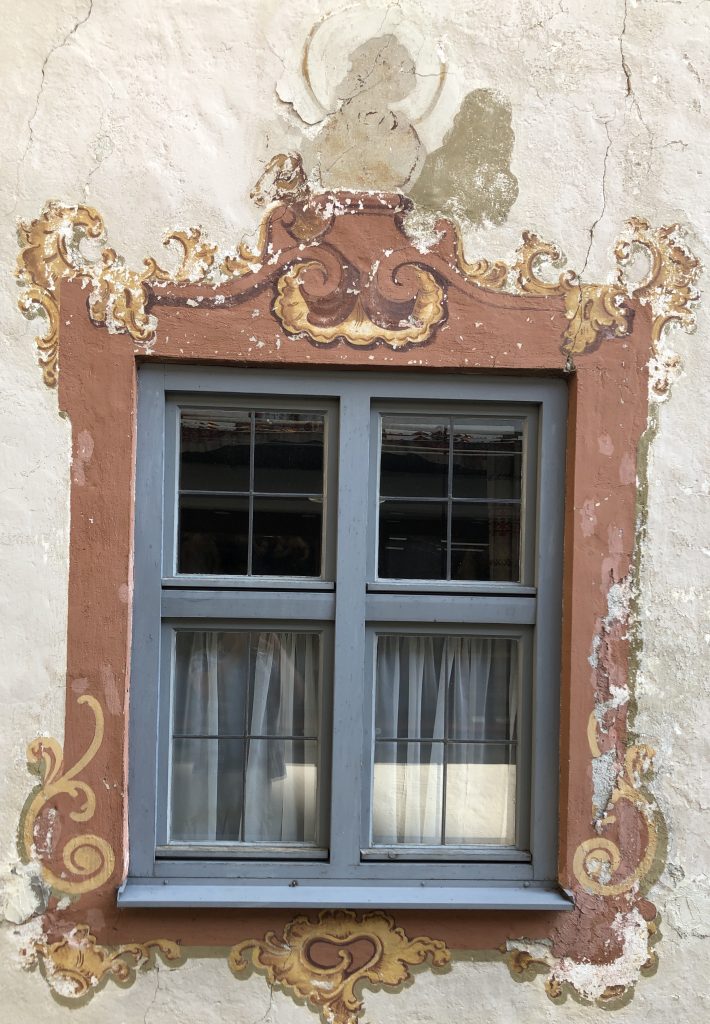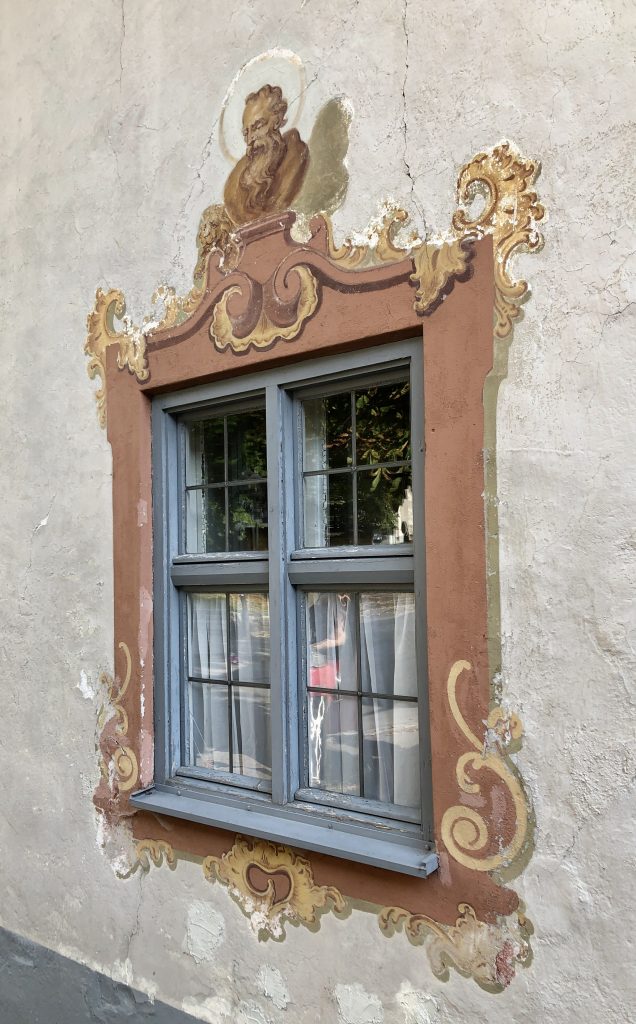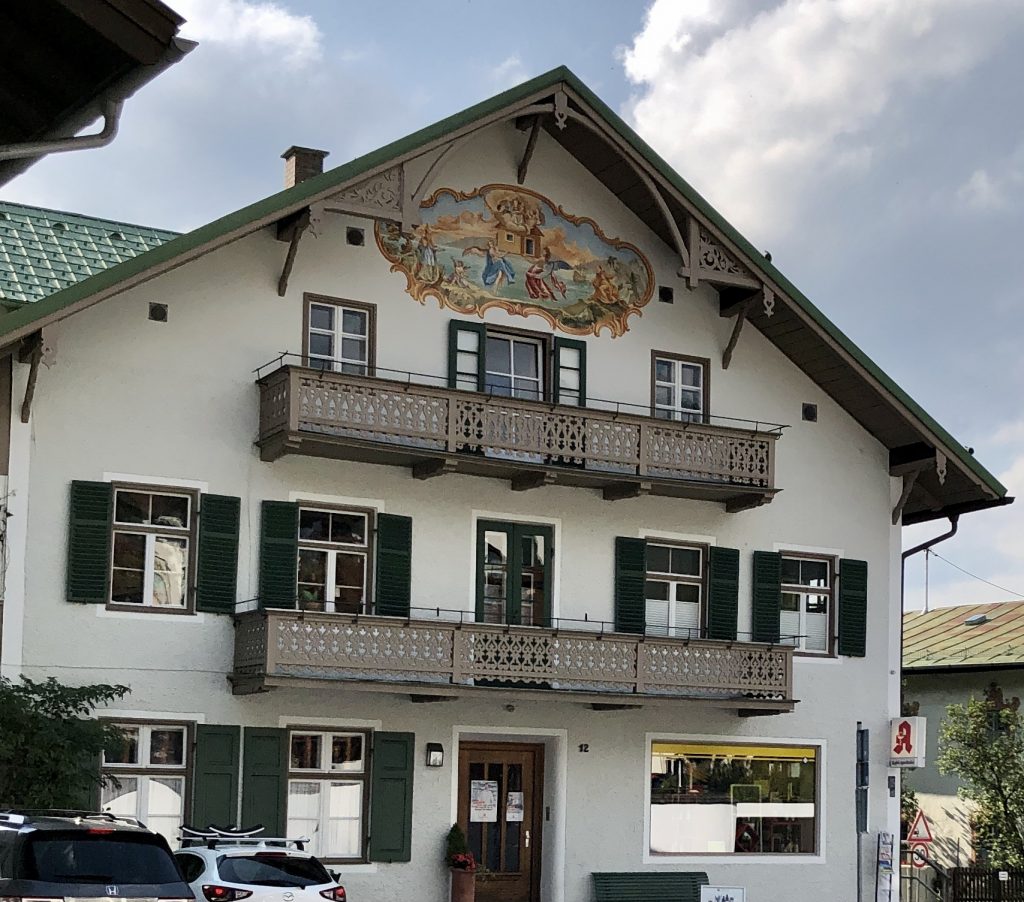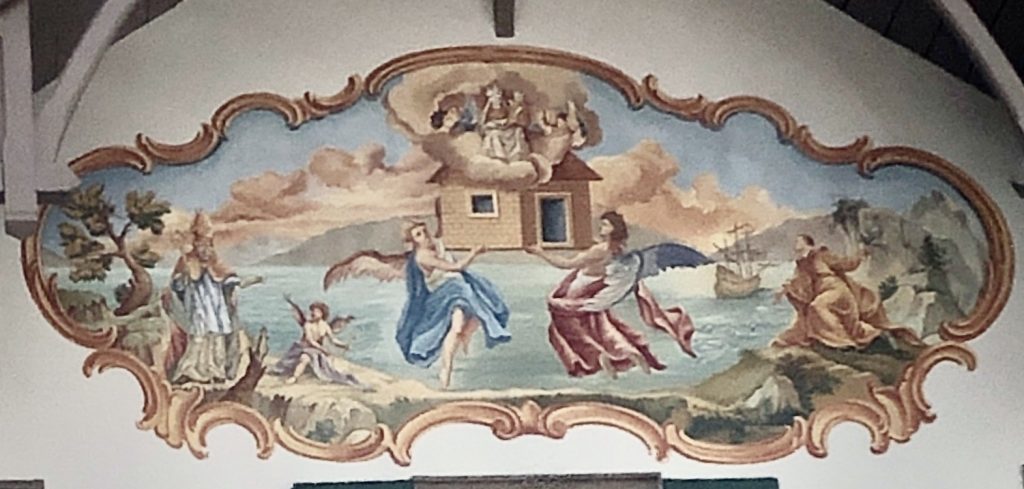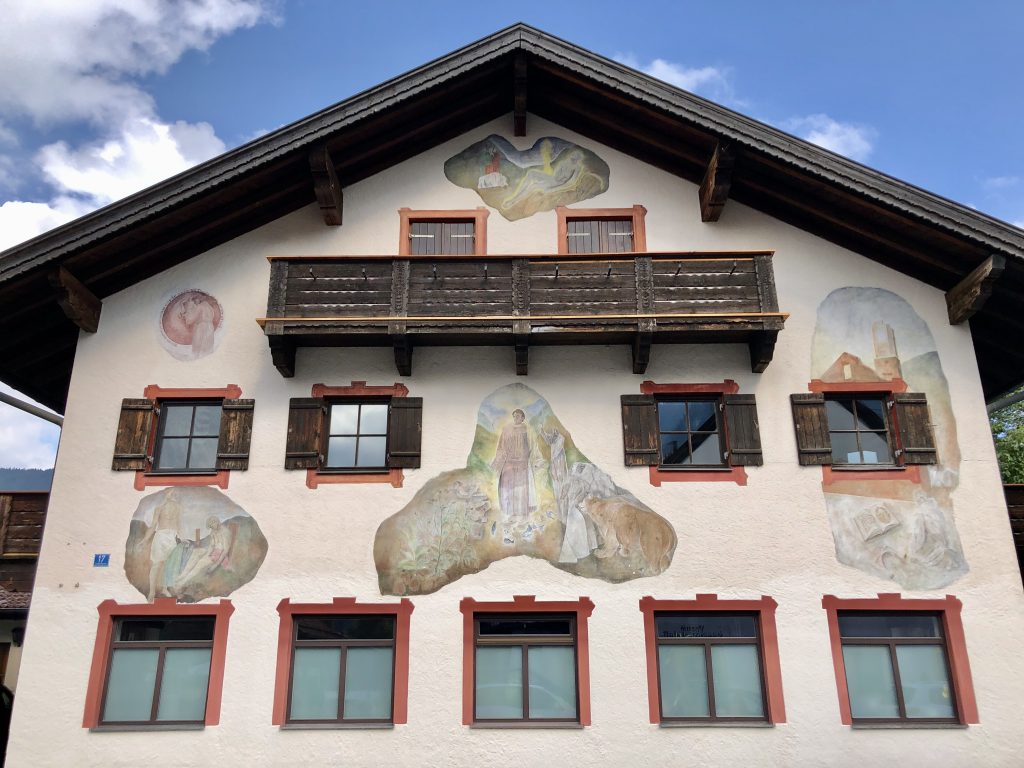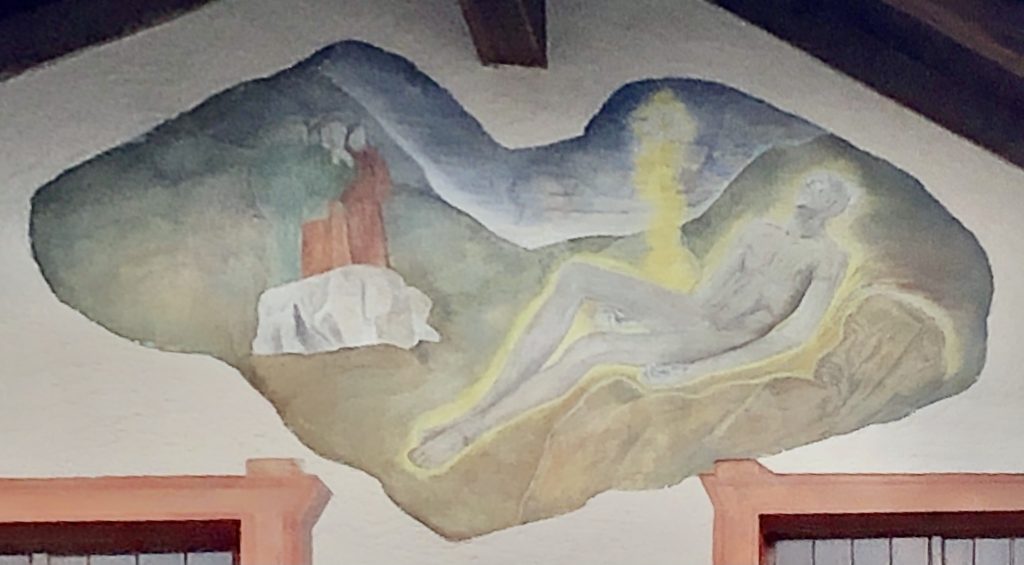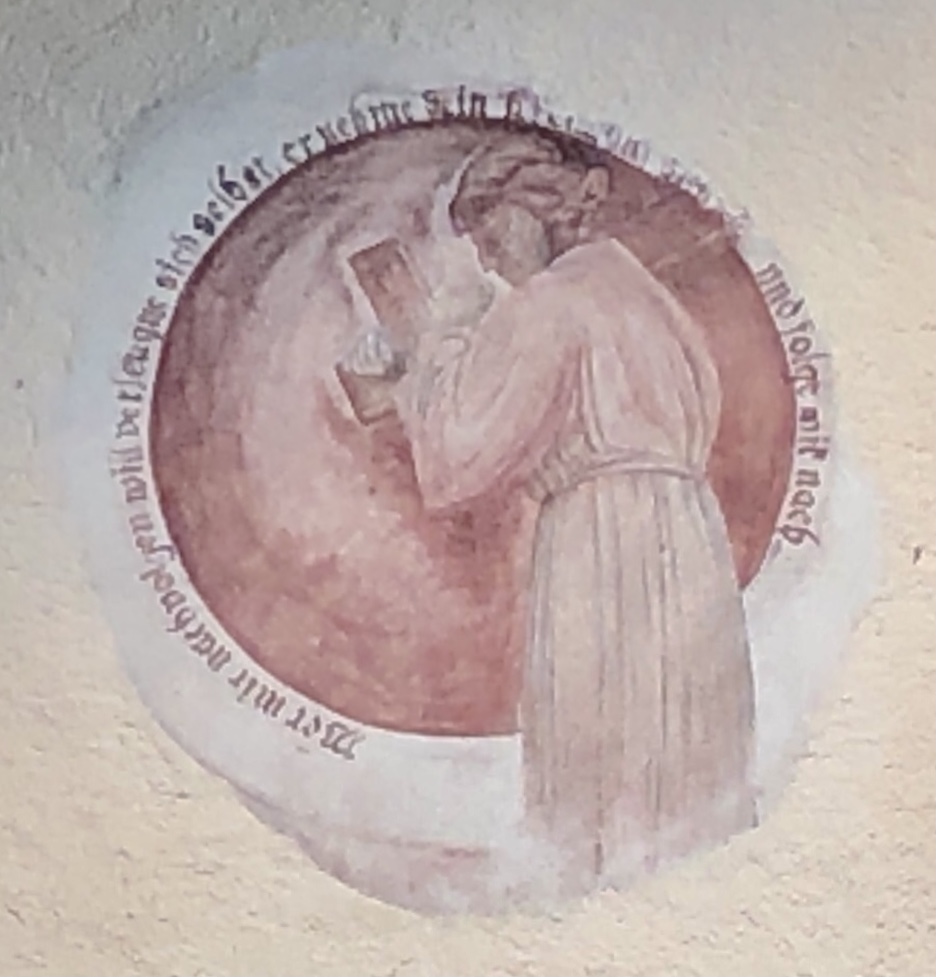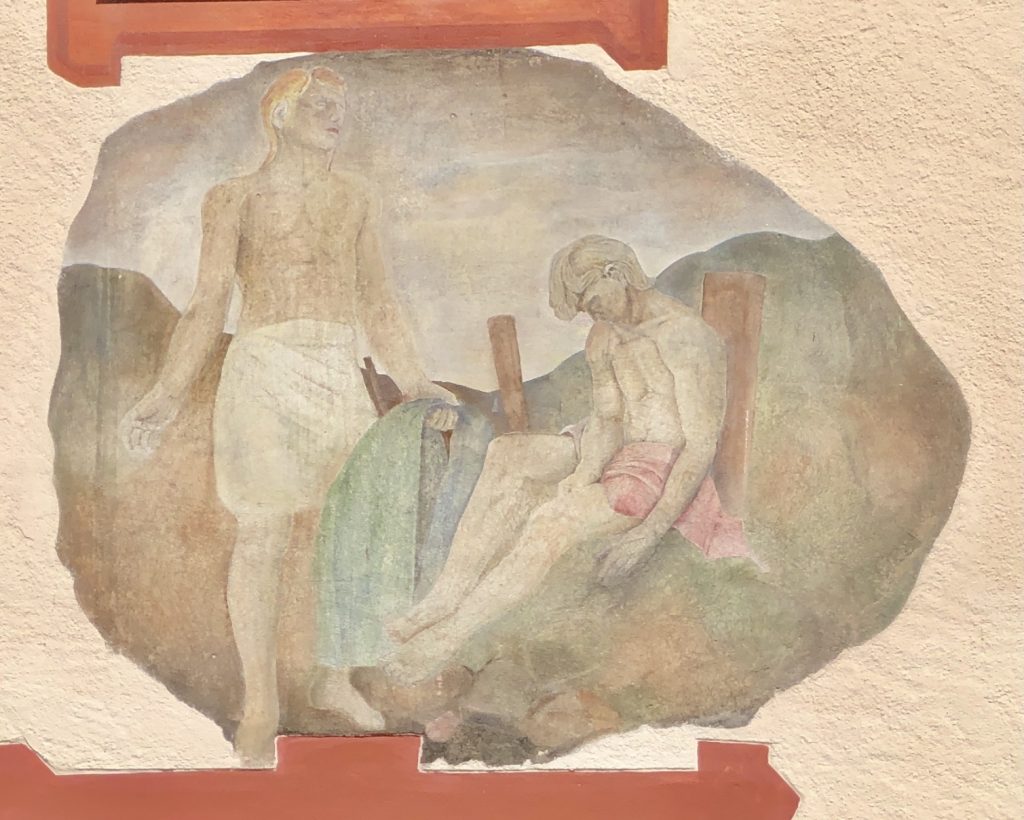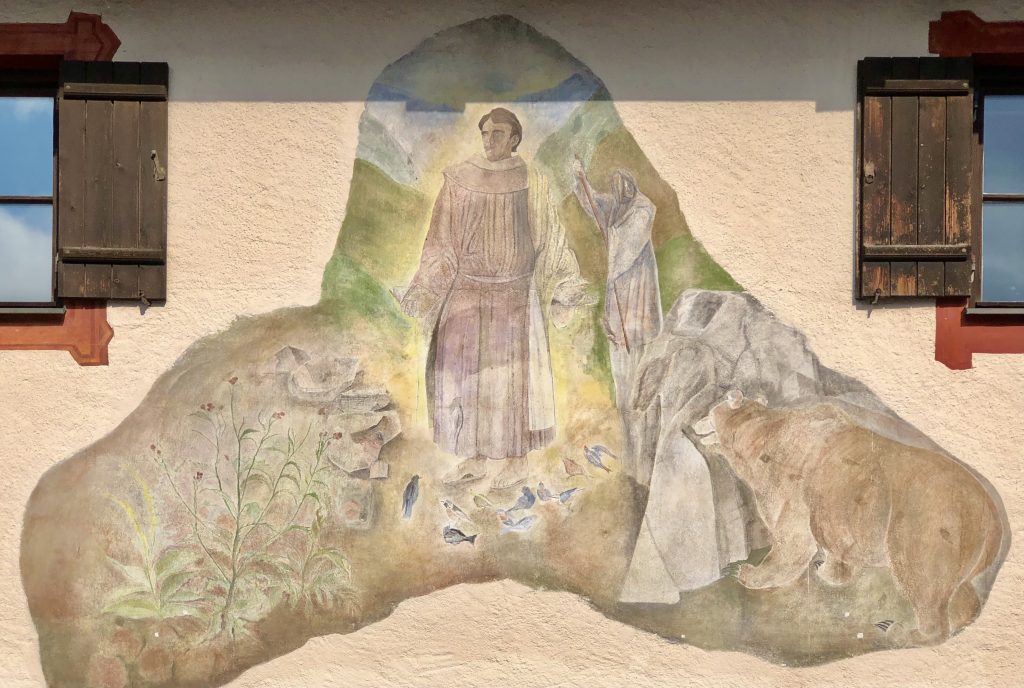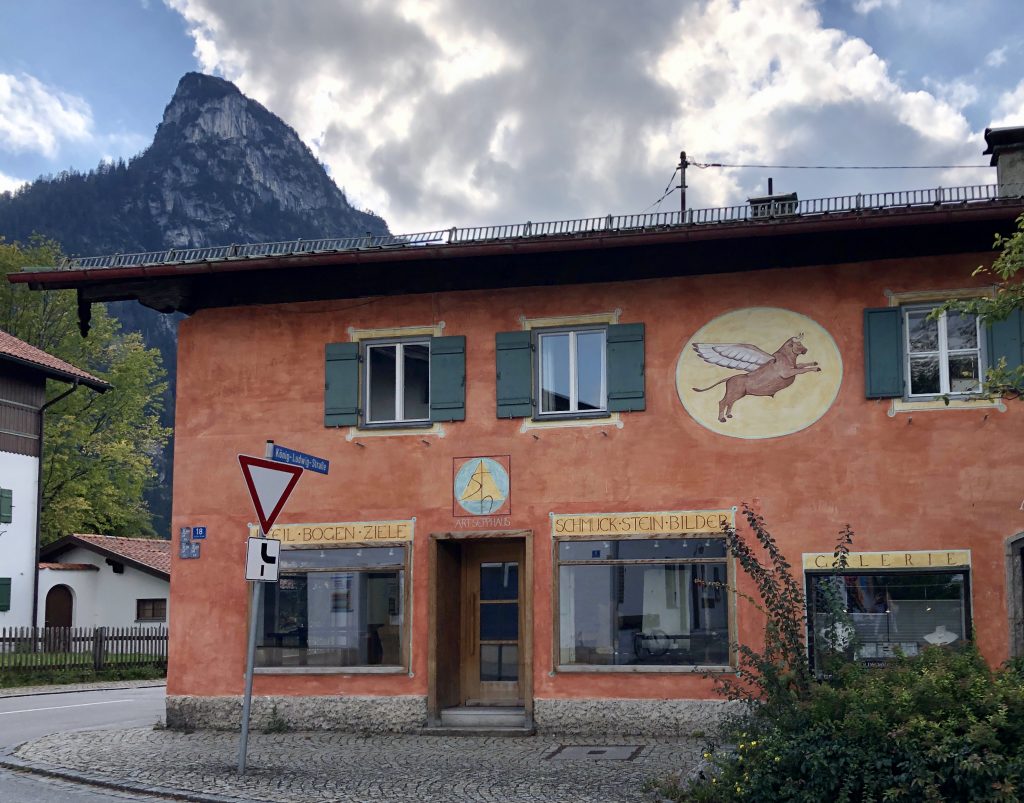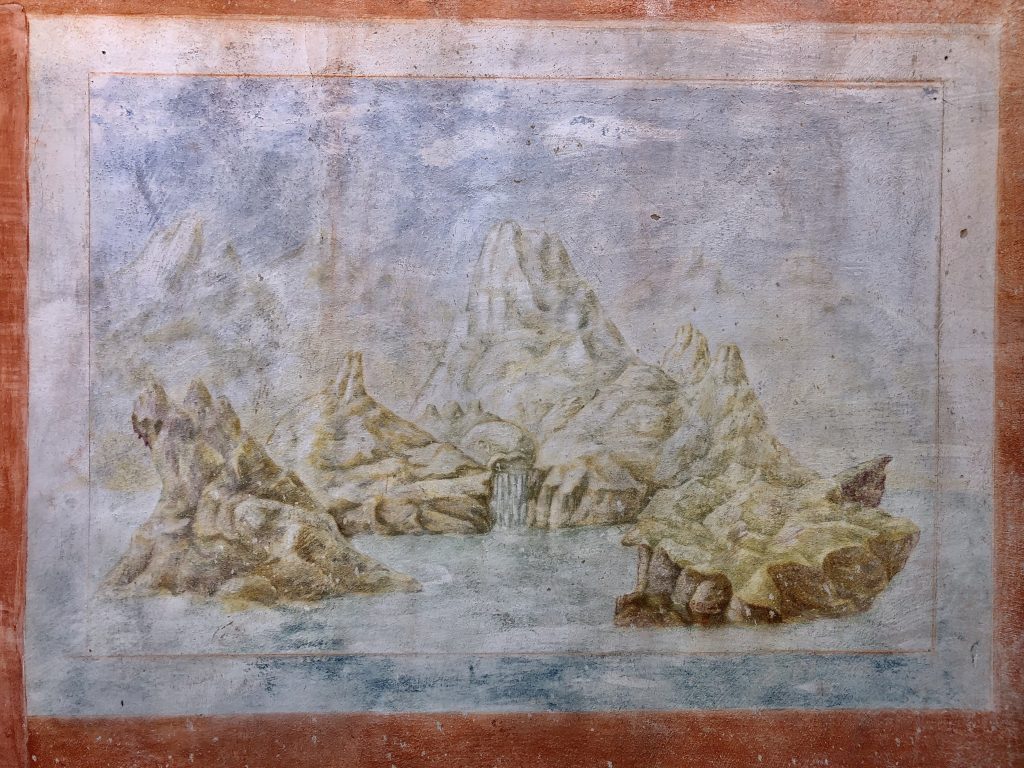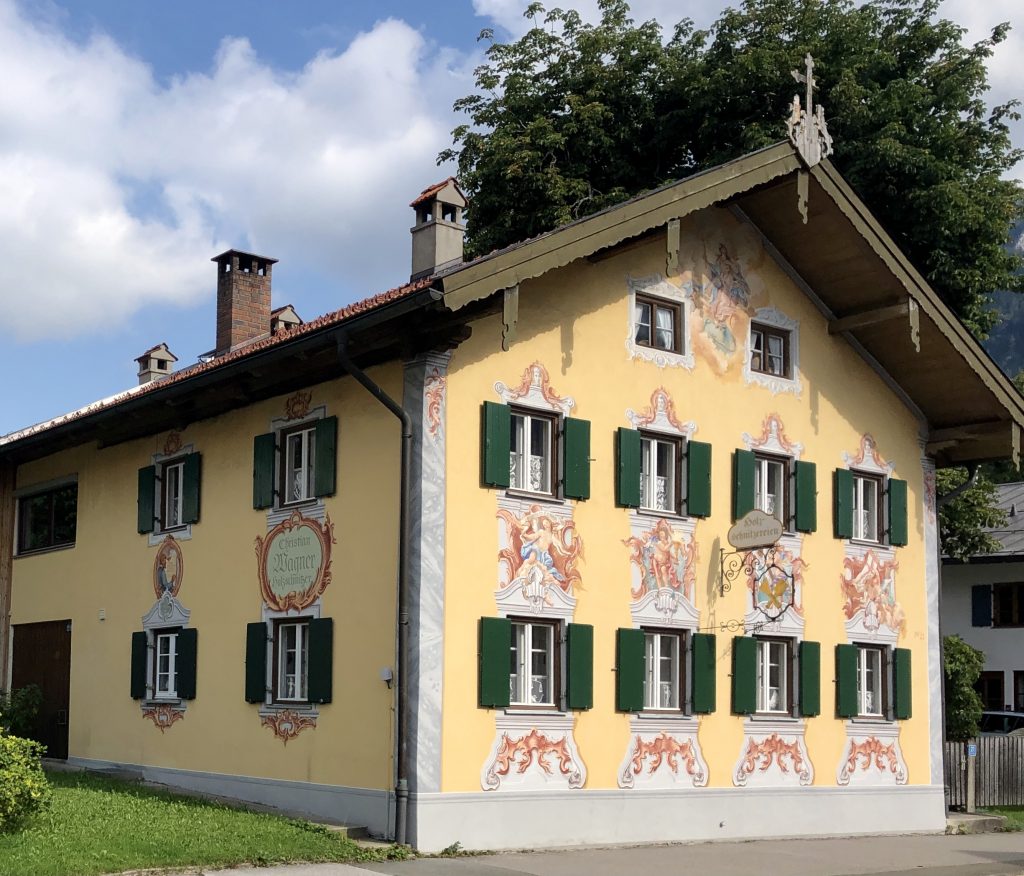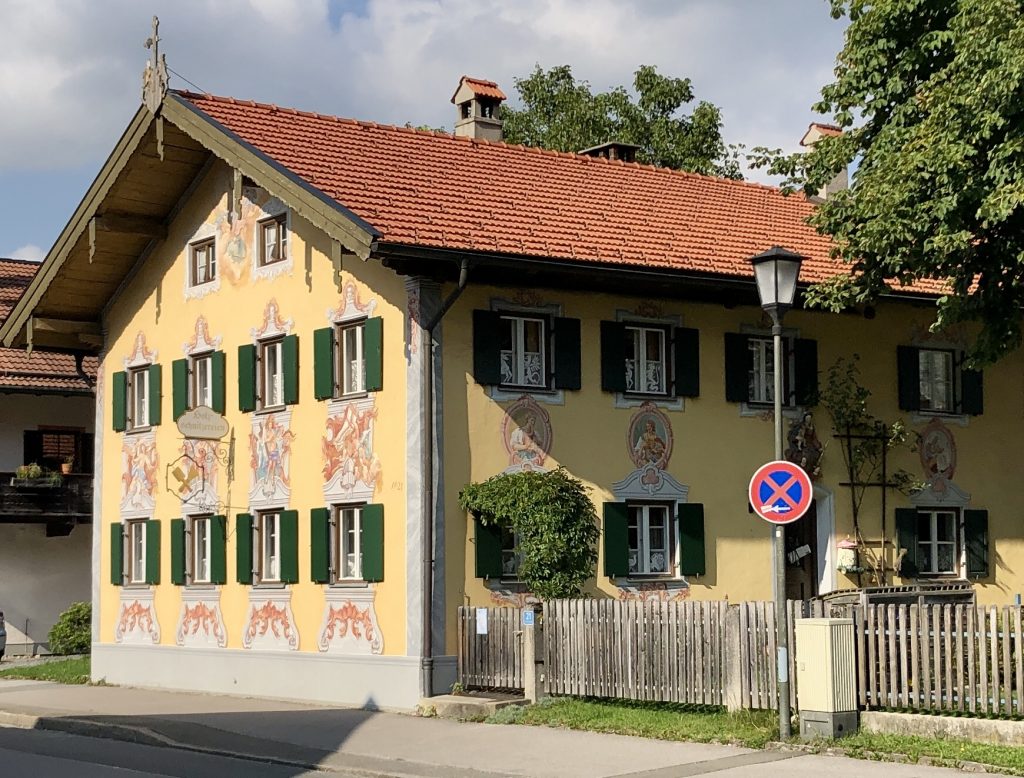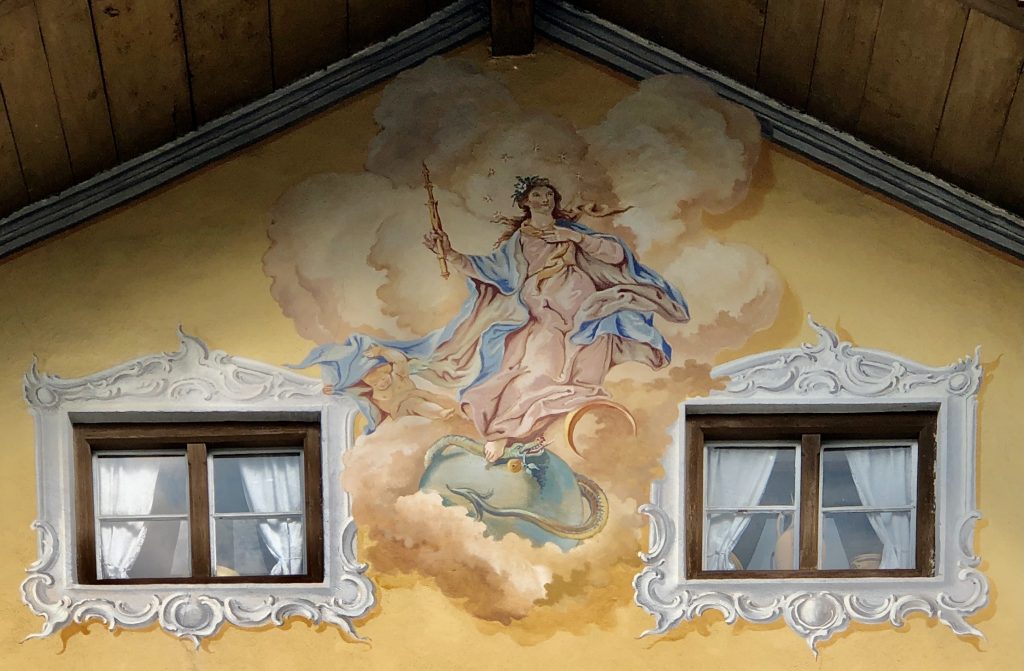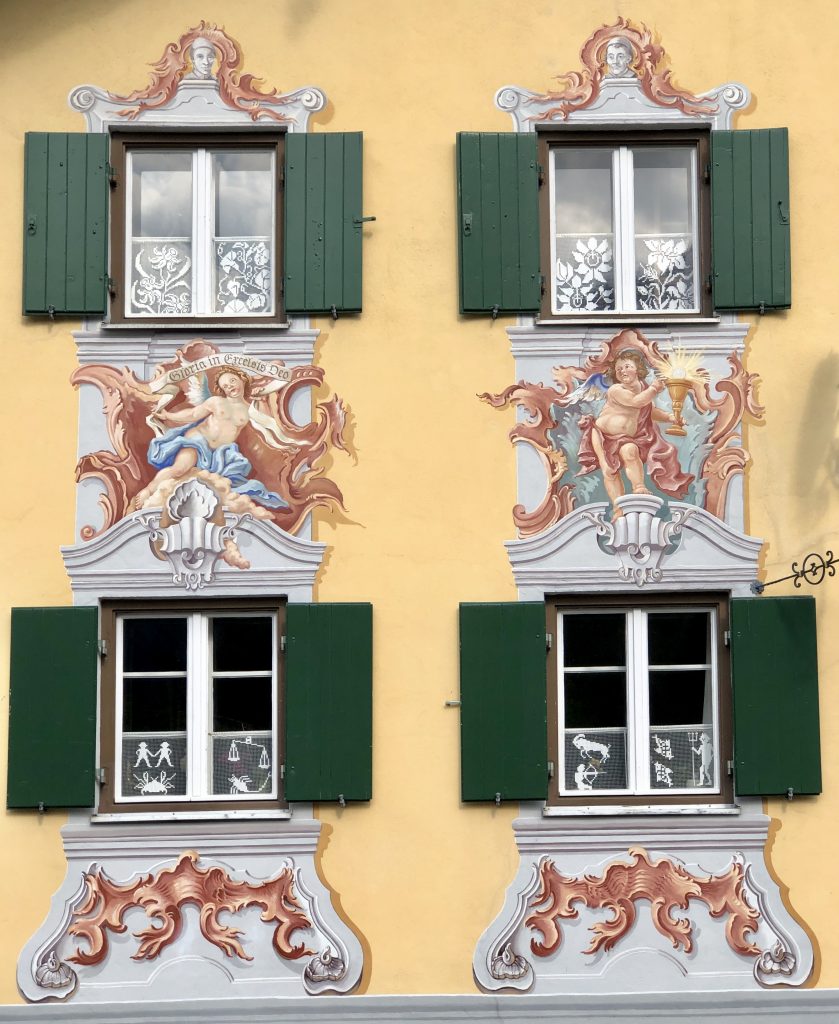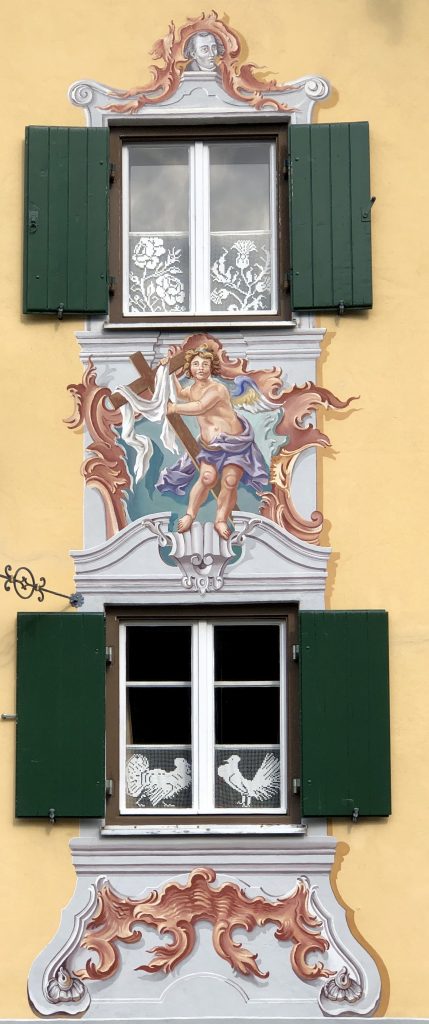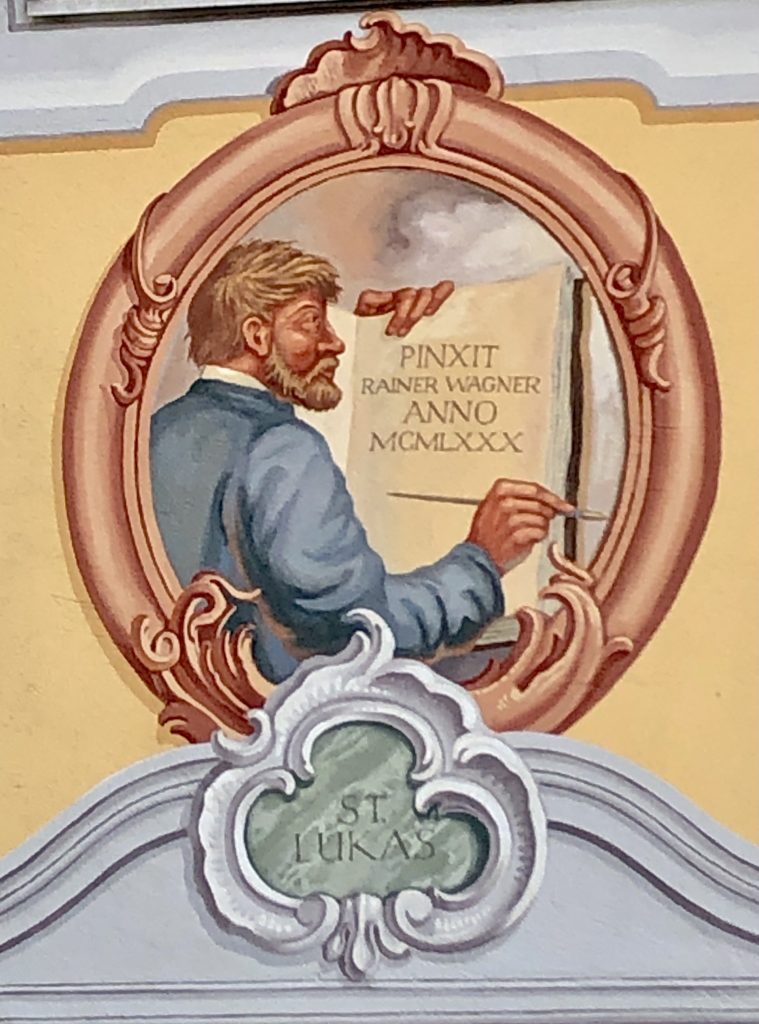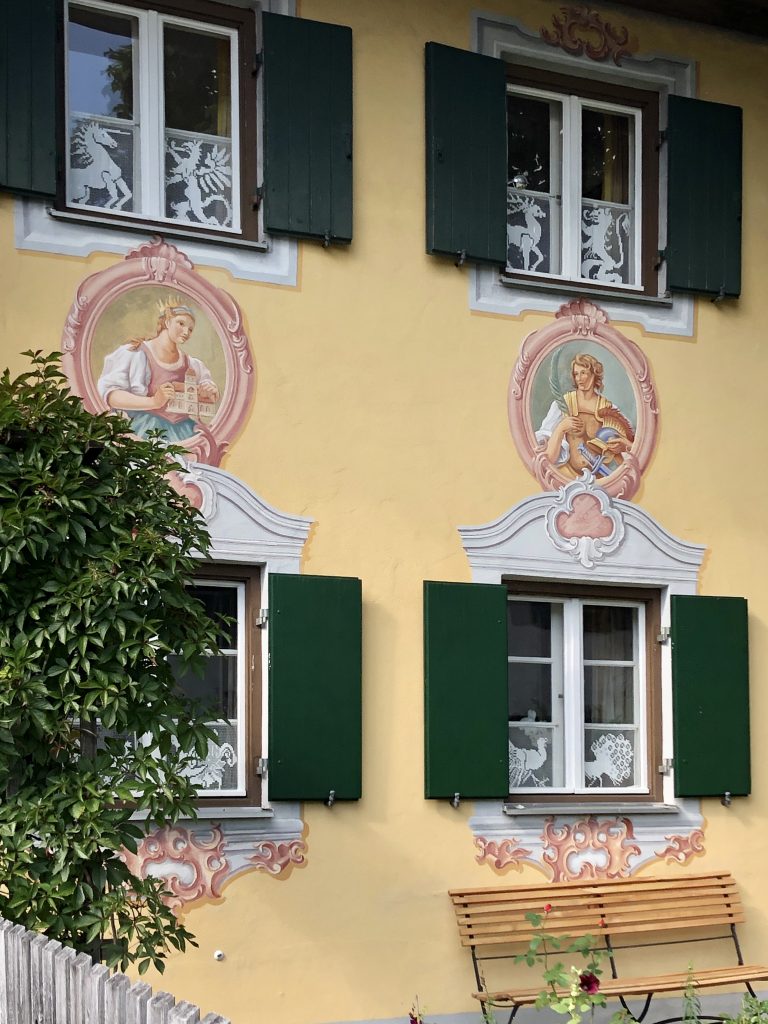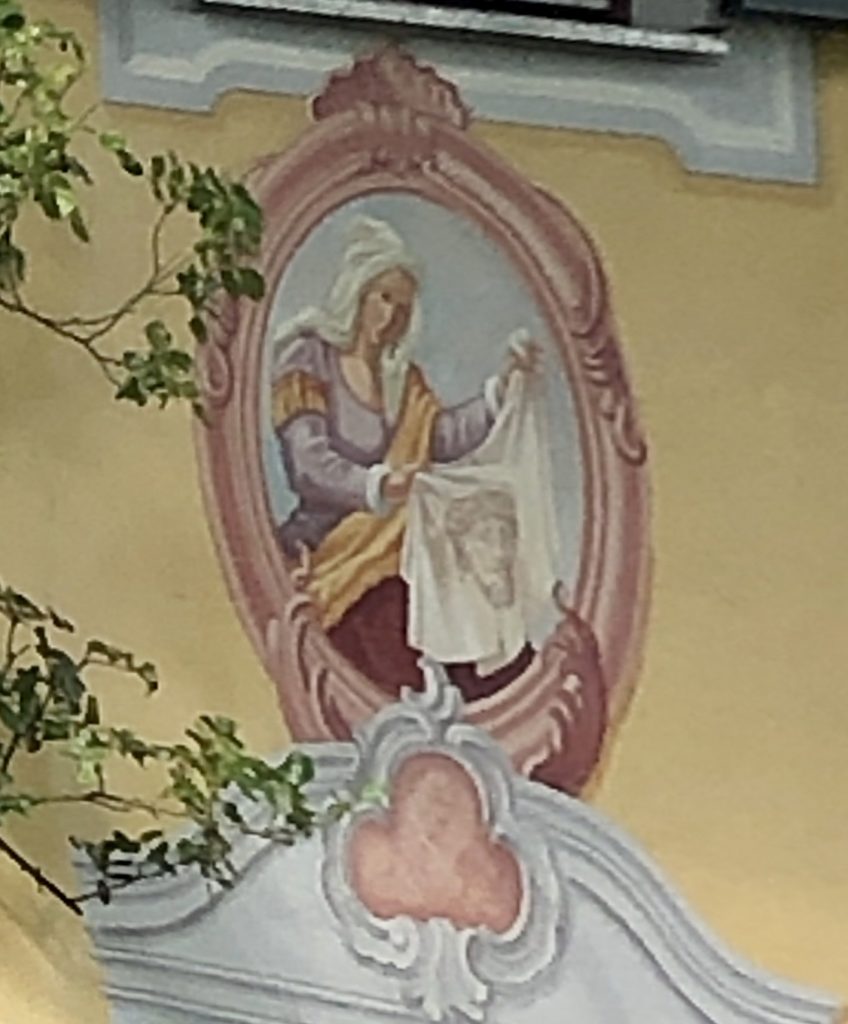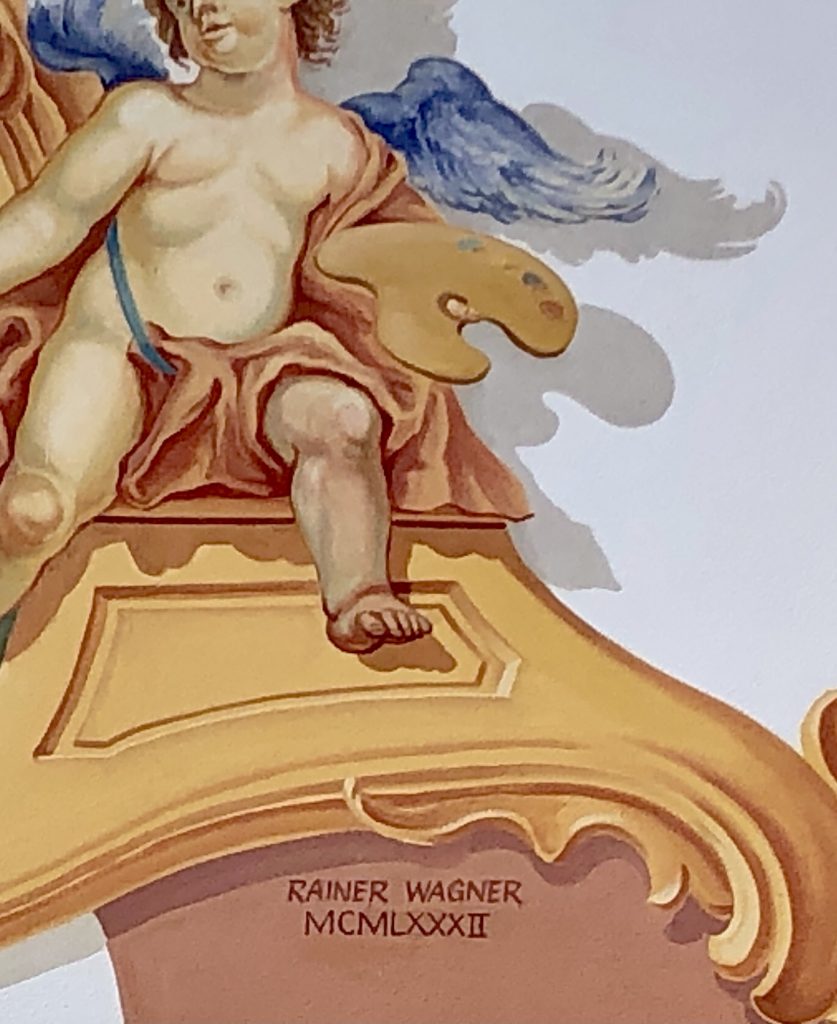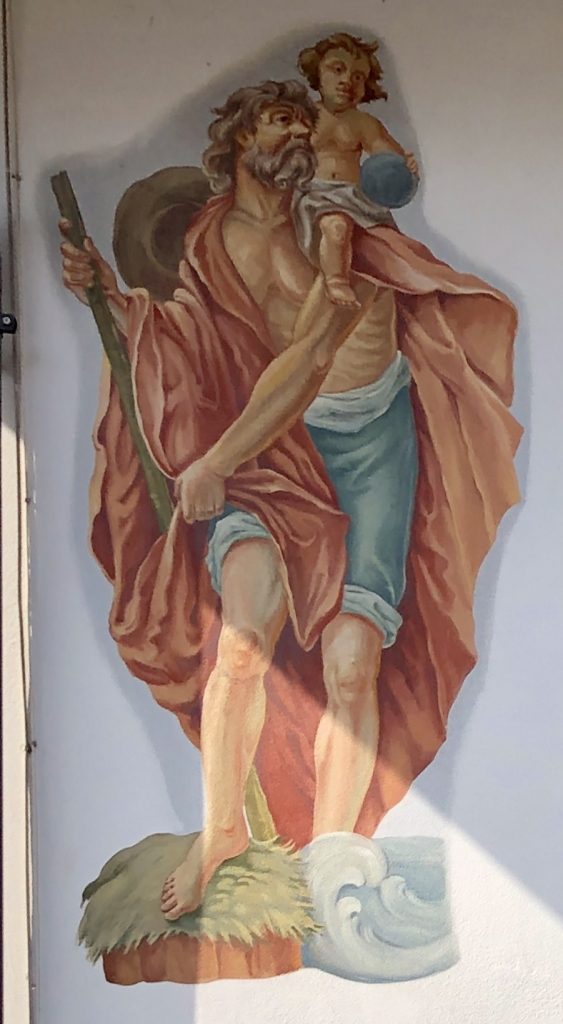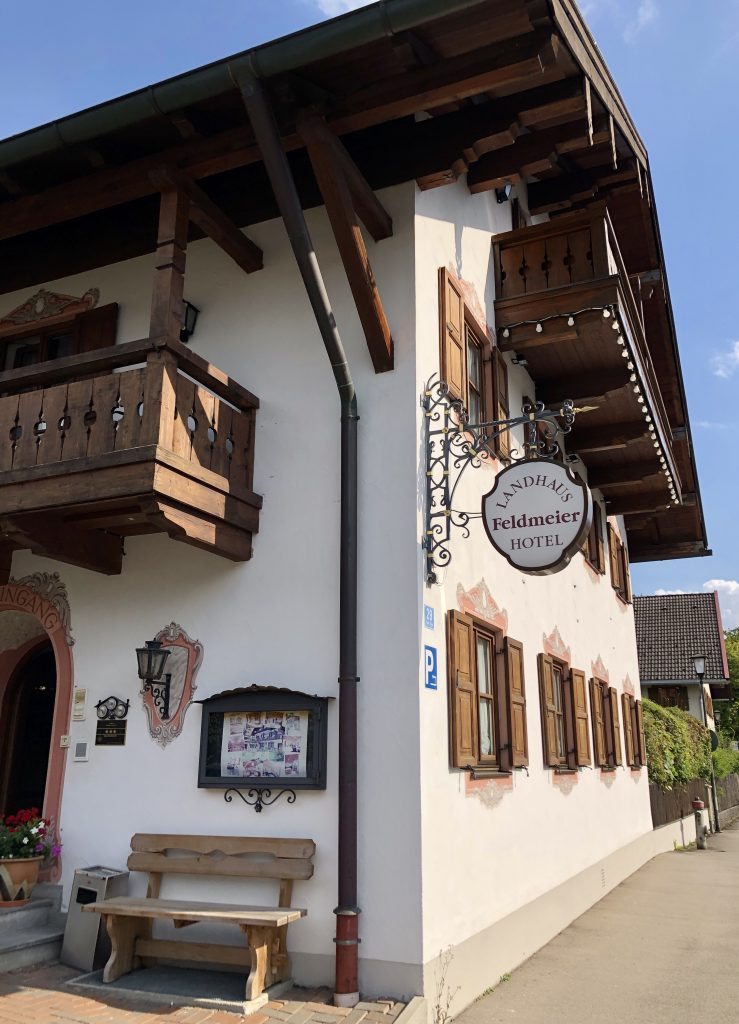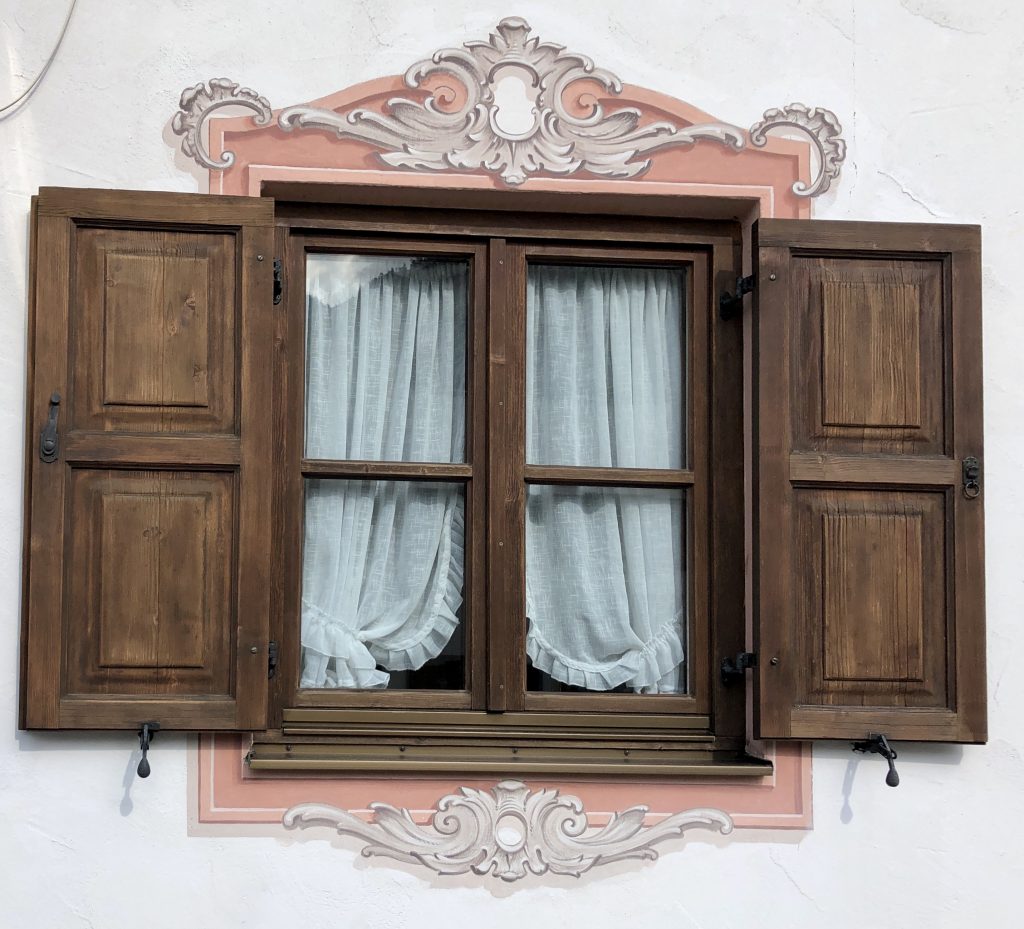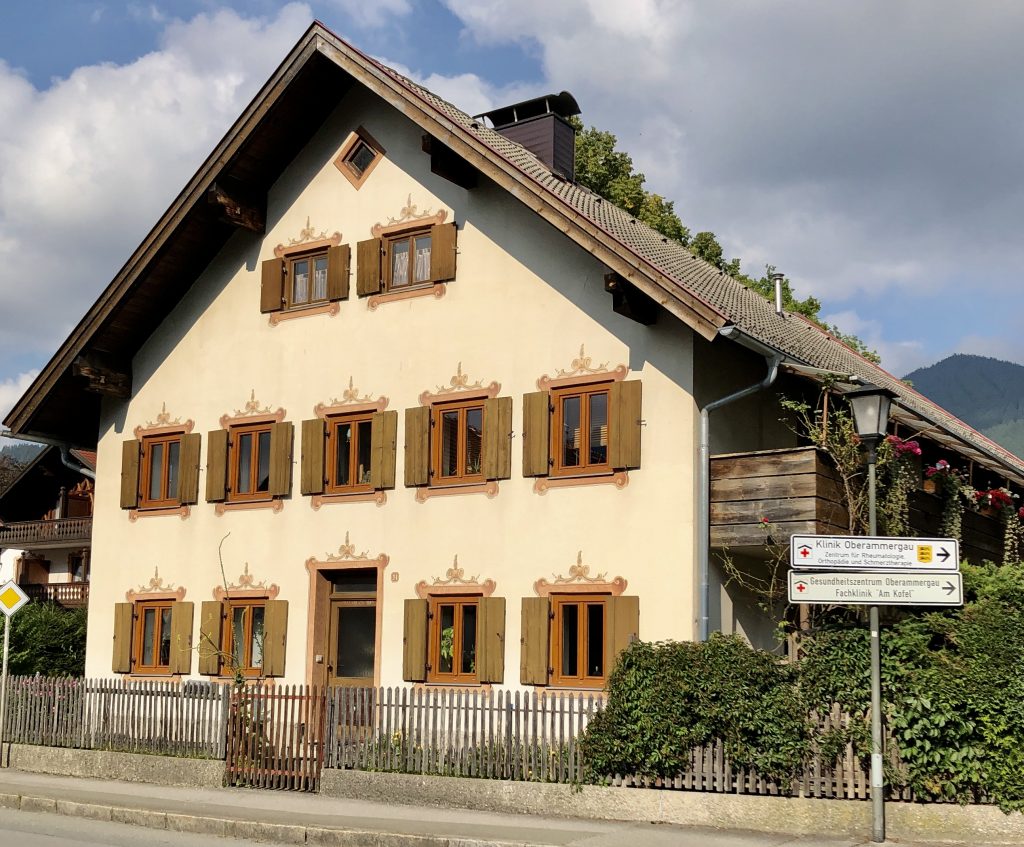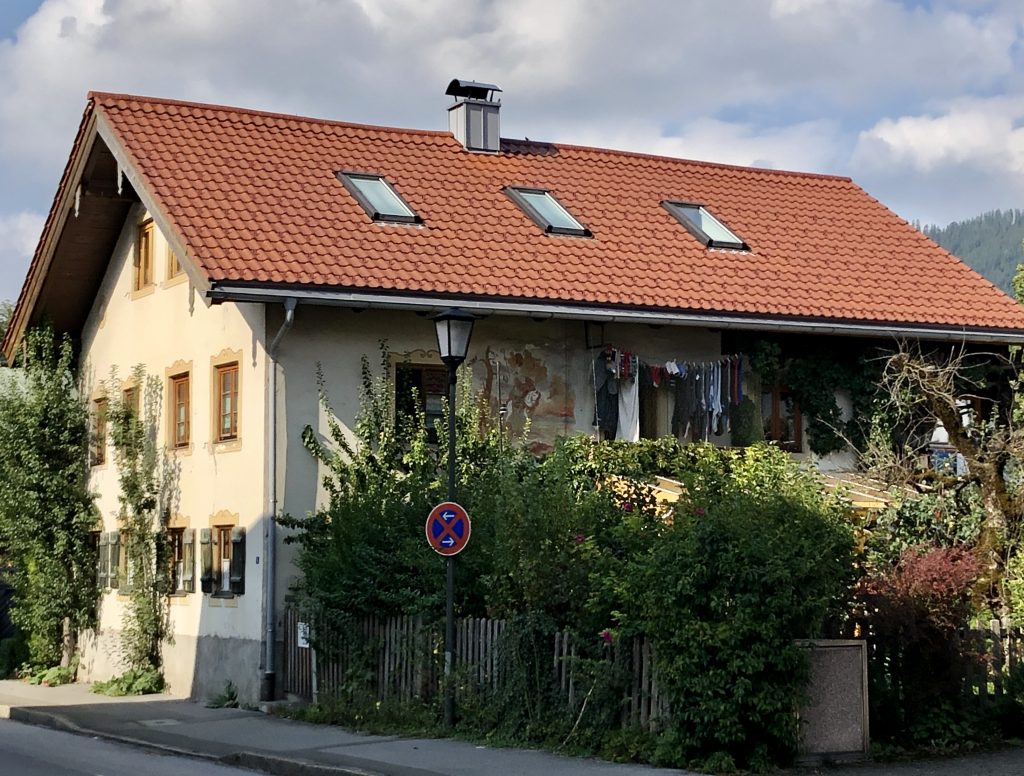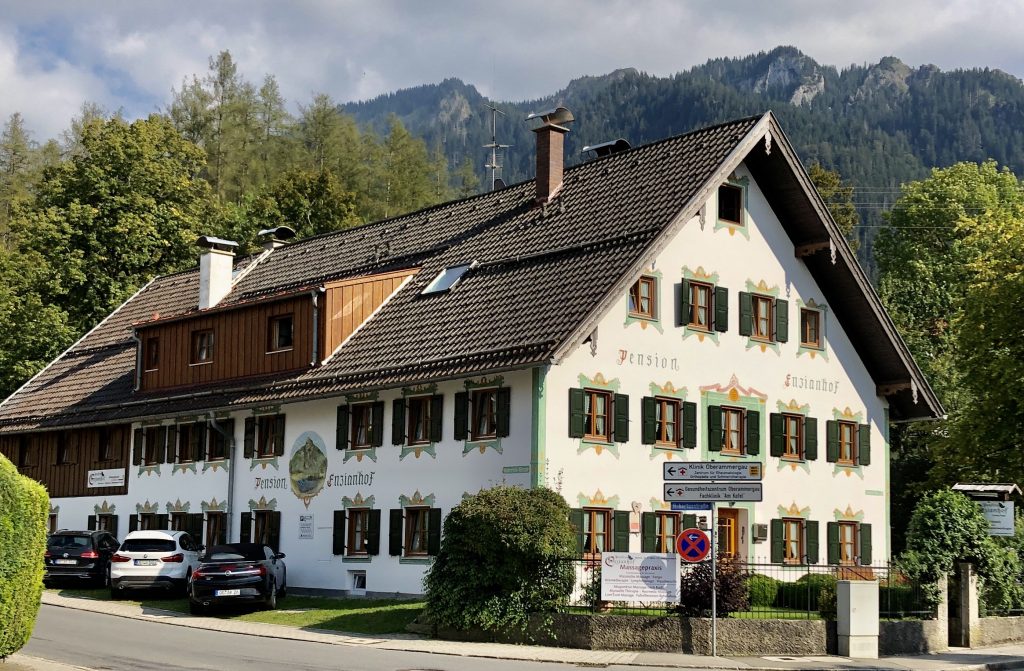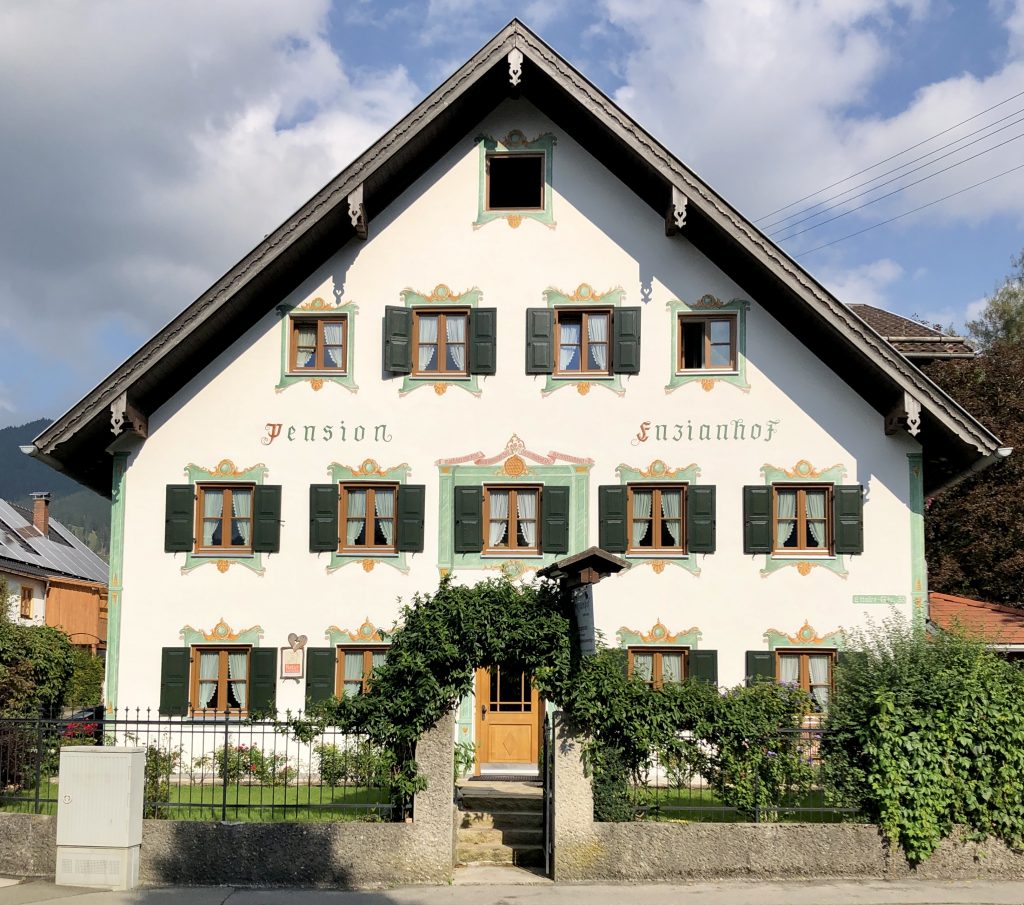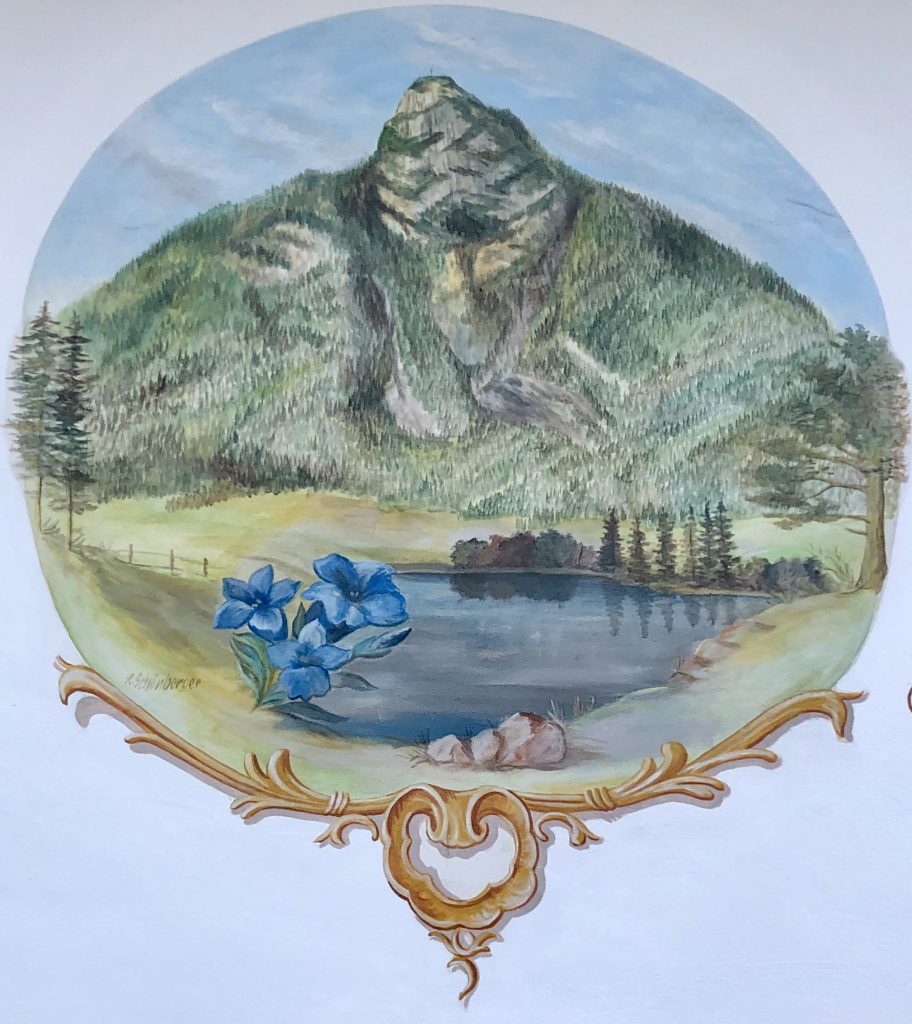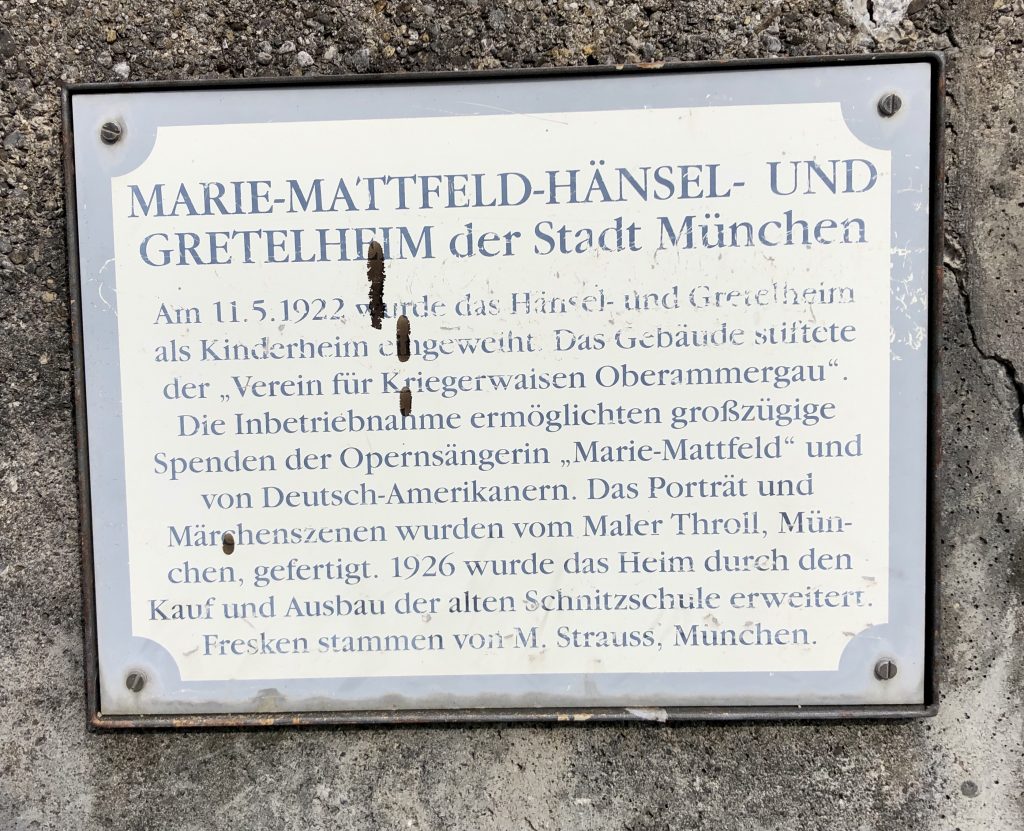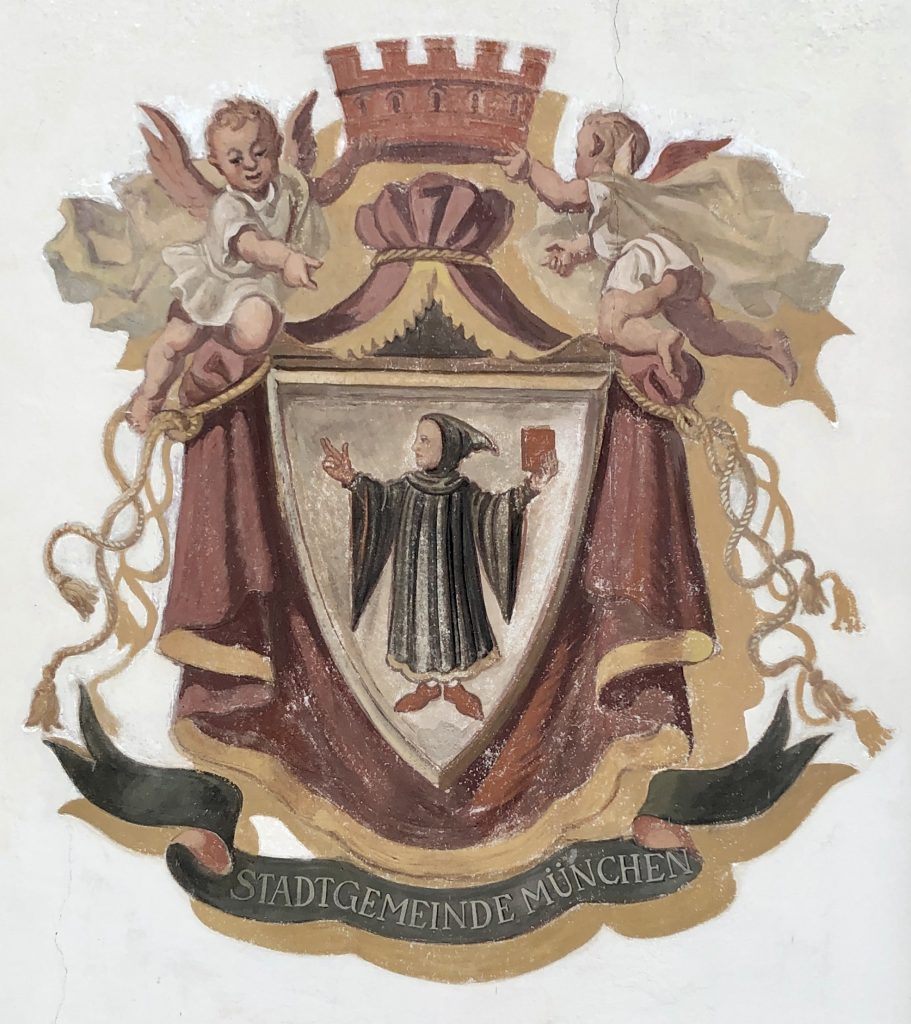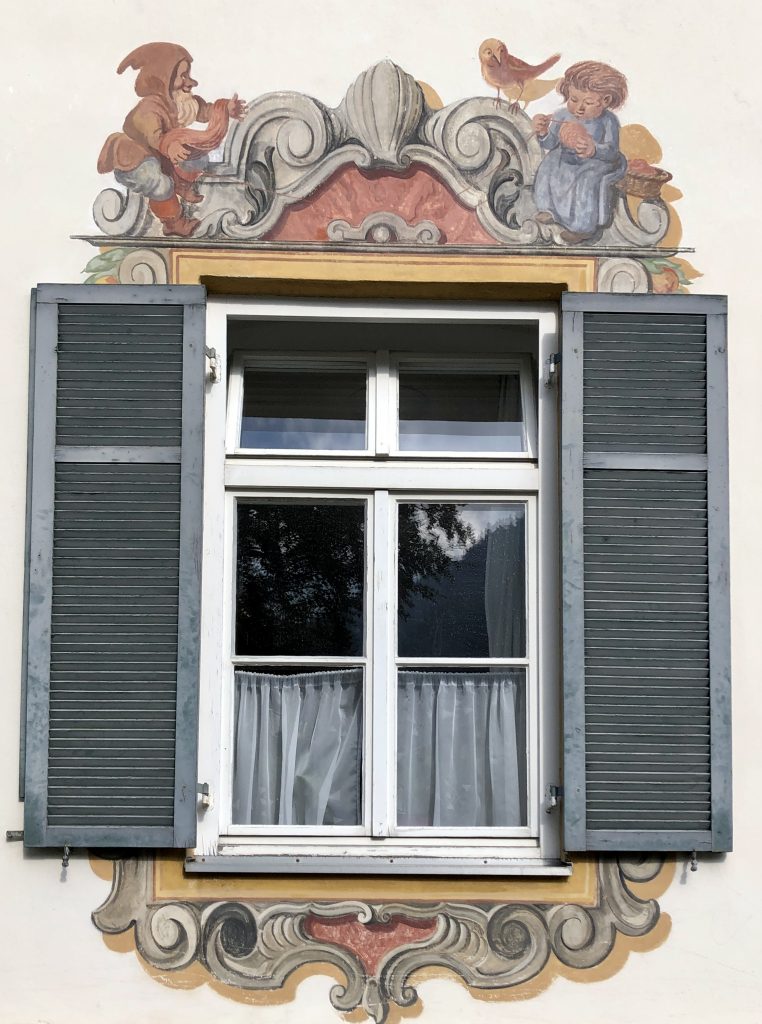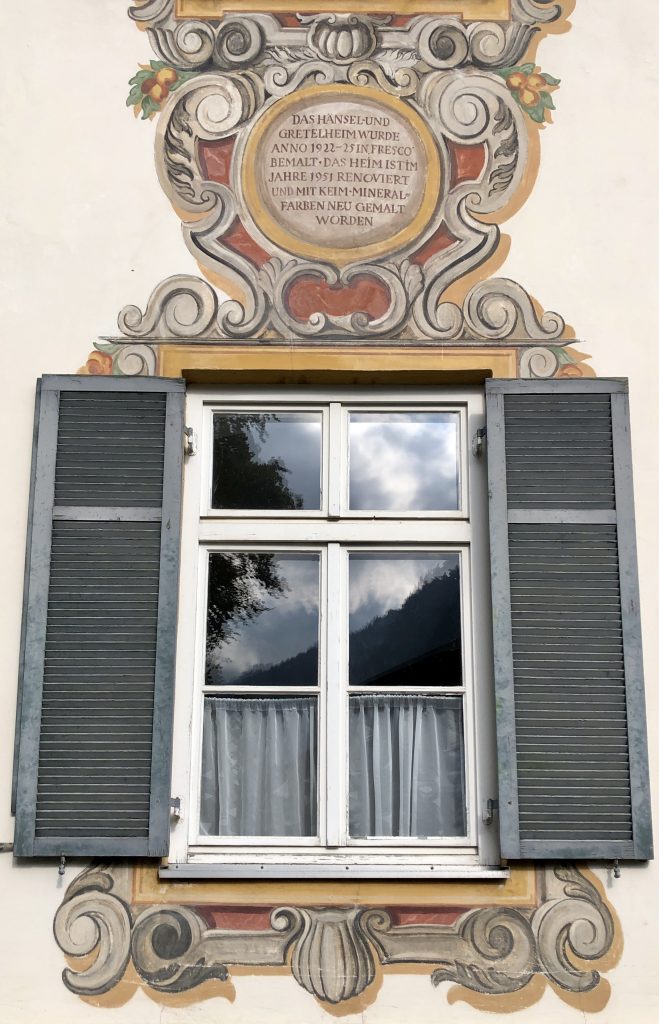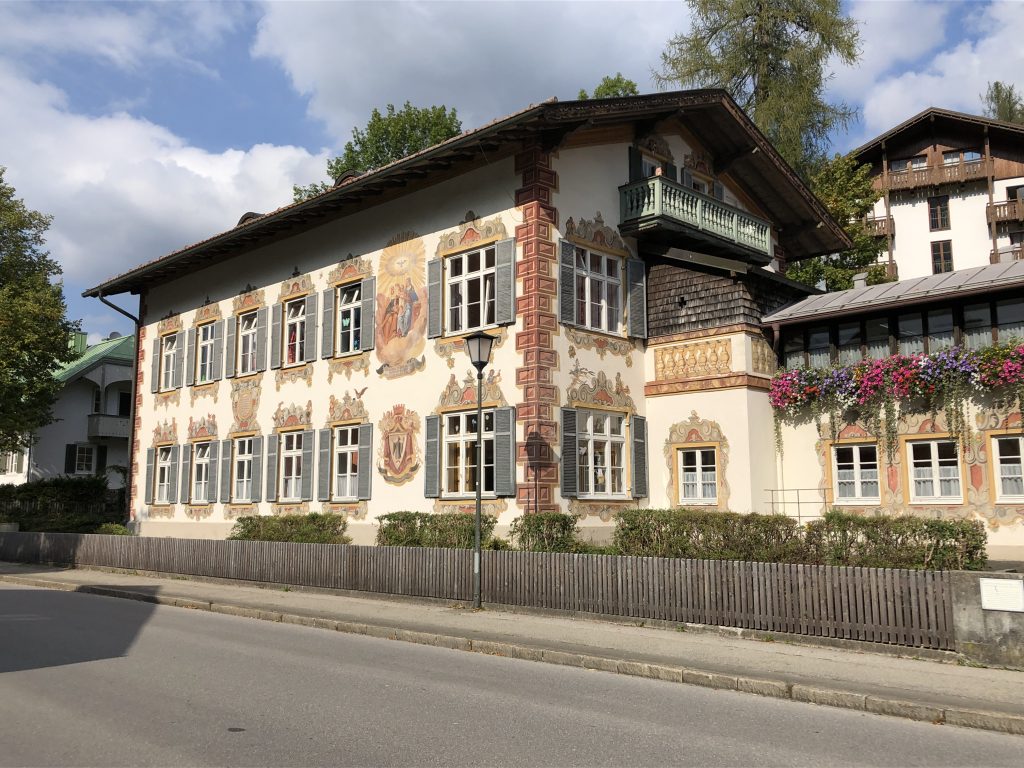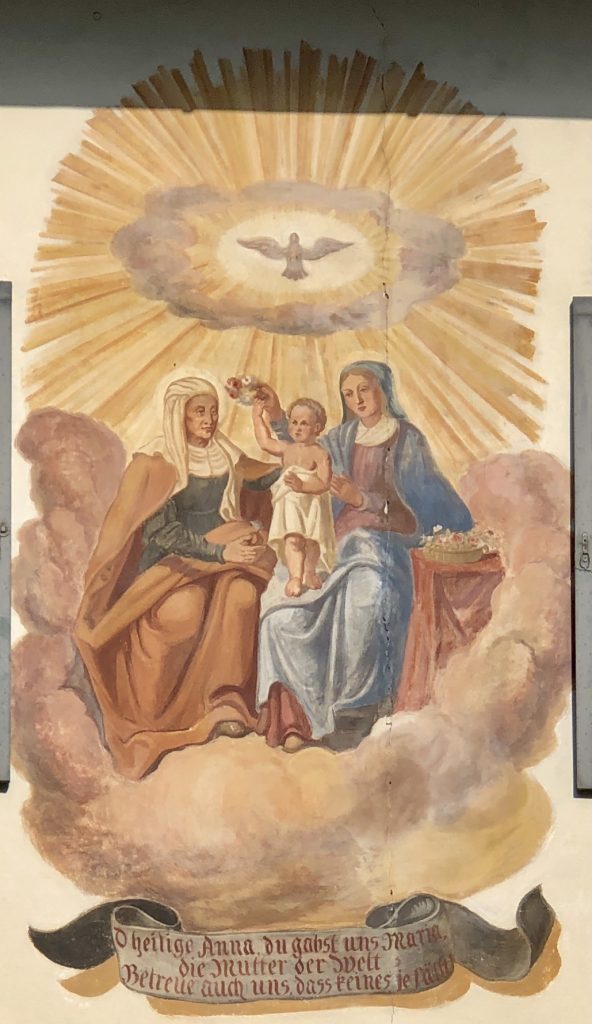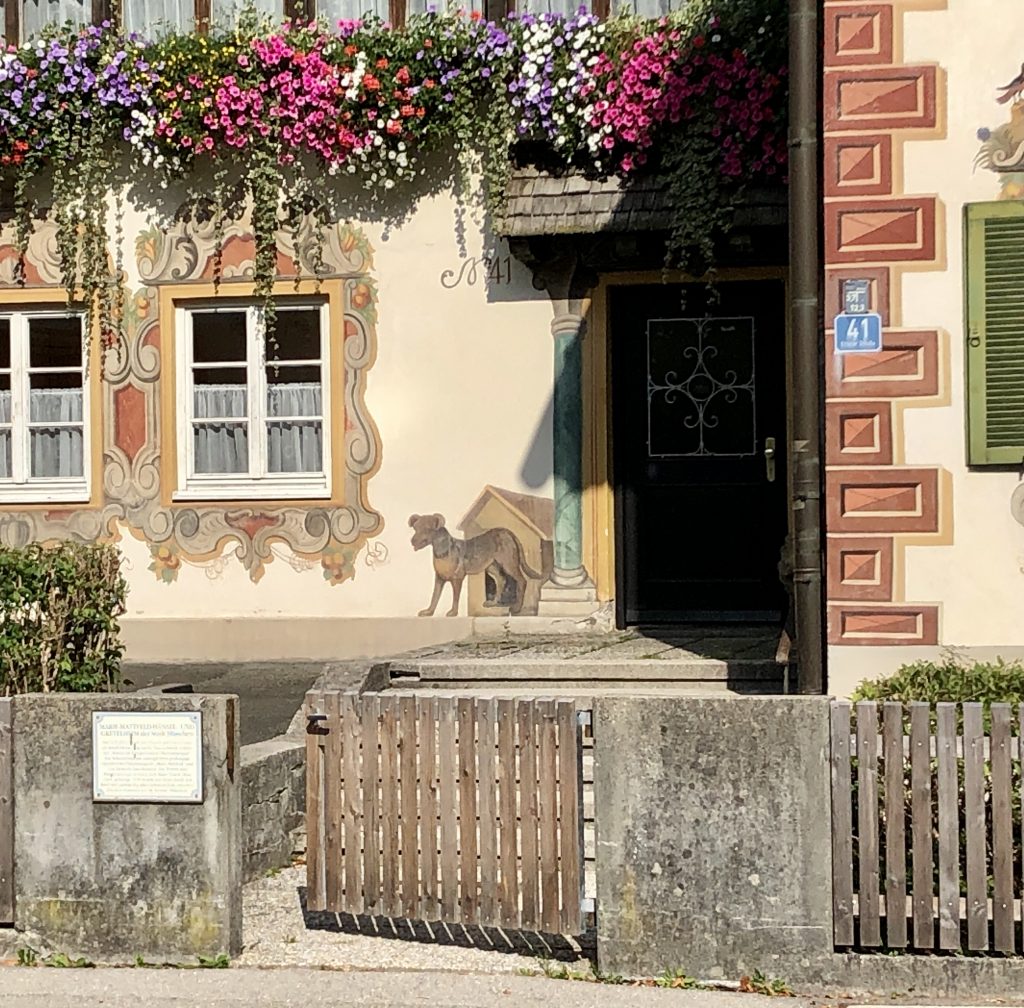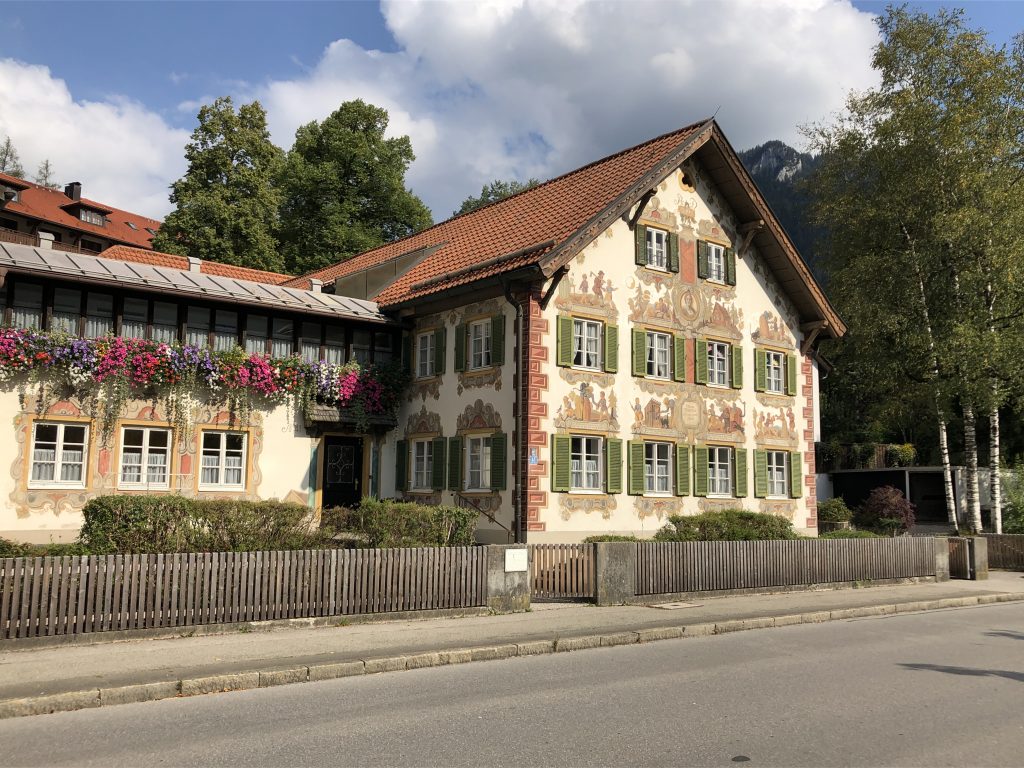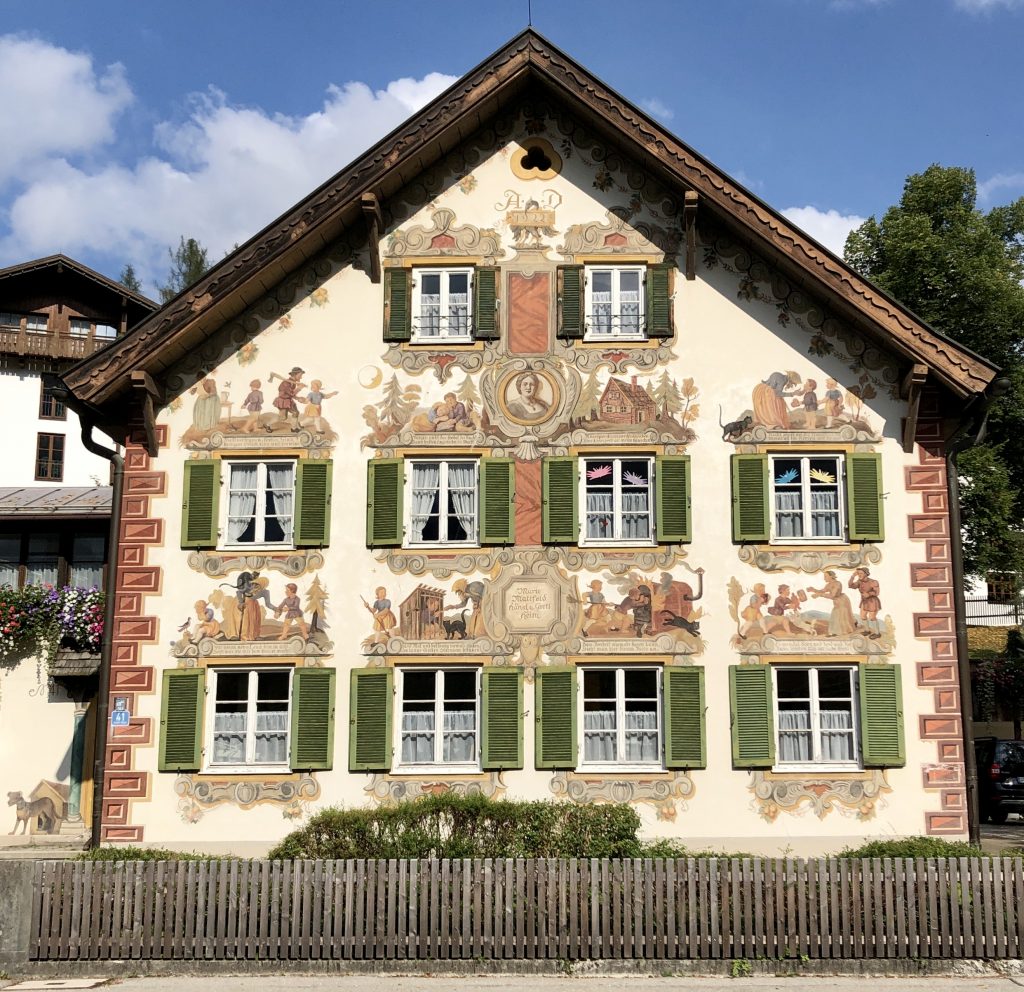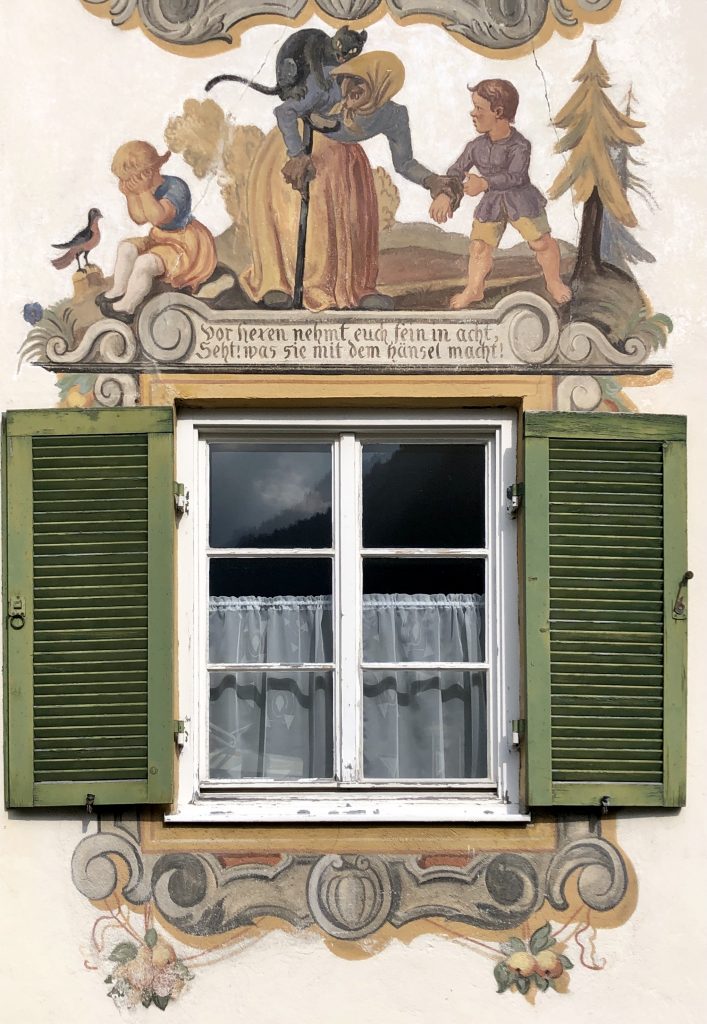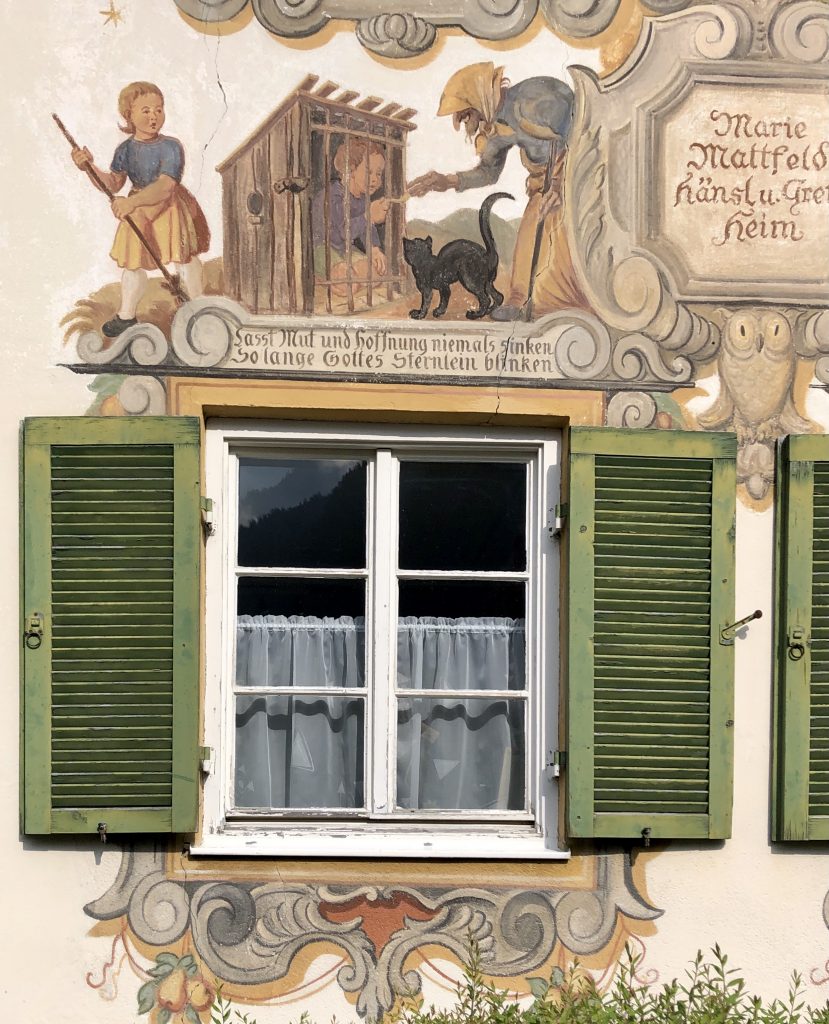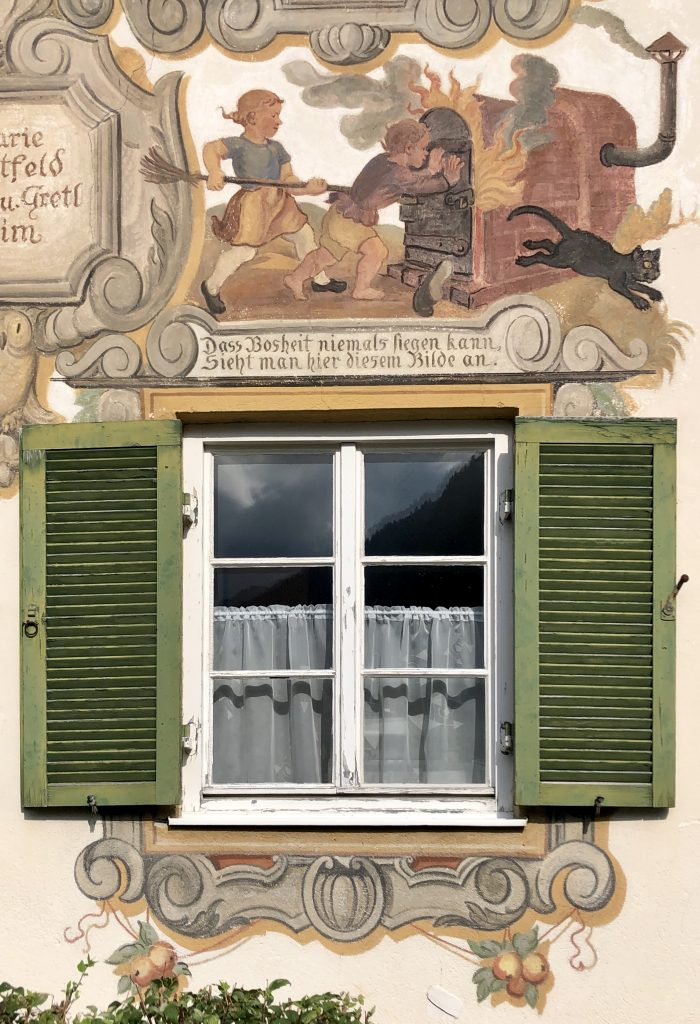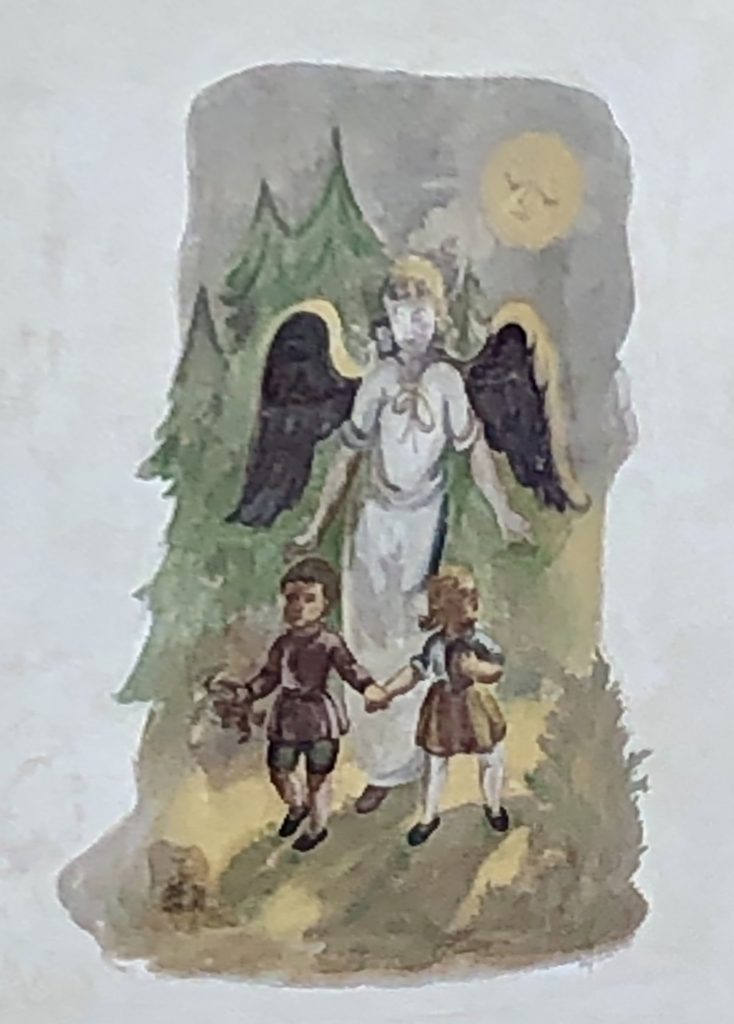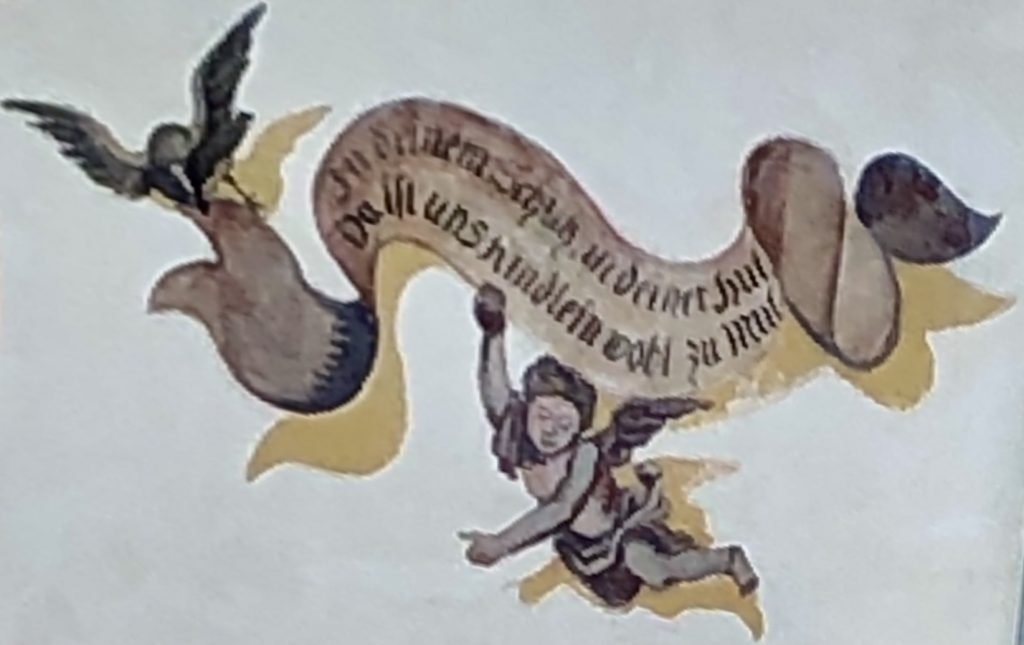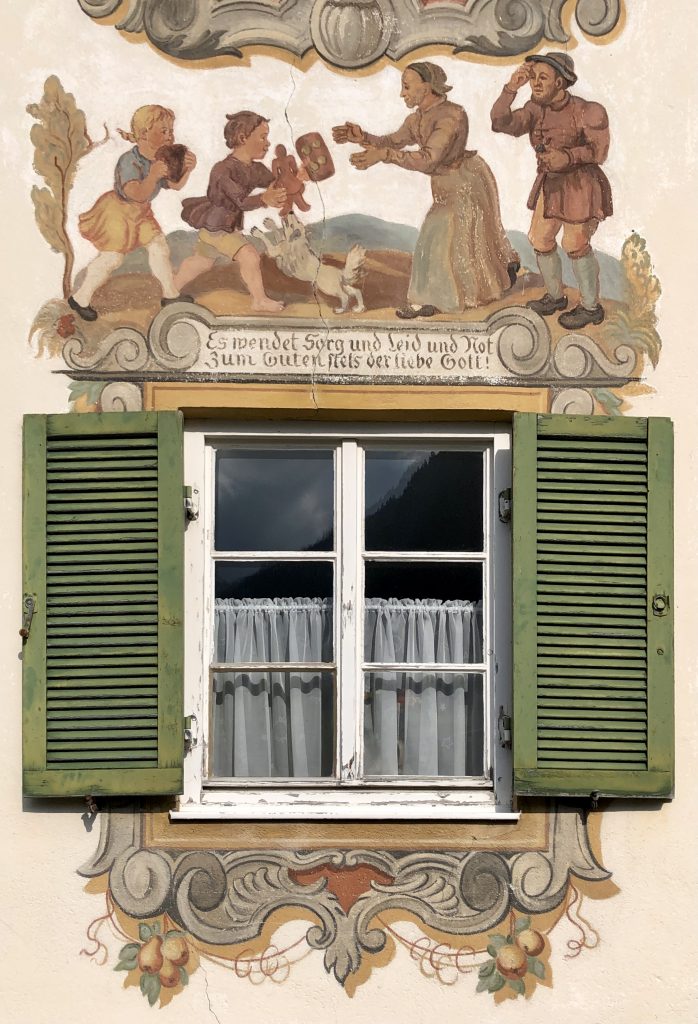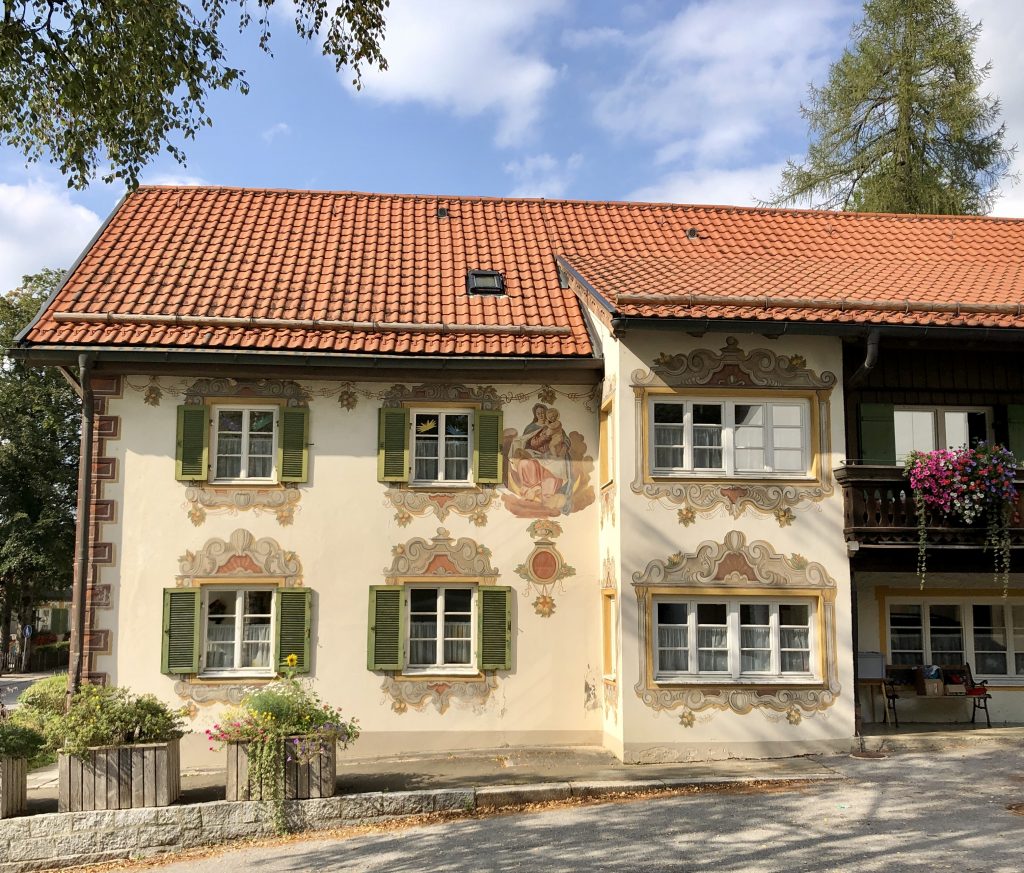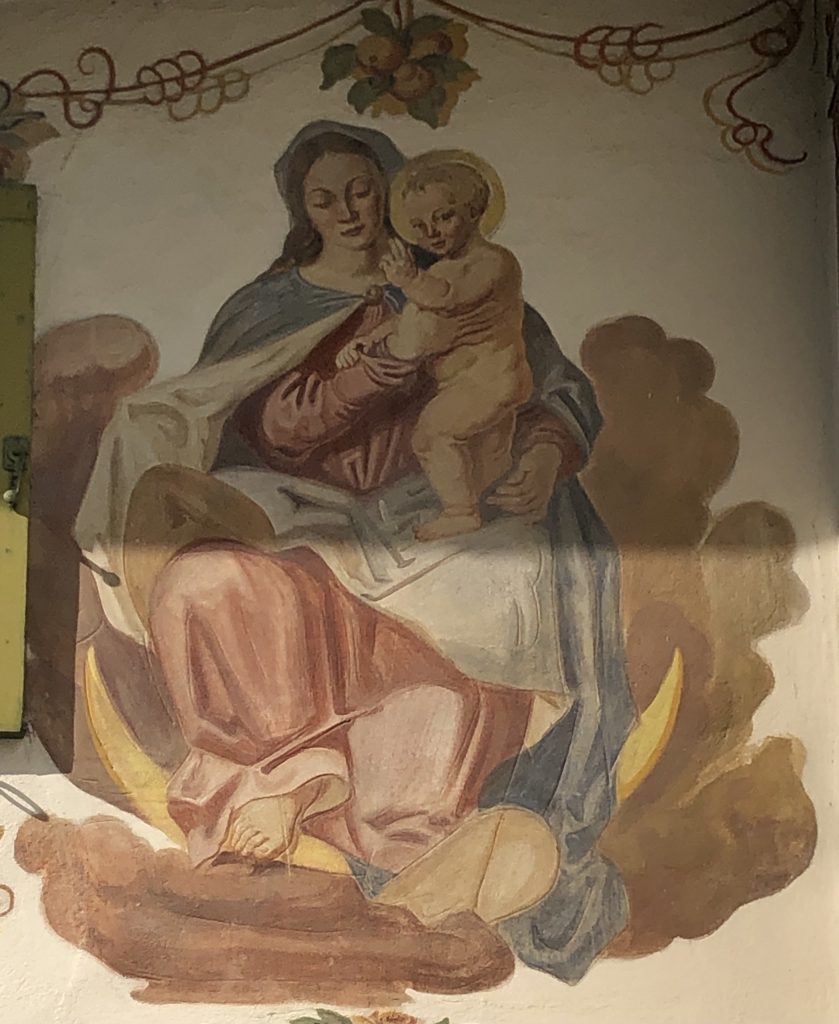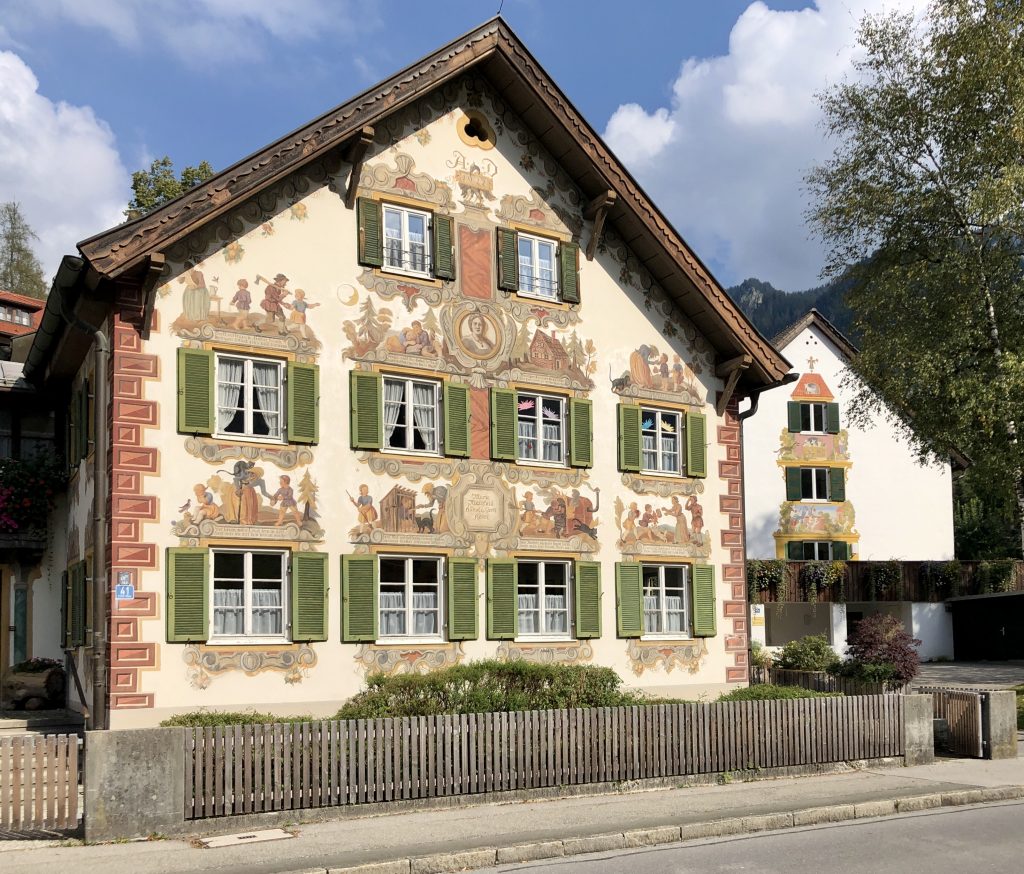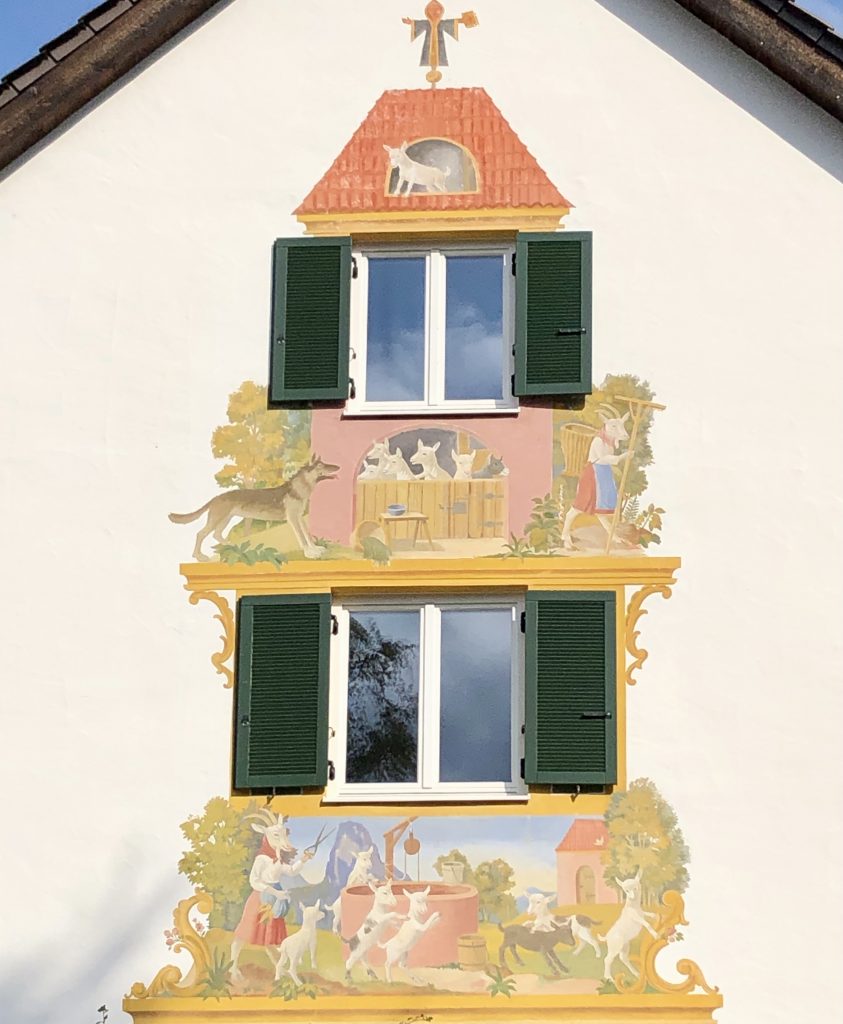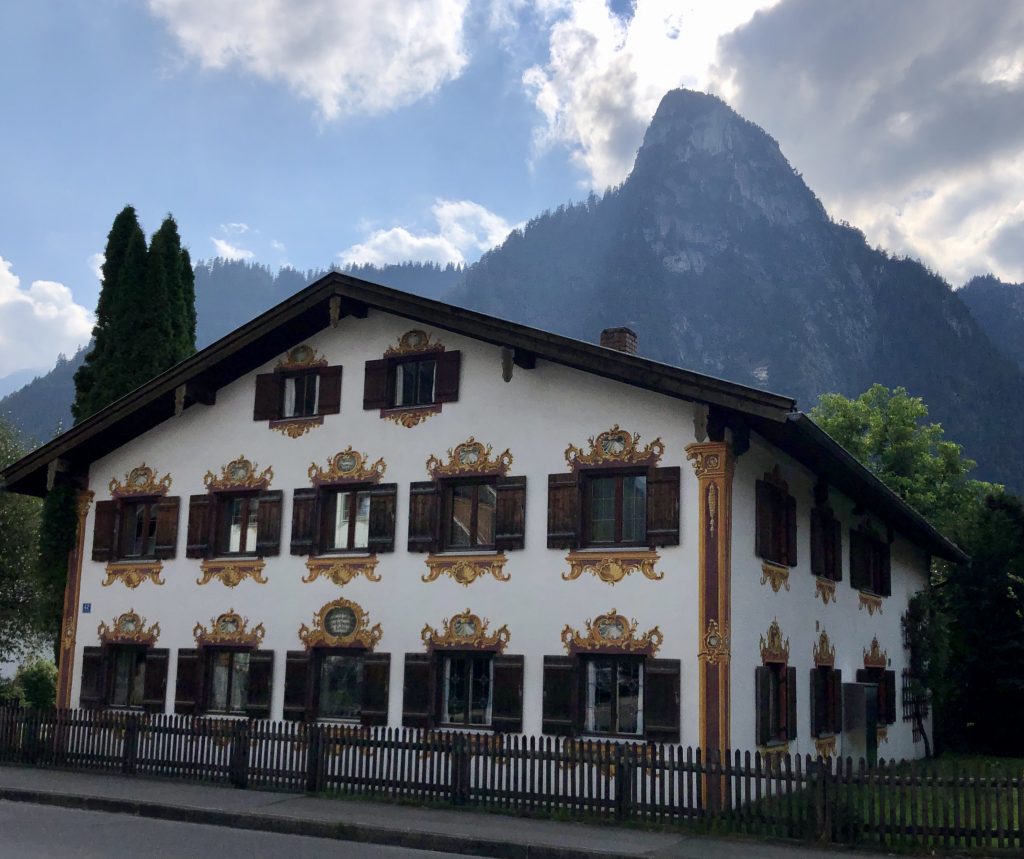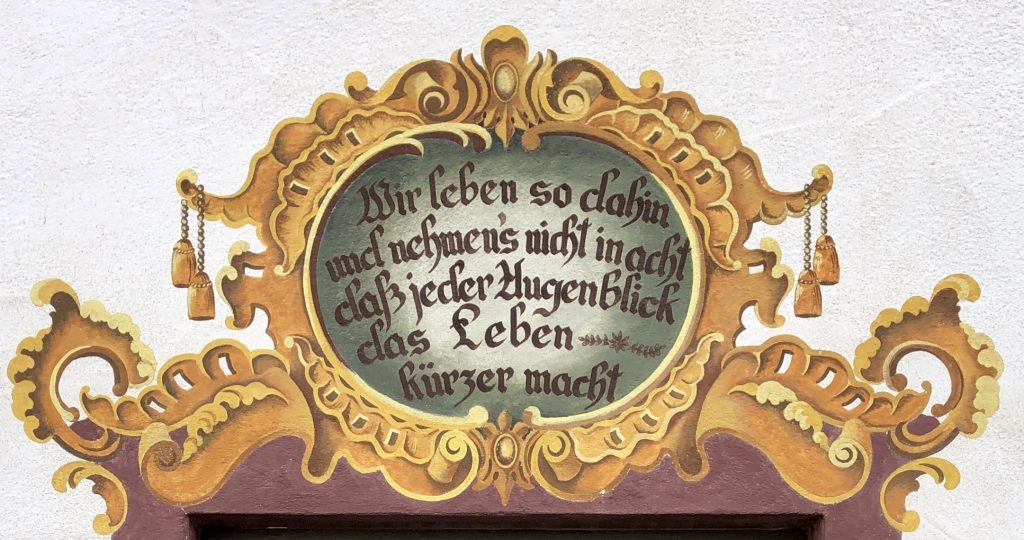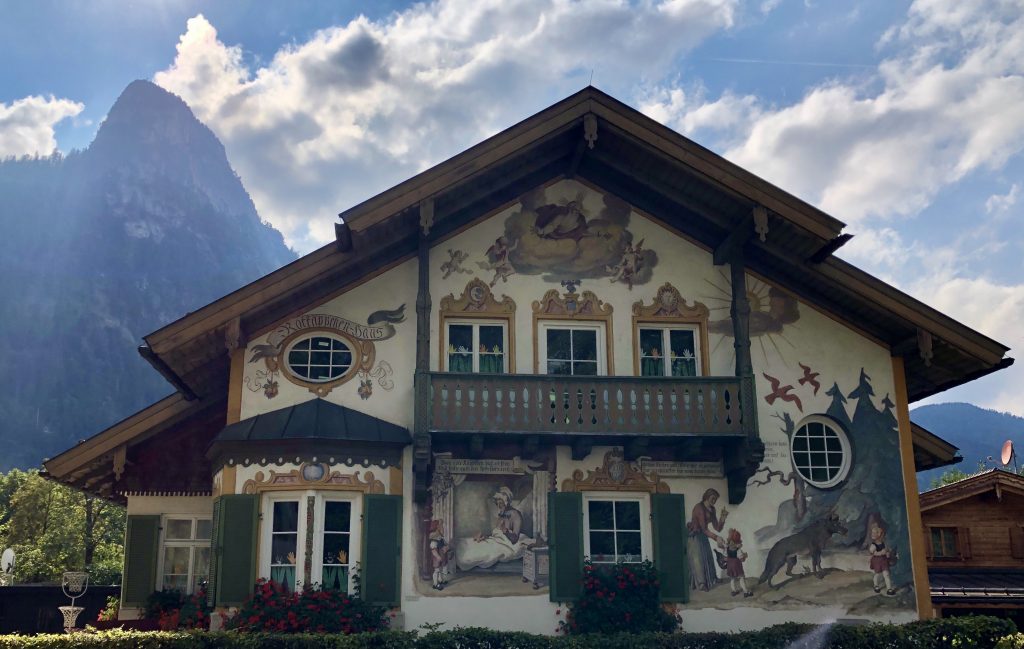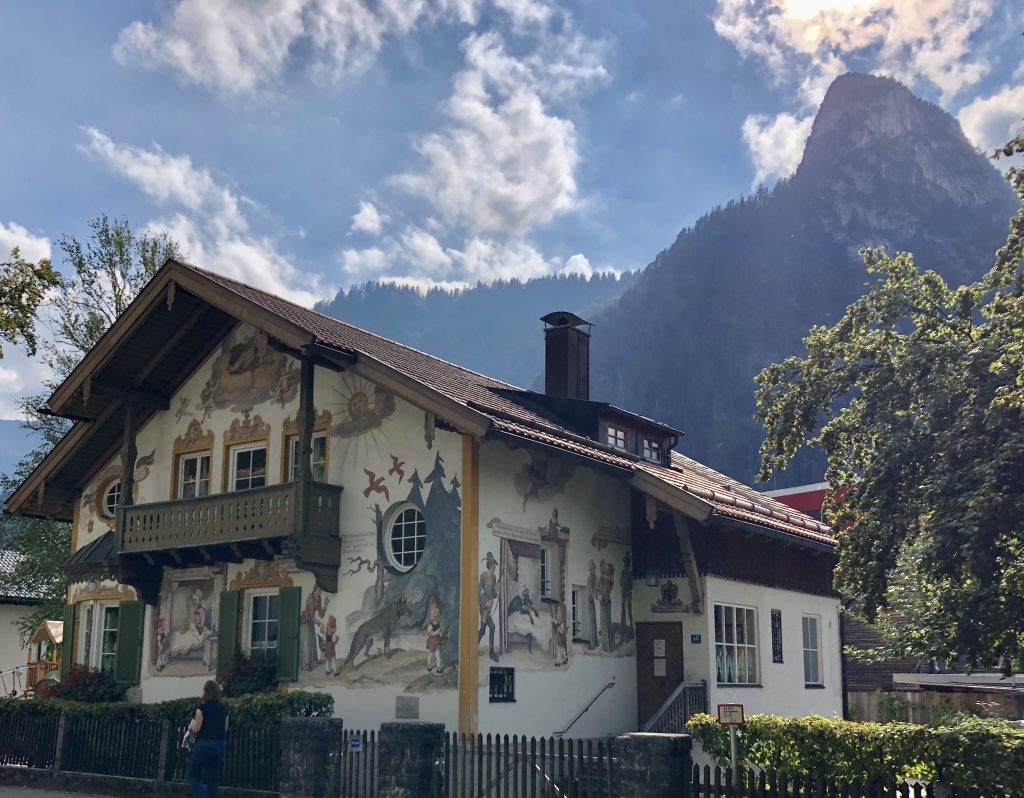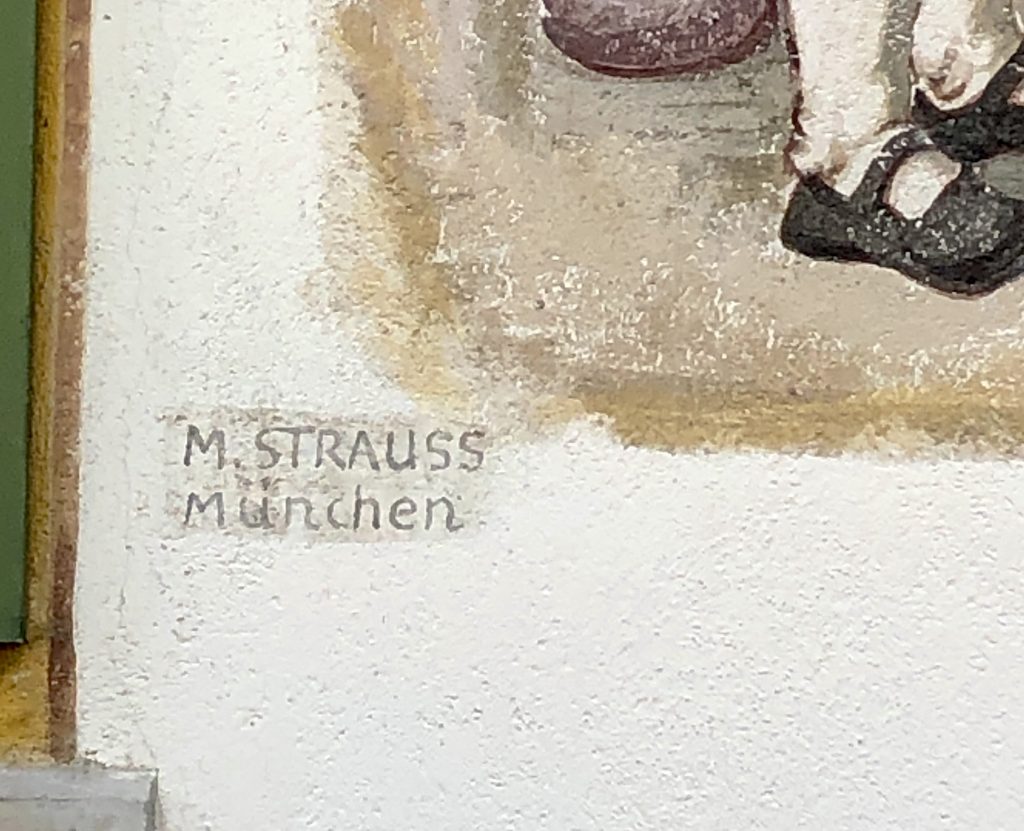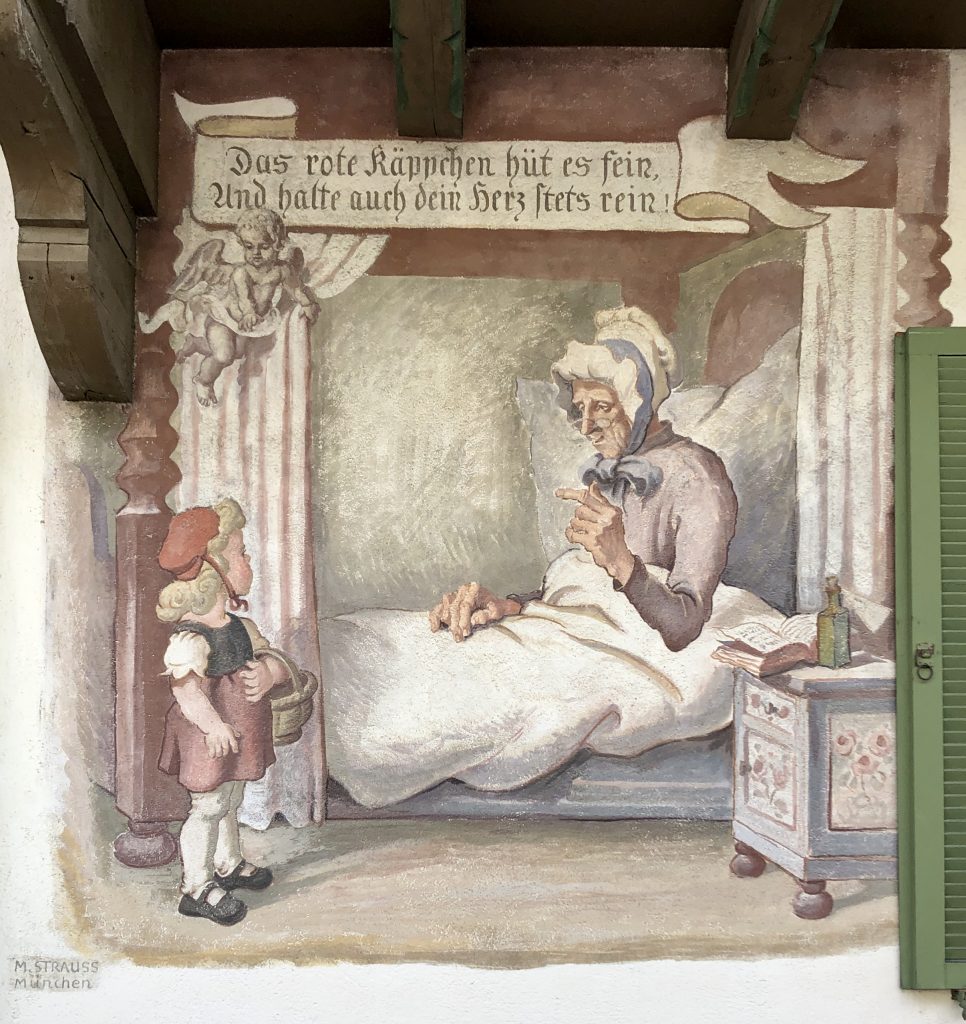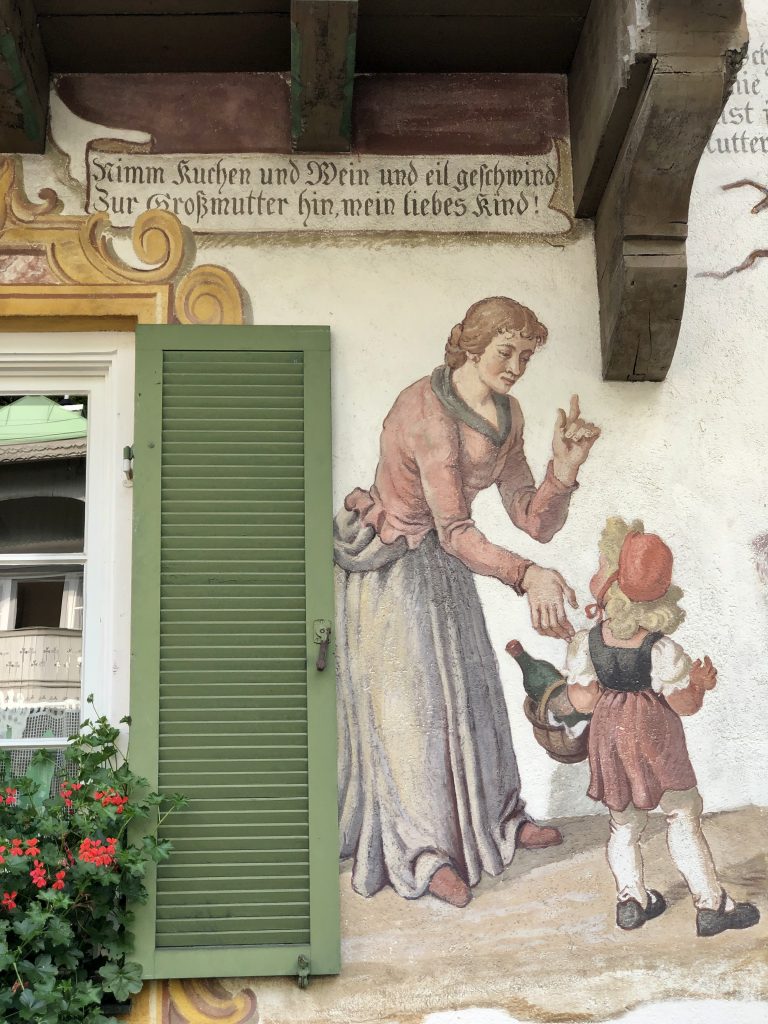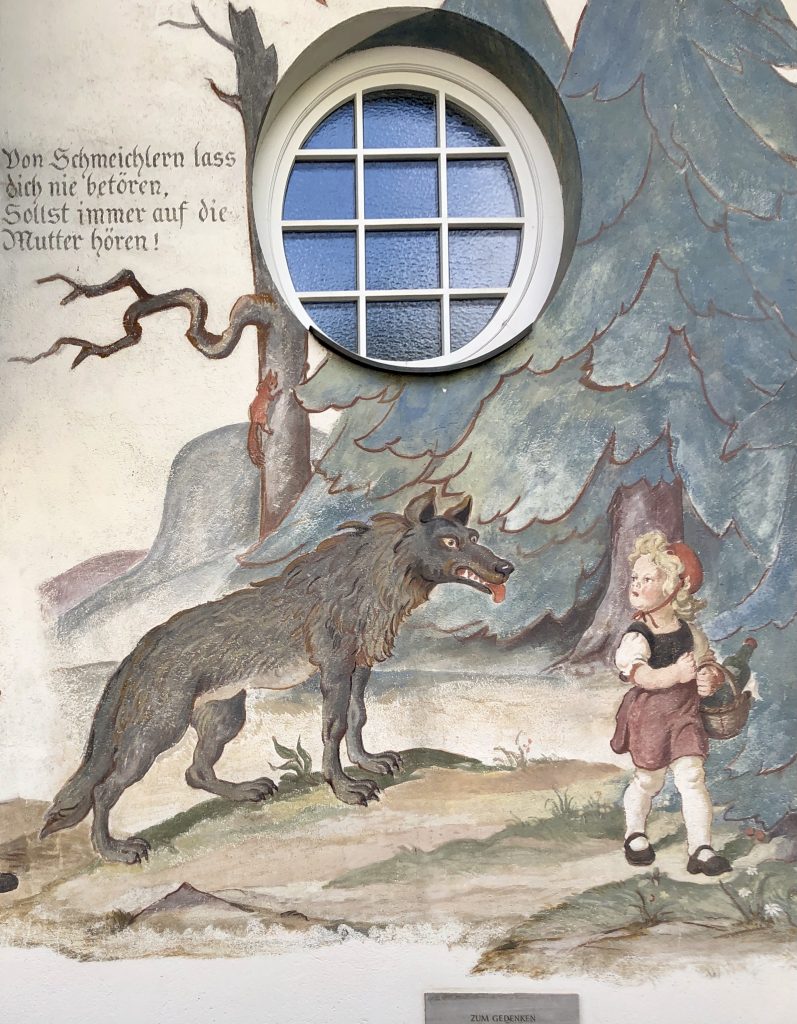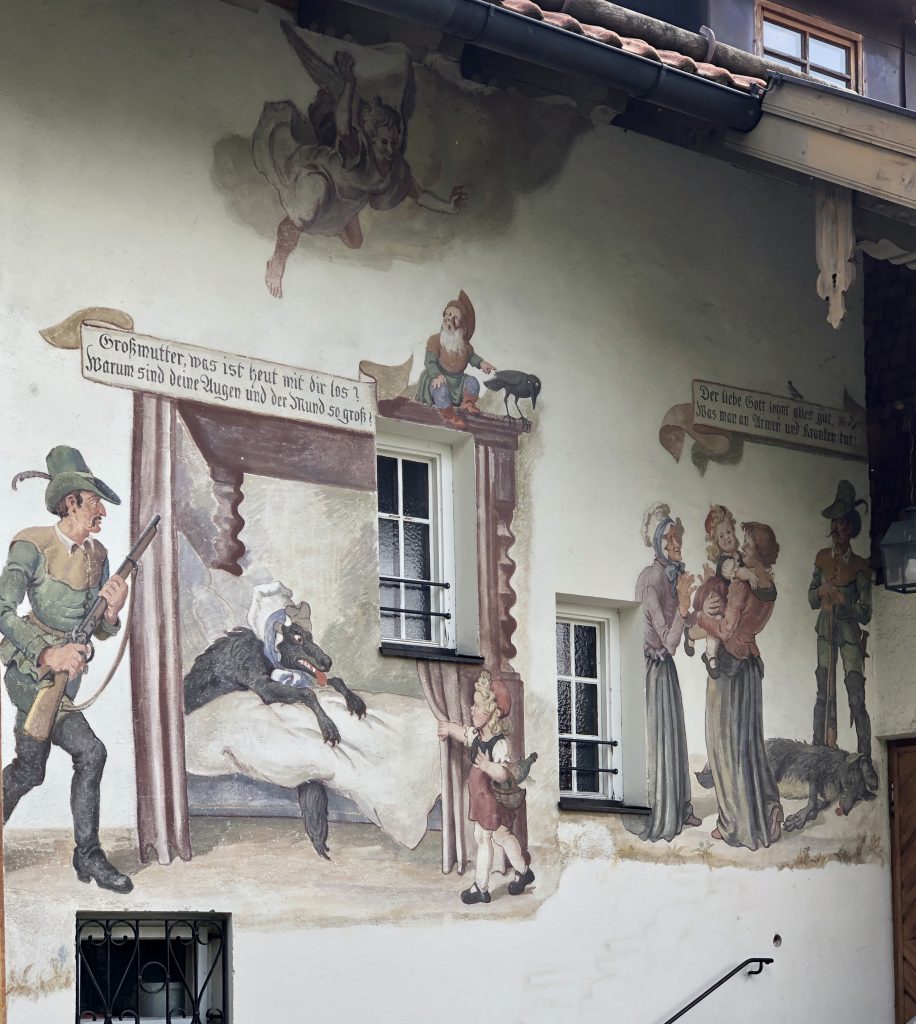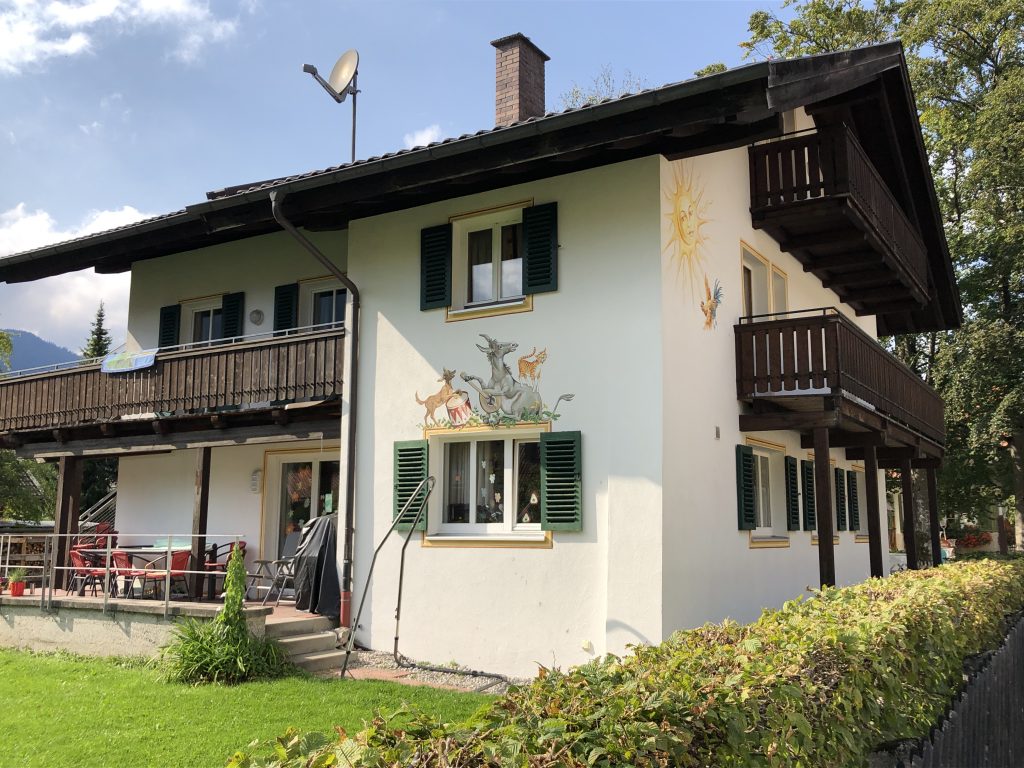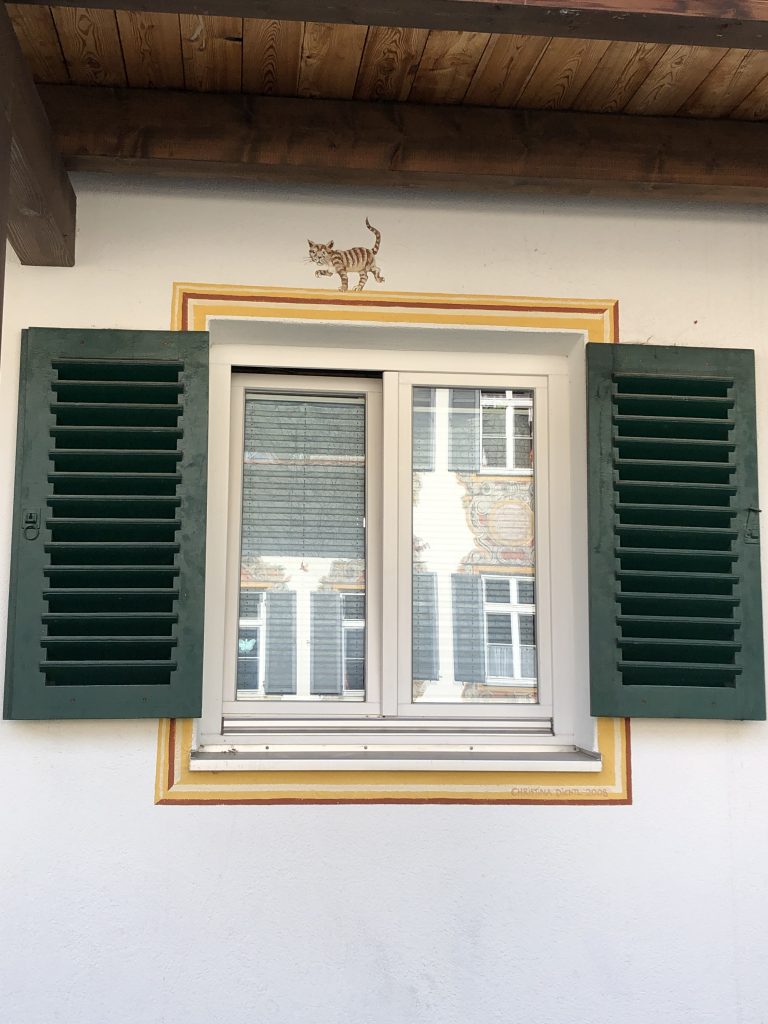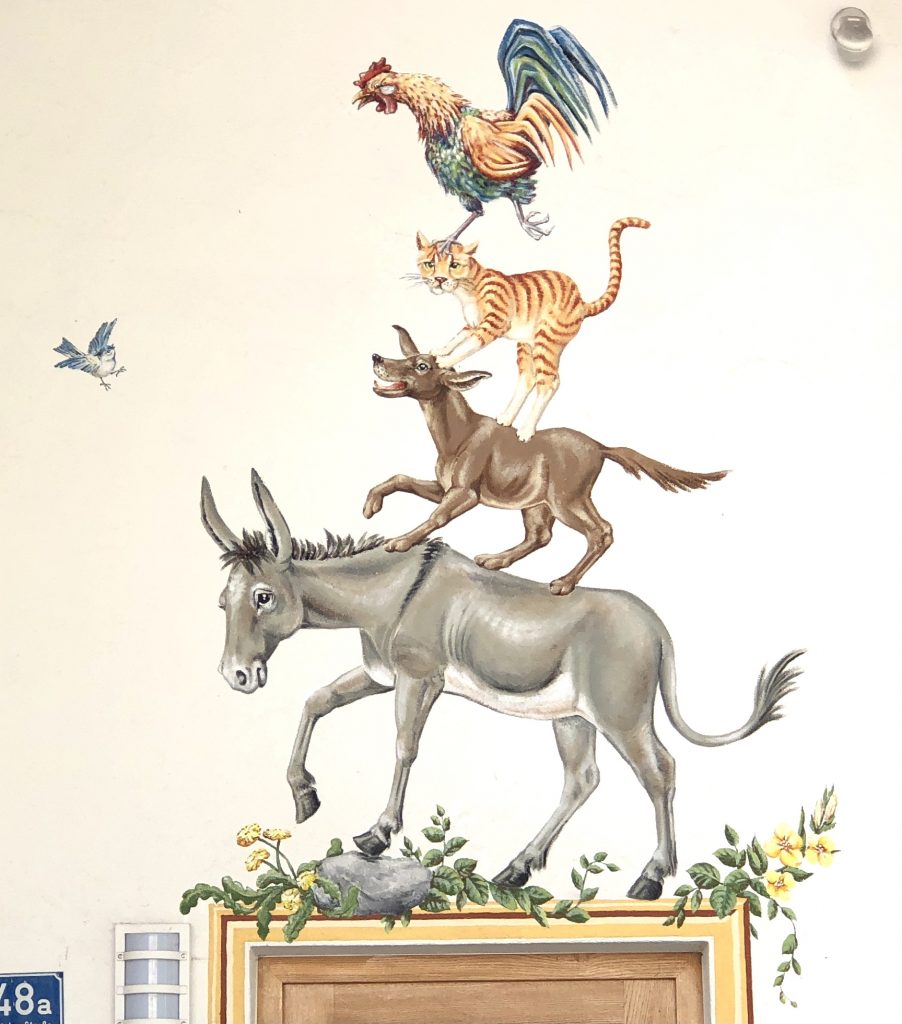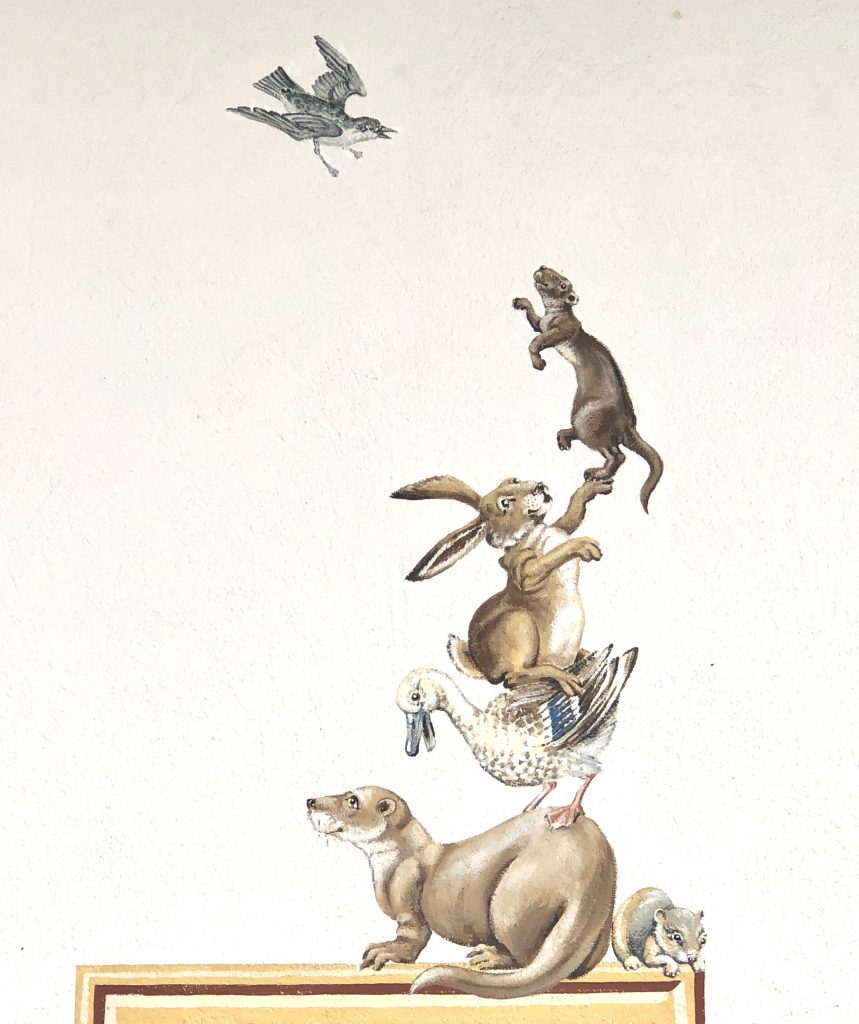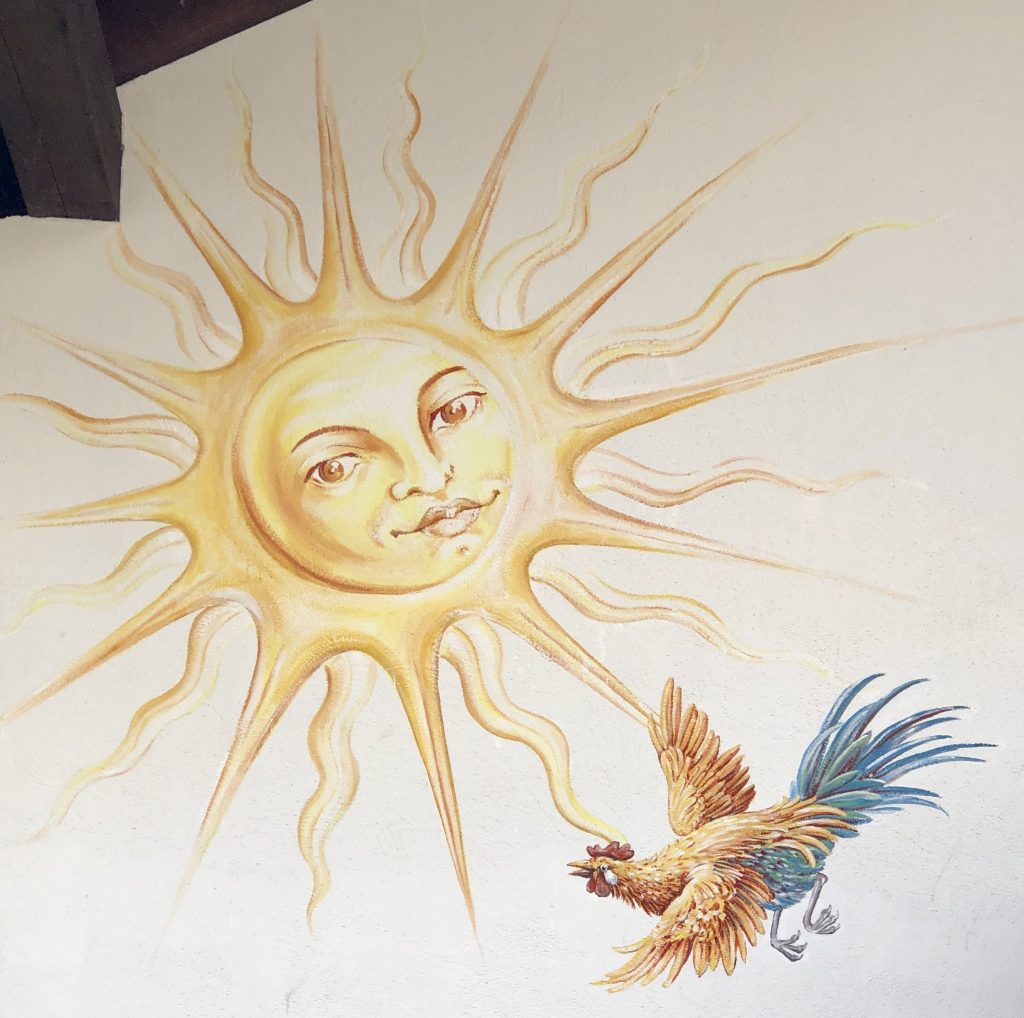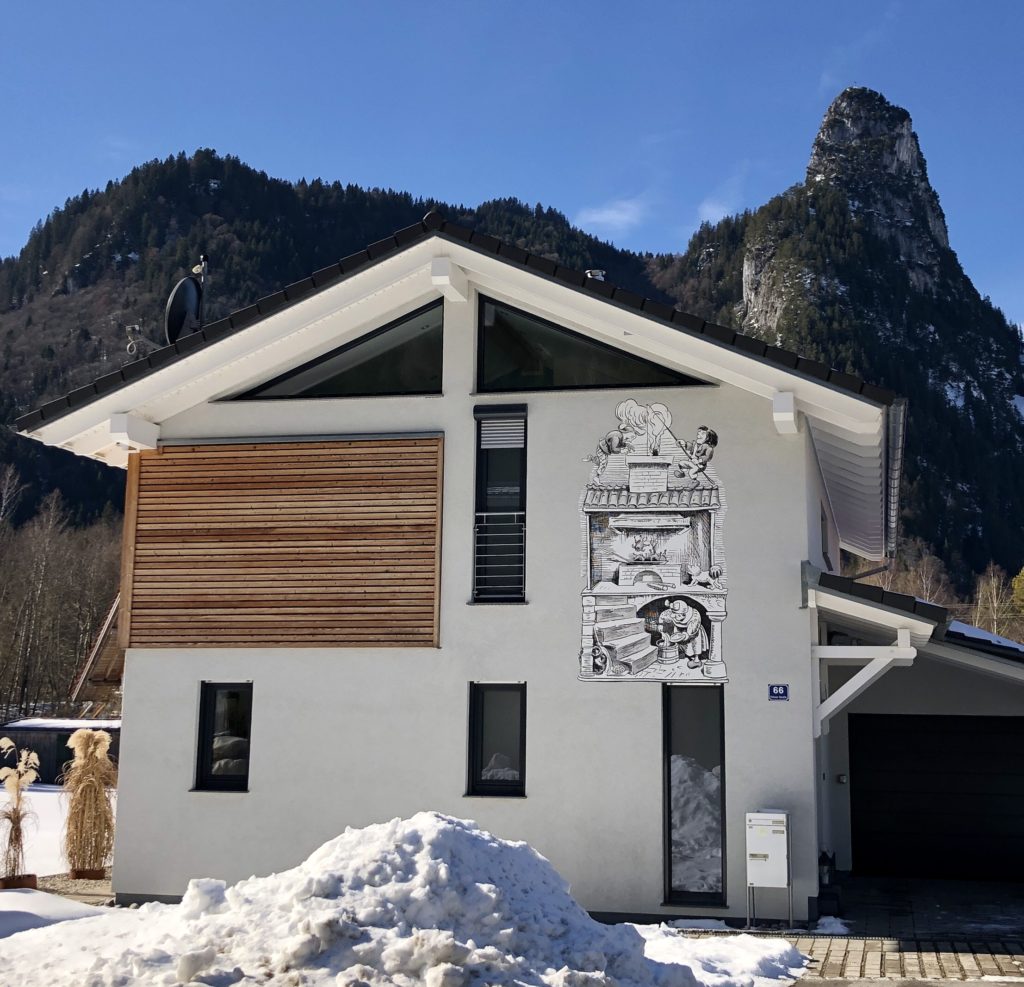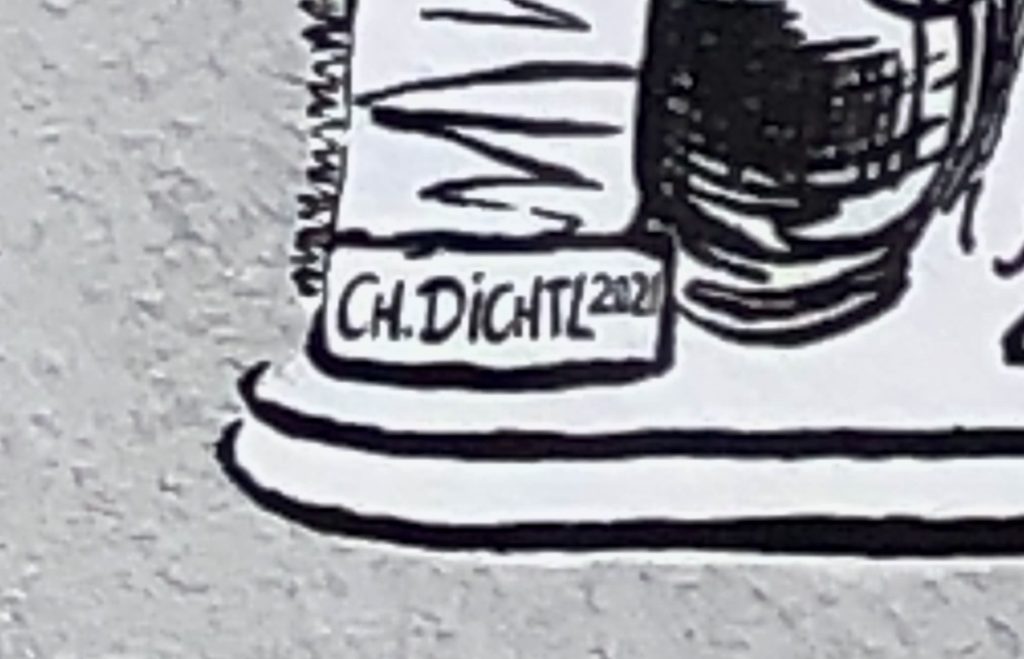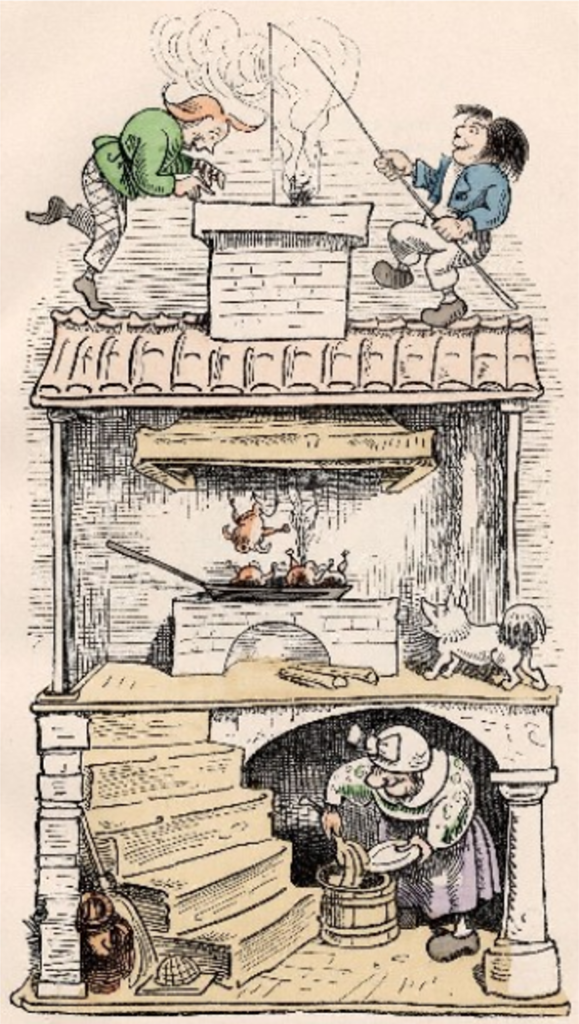- Baur-Heinhold, Margarete. Bemalte Fassaden. Verlag Georg DW Callwey, München, 1975, p. 71: An der Giebelseite berichten allegorische Darstellungen aus dem Jagdleben, an den Langseiten symbolisieren Putten die leiblichen Werke der Barmherzigkeit und die fünf Sinne.
- Baur-Heinhold, Margarete. Bemalte Fassaden. Verlag Georg DW Callwey, München, 1975, p. 99: "Oberammergau, Oberbayern, Ettalerstraße, Kölblhaus. Vermutlich von Franz Zwinck, um 1770. Im Giebel Christus im Schoße Gottvaters, über der Türe Anna Selbdritt."
- Bronner, Franz Joseph. Von Deutscher Sitt' und Art. Munich: Verlag Max Kellerer, 1908, p. 322. "Nr. 127 zeigt am Giebel eine heilige Dreifaltigkeit. Die schönen, reichen Rokokofensterrahmen sind von den Büsten verschiedener Heiligen (Apostel) bekrönt."
- Bronner, Franz Joseph. Von Deutscher Sitt' und Art. Munich: Verlag Max Kellerer, 1908, p. 322, FN: "Haus-Nr. 123 zeigt zwei Engel, welche das Haus von Loretto übers Meer tragen. An dessen Strand links steht St. Augustinus und betrachtet einen im Sande spielenden Knaben. Rechts predigt St. Antonius von Padua den Fischen. Das Ganze ist in den Schutz des Gnadenbildes von Ettal gestellt. Zwinck 1783 pinx."
- Wagner, Rainer. Email correspondence 25 Aug 2021. "Das Giebelbild in der Ettaler Str. 12 stammt im Original von Franz Seraph Zwinck. Zu den Passionsspielen 1900 wurde das Haus aufgestockt und das Bild von einem Füssener Maler in den neuen Giebel übertragen. Diese Darstellung wurde von mir 1982 restauriert."
- Schauer, Martine. Email correspondence 21 April 2021. "[D]as Bild ist erst 1997, von dem Eigentümer Ernst Bierling, an der Hauswand aufgebracht worden und entspricht nicht der klassischen Lüftelmalerei. Das Bild, das einen Stier darstellt, steht symbolisch für den Hl. Lukas - Patron der Handwerker und Künstler."
- Wagner, Rainer. Email correspondence 2 May 2021. "Die übrige Malerei auf dieser Seite nimmt Bezug auf die Passionsspiele in Oberammergau. Über den oberen Fenstern sind Persönlichkeiten abgebildet, die mit den Passionsspielen in Zusammenhang stehen. Obere Fenster von links: Pater Ferdinand Rosner (Passionsspieltext), Pater Othmar Weis (Passionsspieltext), Rochus Dealer (Passionsmusik), Pfarrer Alois Daisenberger( Passionsspieltext). Zwischen den oberen und unteren Fenstern von links die Darstellungen von: Geburt Christi, Eucharistie, Kreuzigung und Auferstehung."
- Wagner, Rainer. Email correspondence 2 May 2021. "Westseite von links: Ein Porträt von St. Lucas, dem Schutzpatron der Maler, mit meiner Signatur und dem Entstehungsjahr der Malerei: 1980. Am nächsten Fenster befindet sich eine Kartusche mit der Inschrift „ Christian Wagner Holzschnitzer“."
- Wagner, Rainer. Email correspondence 2 May 2021. "Ostseite und Hauseingang. Erstes Fenster von links: Darstellung der St. Gisela, der Namenspatronin meiner Schwägerin. Zweites Fenster: Darstellung des St. Christian, dem Namenspatron meines Bruders. Fenster rechts neben der Haustüre: Darstellung der St. Veronika, der Namenspatronin der ältesten Tochter meines Bruders."
- Traub, Ulrich. "Die bayrischen Graffiti; Lüftlmalerei gestern und heute." Internet-Reisemagazin schwarzaufweiss GbR. www.schwarzaufweiss.de/deutschland/mittenwald-oberammergau-lueftlmalerei.htm. Last viewed 17 Jan 2022: "Christina Dichtl gehört zu den wenigen, die neben Restaurierungen auch eigene Lüftlmalereien ausführen. „Leider viel zu selten“, räumt die Künstlerin aus Bad Bayersoien ein. In Oberammergau hat sie eine Interpretation der „Bremer Stadtmusikanten“ auf die Fassade eines Kinderheims gemalt. Das Motiv hatten die Bewohner ausgewählt. Es befindet sich in guter Gesellschaft, an den Nachbarhäusern kann man sich nämlich auch in die Abenteuer von „Hänsel und Gretel“ und „Rotkäppchen“ vertiefen."
- Conversation with the artist on February 10, 2022.
- Conversation with the artist on February 10, 2022.
Lüftlmalerei
A street by street guide to the fresco and facade paintings in the Garmisch-Partenkirchen district
